(This post is the 4th of 5 about my July 2022 trip to the United Kingdom. See previous posts here: Overview | Manchester, Ayr, Glasgow, & Edinburgh | Island Tour Part I)
Note: Click on any of the photos to view them larger.
Day 10: Ullapool to Outer Hebrides (Isle of Lewis: Port of Ness, Butt of Lewis, Truiseil Stone)
After our free day in Ullapool, my two fellow travelers doing the entire 10-day trip and I joined our new group of travel companions for the remainder of the tour, as well as our new driver-guide, Iain. Thankfully, it was another great group of travelers- 14 of us in total.

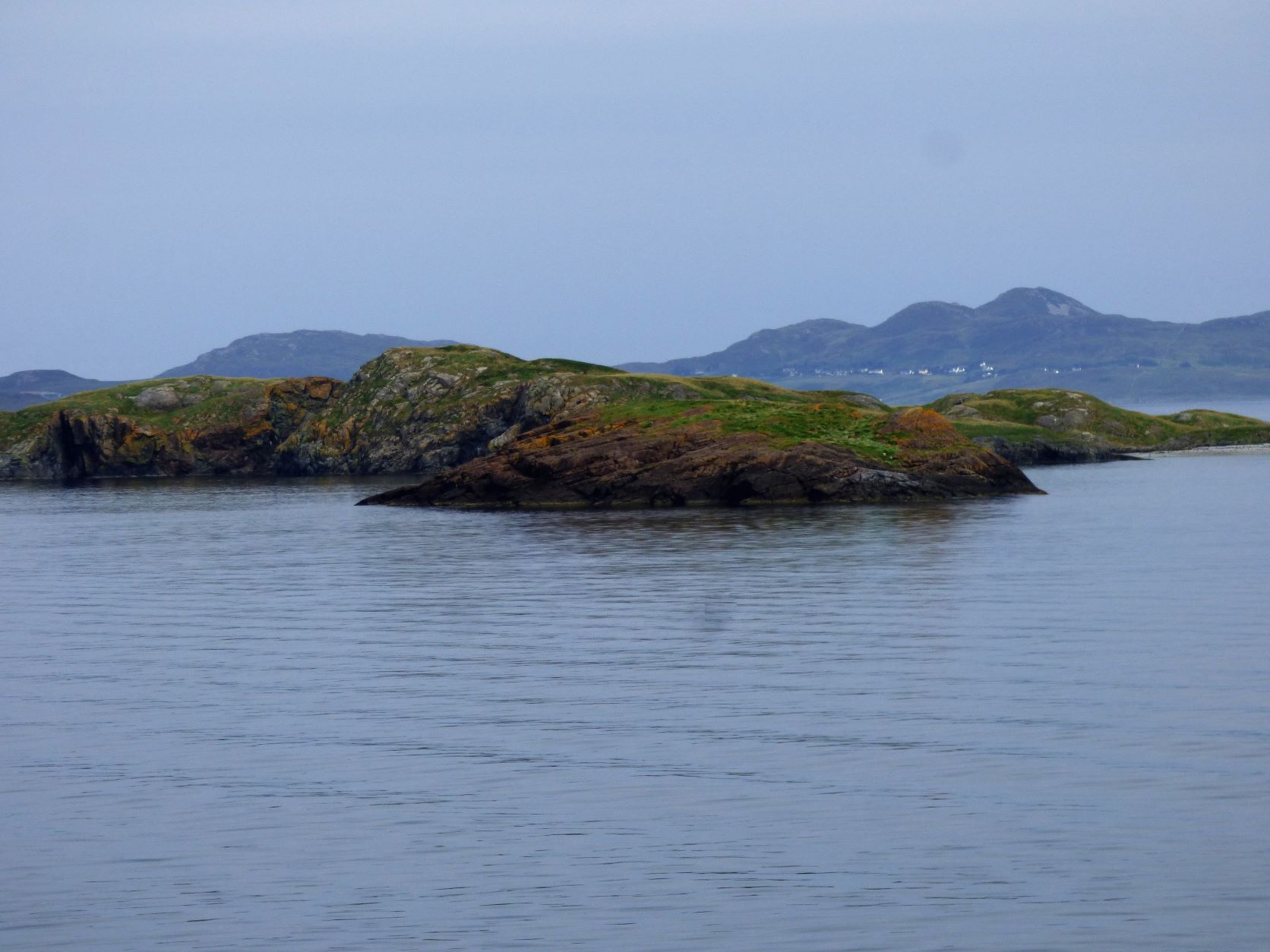
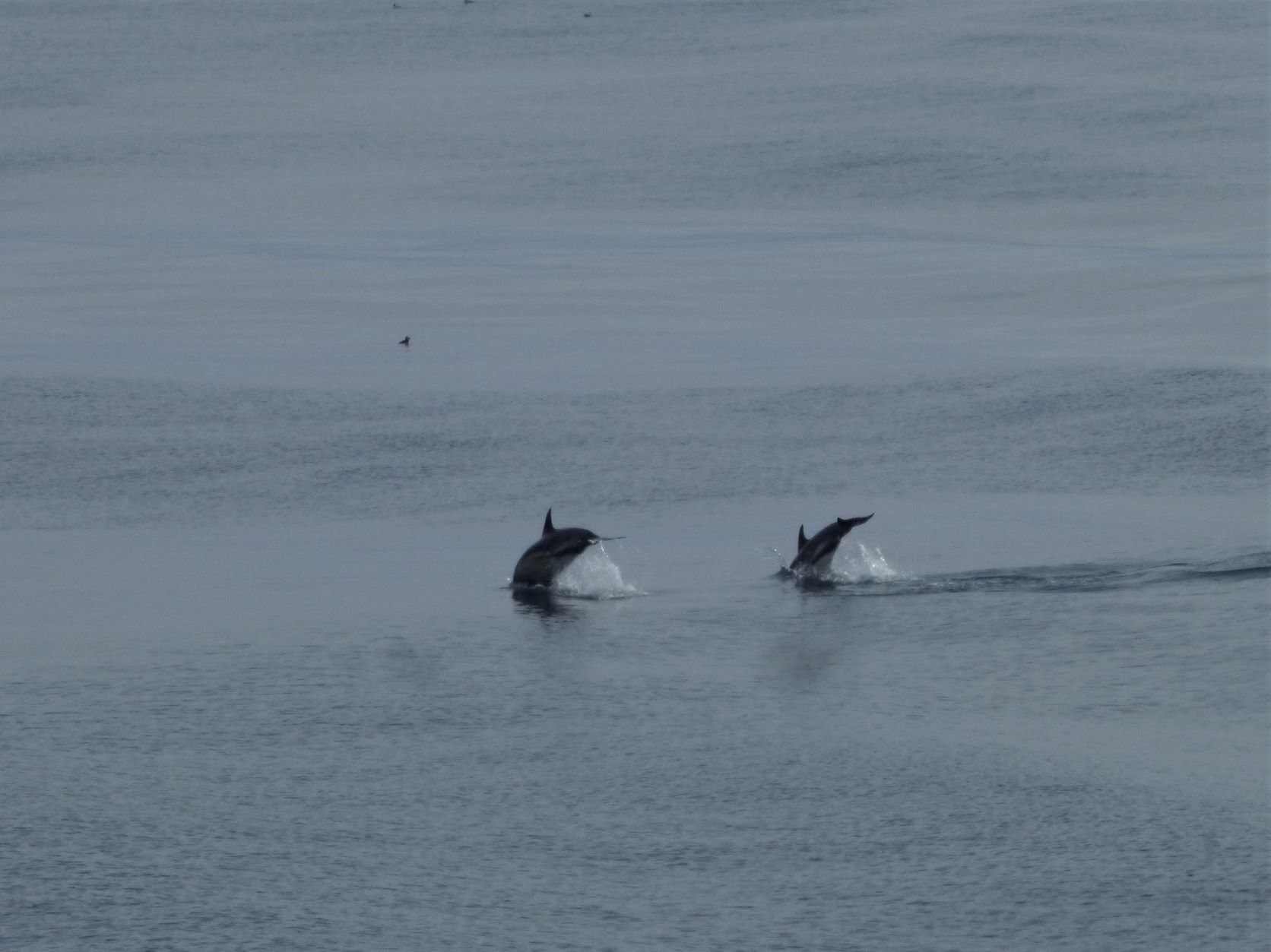
After getting picked up from our accommodation in Ullapool, we headed to the dock, where we got on the ferry to Lewis and Harris, part of the Outer Hebrides, another archipelago of islands. The Outer Hebrides include 15 inhabited islands, and over 50 uninhabited islands, and are located to the west of the mainland of Scotland. The ferry ride was about two and a half hours long. I spent most of the ride on the outside deck with one of my new friends, Jessy. We passed a number of dolphin pods along the way.
Once we arrived on Lewis and Harris, our guide drove us around the main city of Stornoway briefly before giving us time to explore the town on foot. Compared to the places we’d been so far on the tour, I was a bit disappointed by Stornoway. The town seemed a bit run-down, perhaps a result of the pandemic and its effect on the tourism industry. That said, there was a very nice information center by the harbor, where we were able to get a number of free maps.
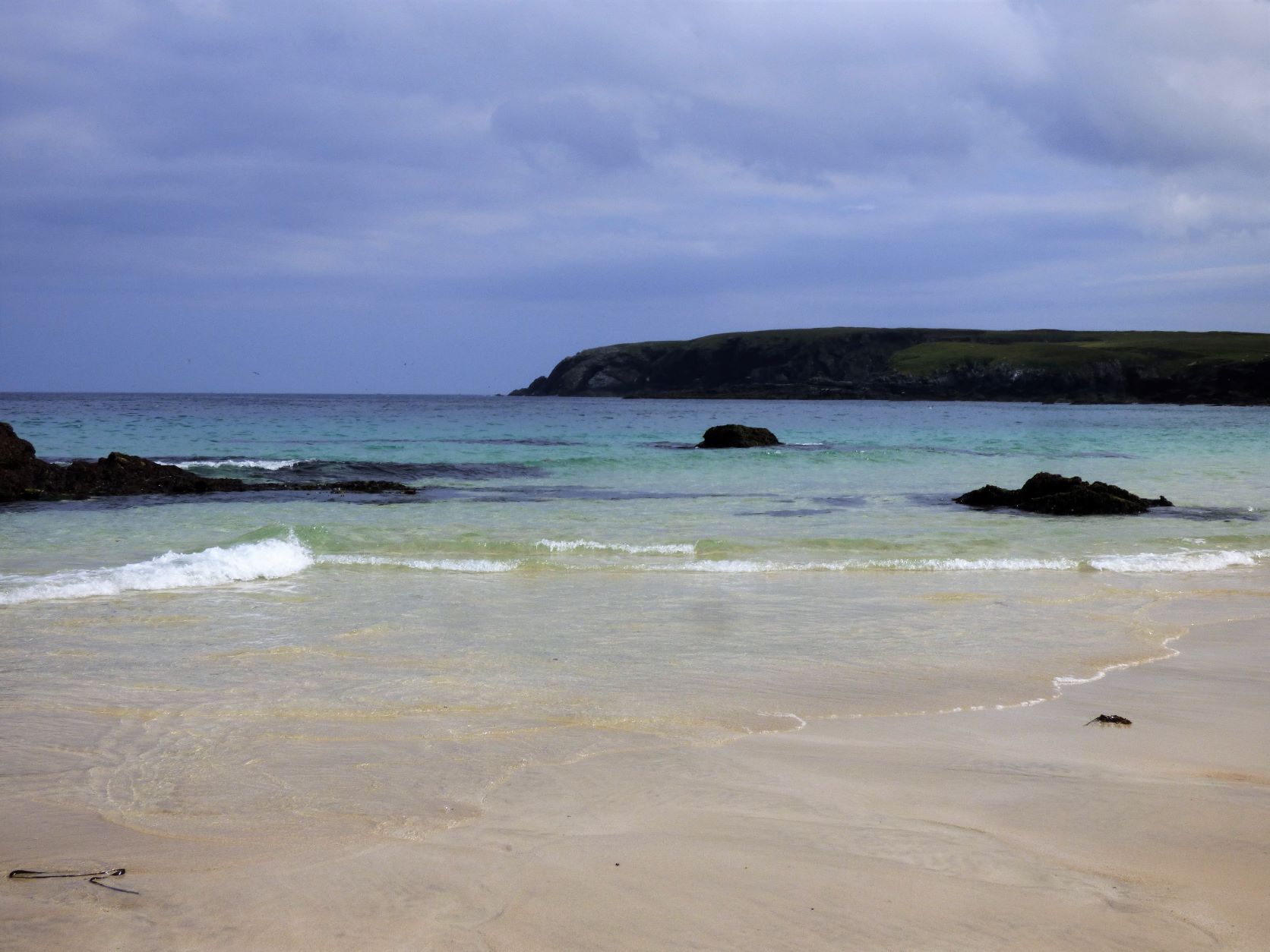
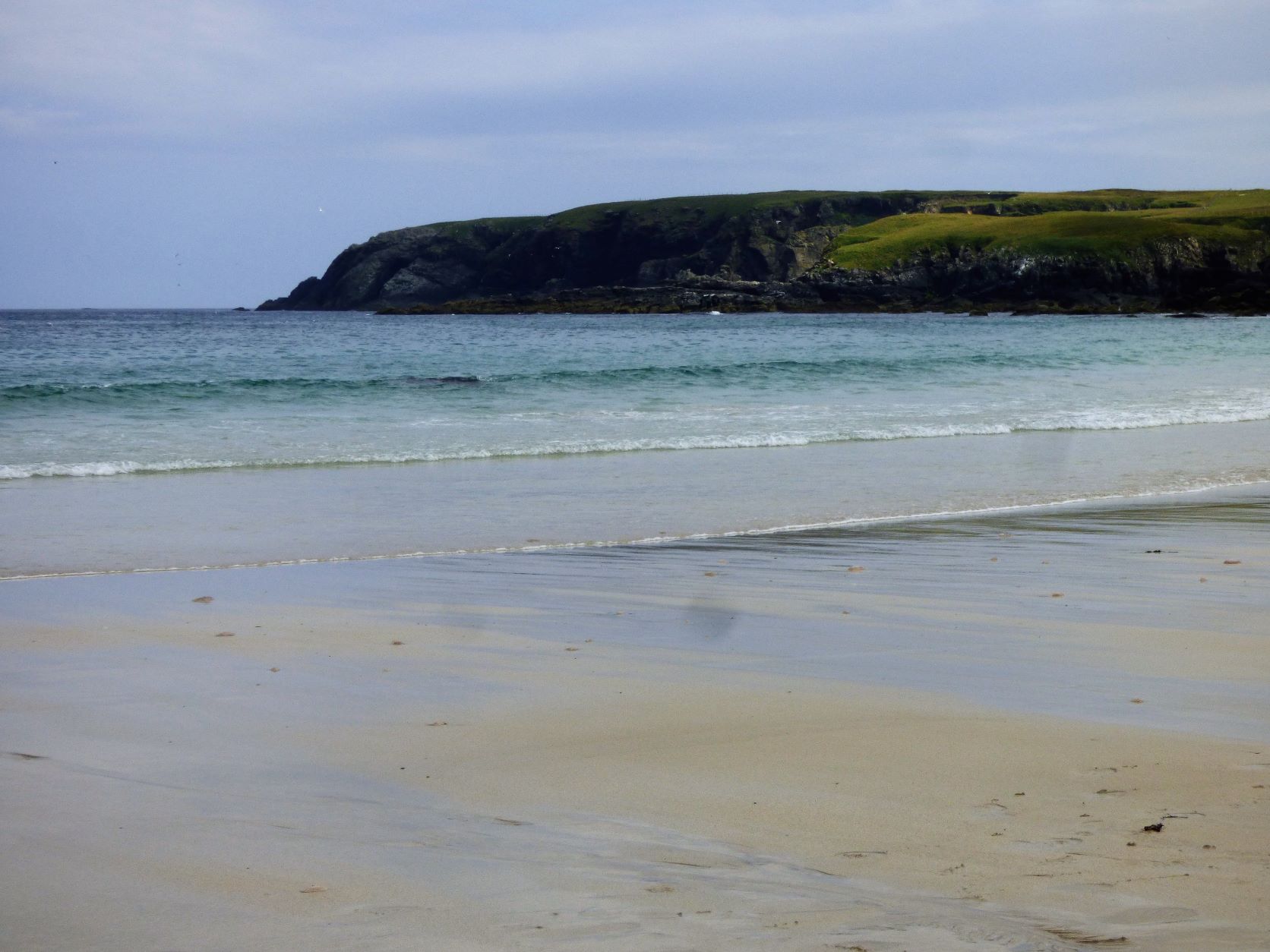
In the afternoon, we got back in the van and headed towards the Port of Ness, a beautiful, sandy beach. The water, though quite cold, was a beautiful turquoise color. Scotland isn’t particularly well known for its beaches because the water is cold year-round, but the Outer Hebrides in particular has a number of stunningly beautiful beaches.
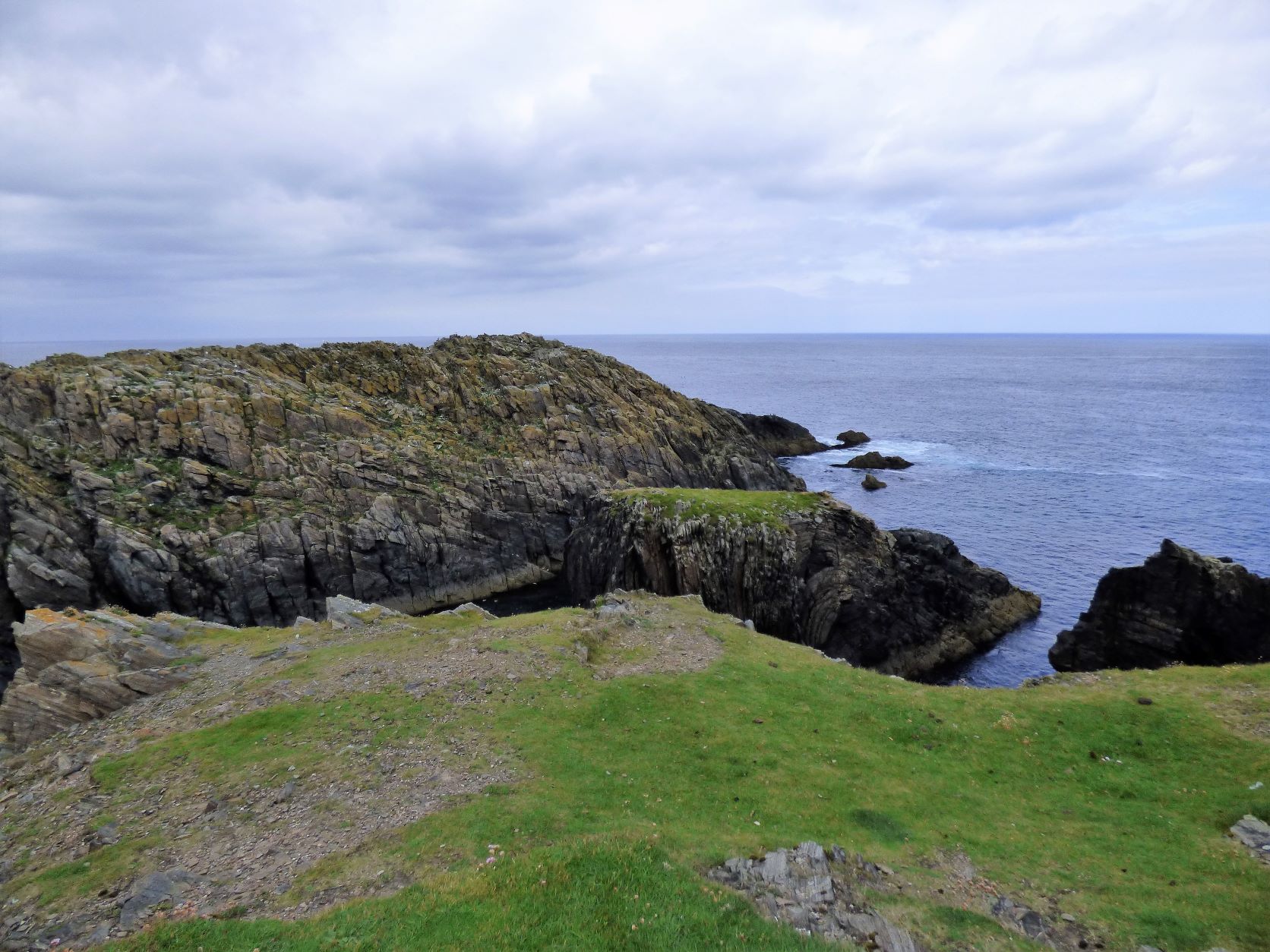

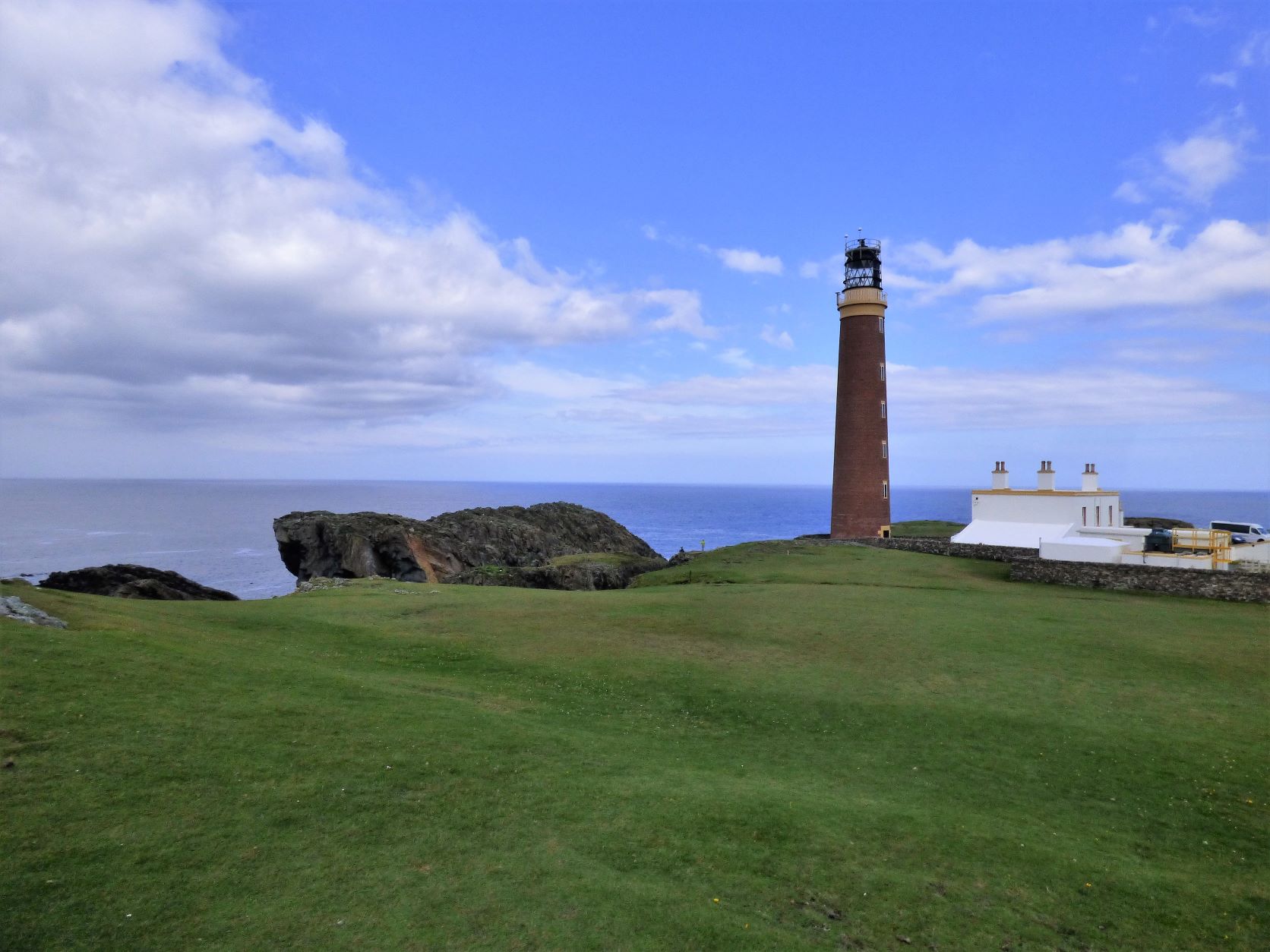
We then drove to the Butt of Lewis, where there is a beautiful cliff with a large lighthouse perched on top. When you’re on the Butt of Lewis, there is nothing between you and North America.
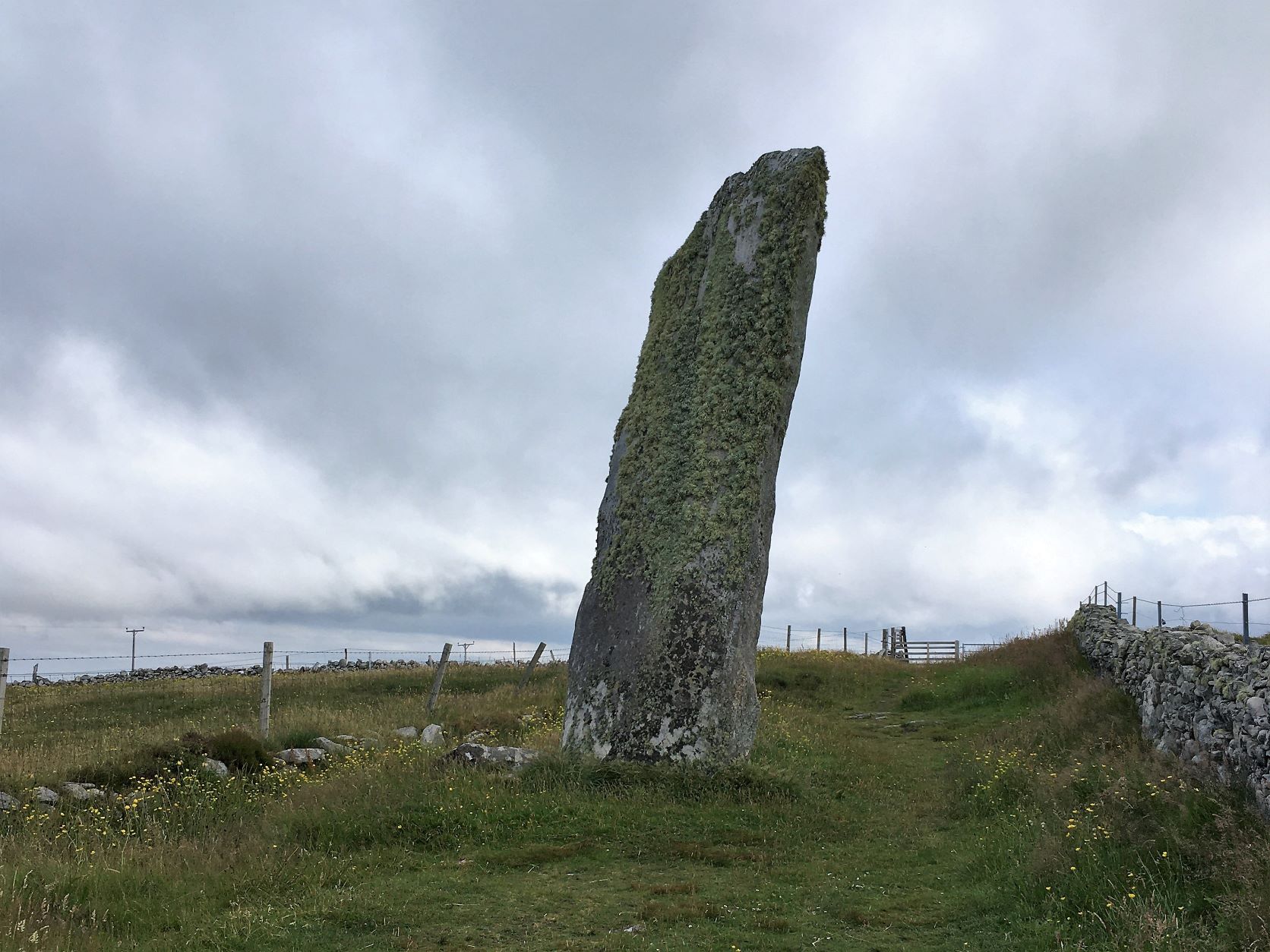
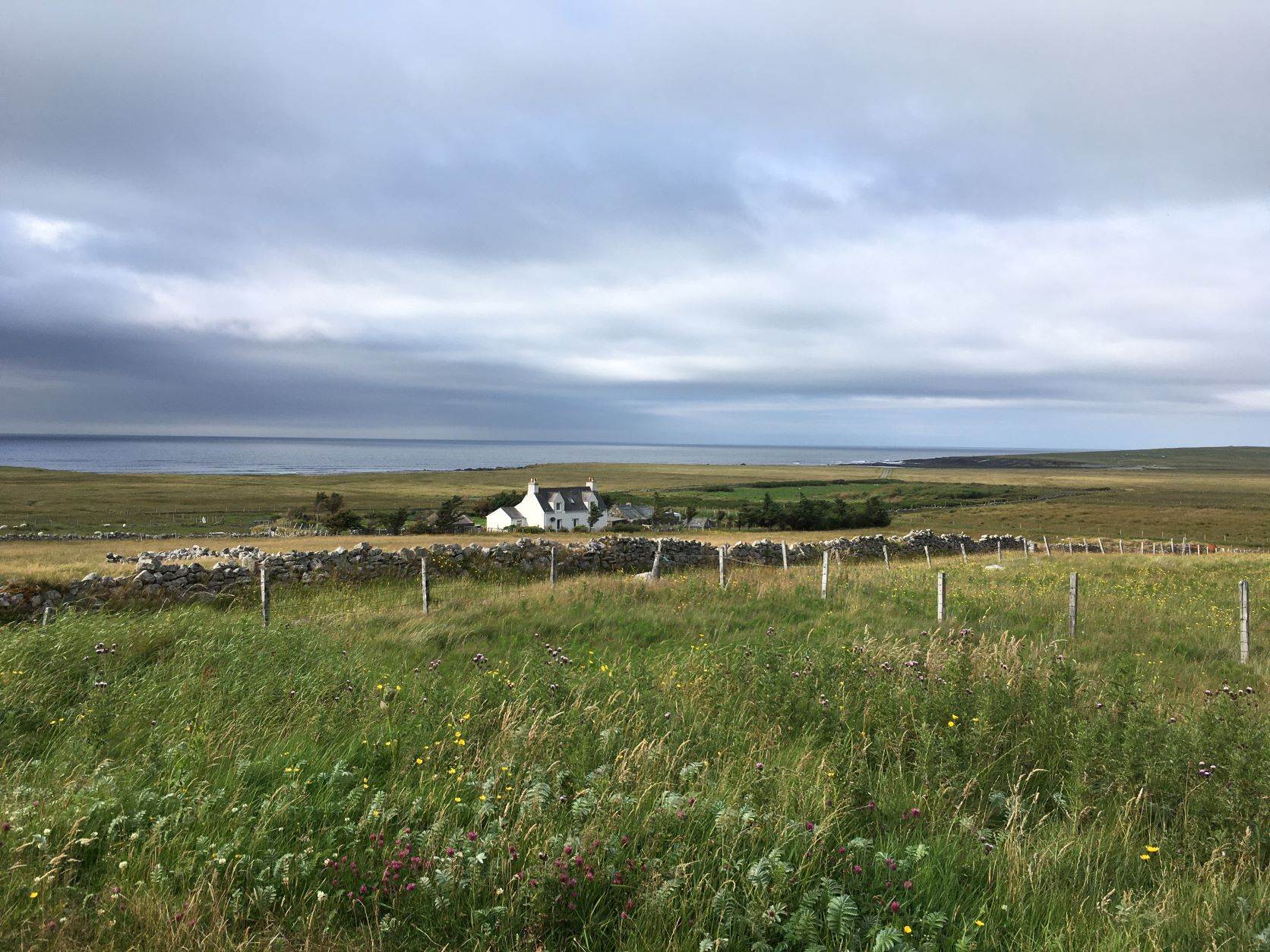
Our final stop of the day was at Truiseil Stone, a 22-foot tall standing stone that was once part of a stone circle. The rest of the stones were removed at various points to be used for building or other purposes, leaving behind just the one stone, which is located right next to a house in someone’s field. The Truiseil Stone is said to be the tallest standing stone in Scotland.
Day 11: Isle of Lewis, Outer Hebrides (Lewis Castle, Sheiling, Arnol Blackhouse, Norse Mill & Kiln, Calanais Stones, Ardroil Beach, Bernara Island, Callanish 8)
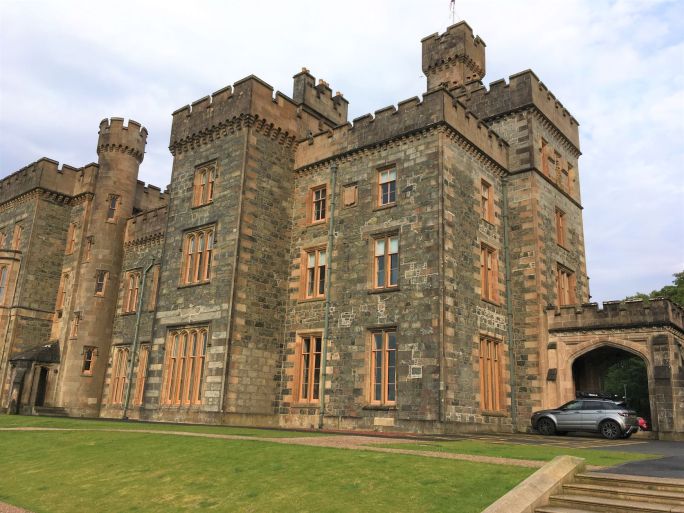
One of many islands that make up the Outer Hebrides archipelago, Lewis and Harris is the largest. Though often referred to as two separate islands, they are actually connected. That said, the landscape of the two parts of the island are quite different. We spent one full day on the island, which we spent traveling throughout Lewis. Our first stop of the day was a Lew’s Castle. The castle, built in 1800s, is right in Stornoway. We then headed into the countryside.
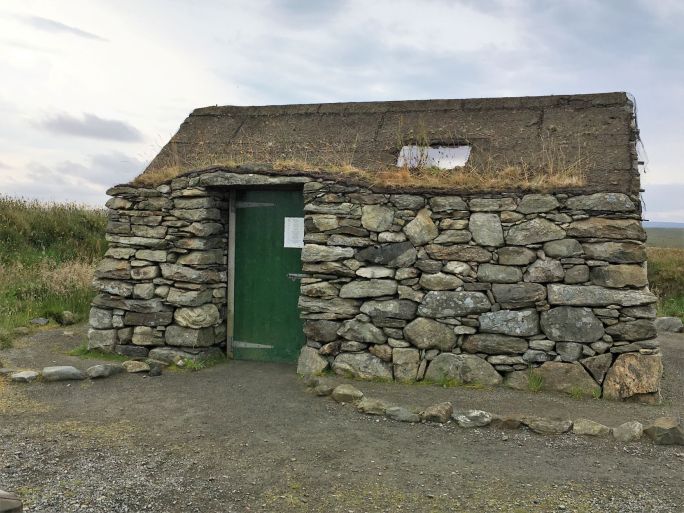
First, we stopped at a reconstruction of a sheiling, which are old shed-like buildings that used to dot the fields. This is where some members of each family would stay each summer in order to keep watch on the cattle. They were used until the 1950s or so, and were very basic- one room, a straw bed, and small fireplace to cook in.
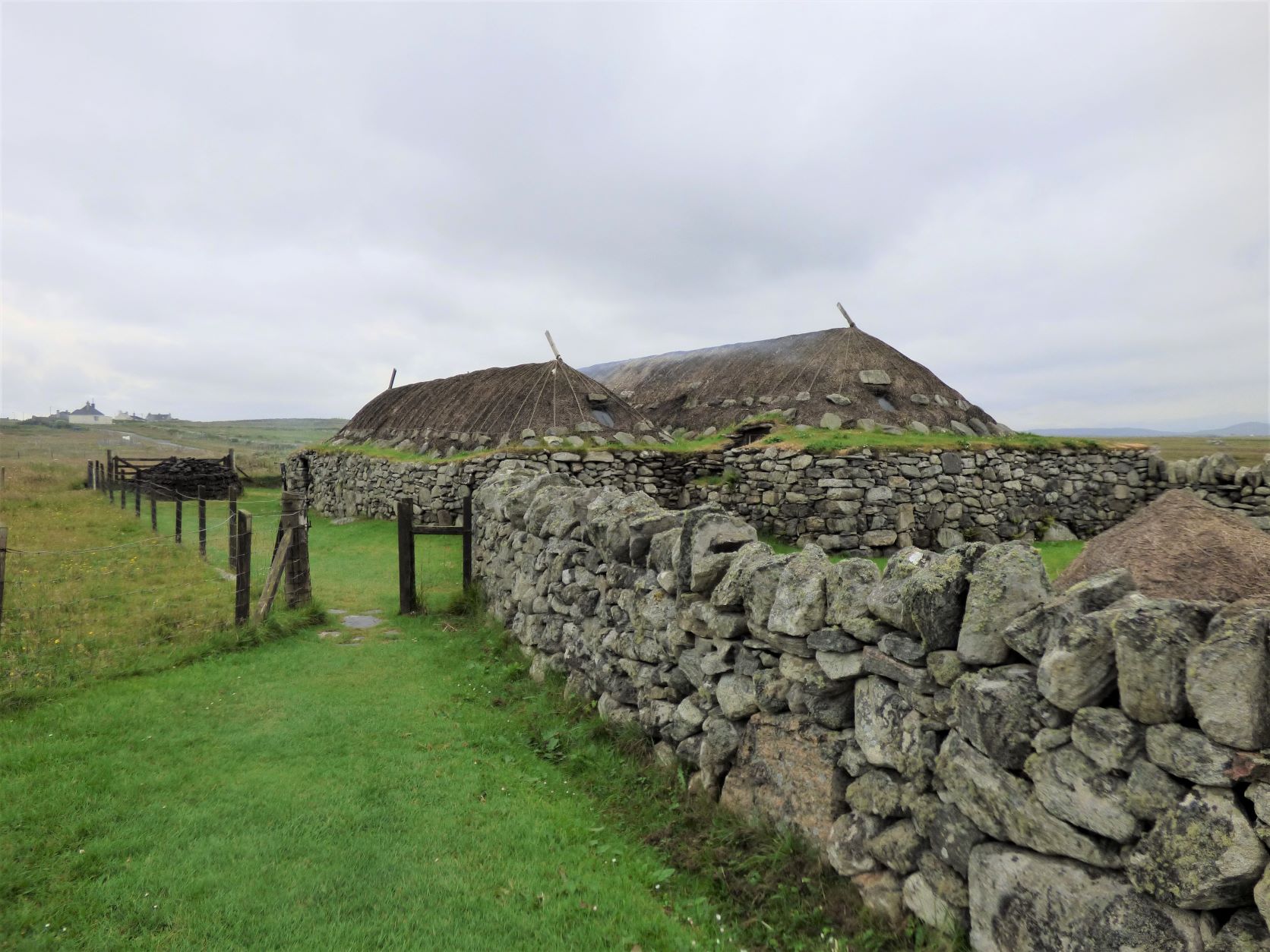
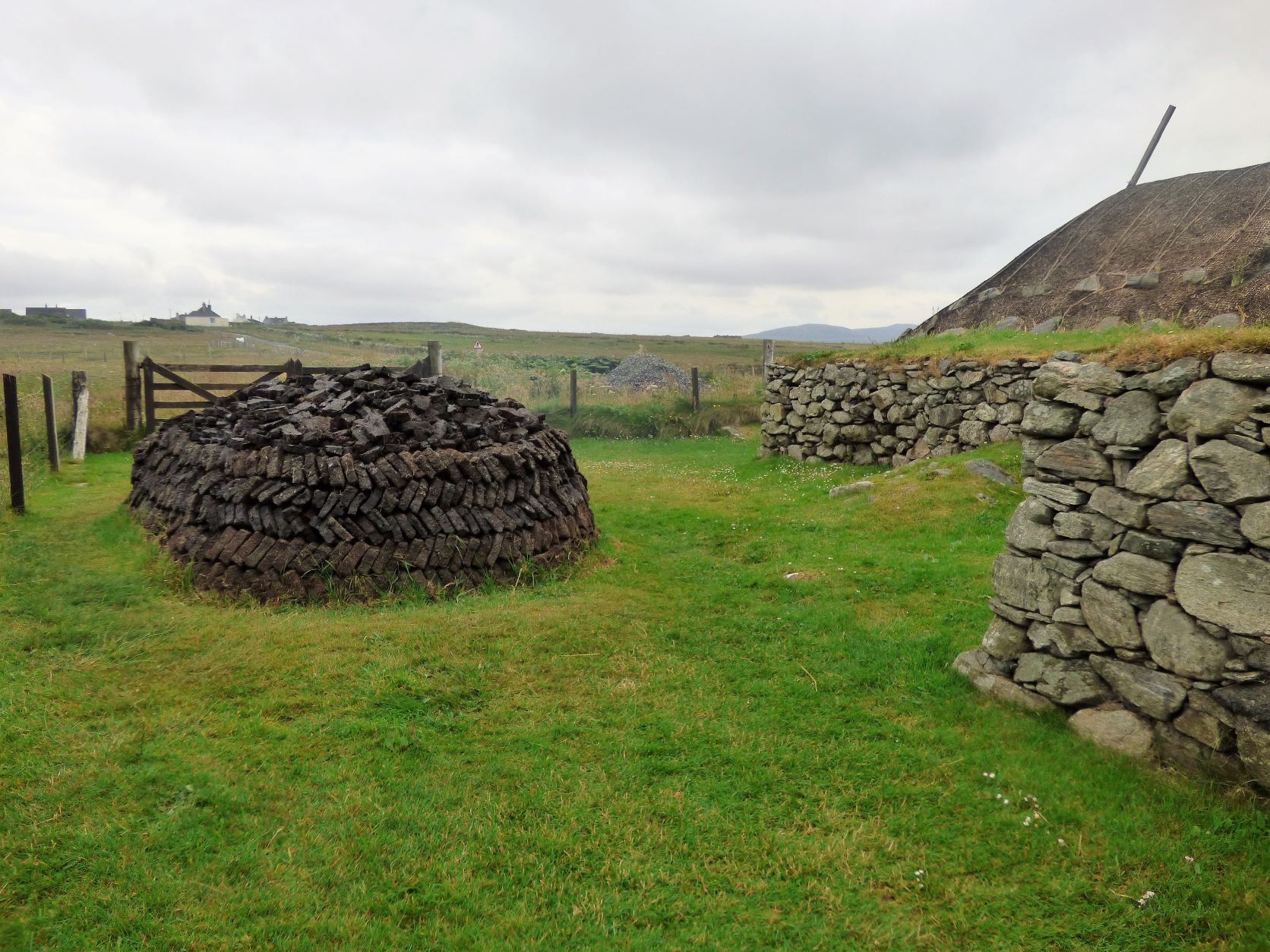
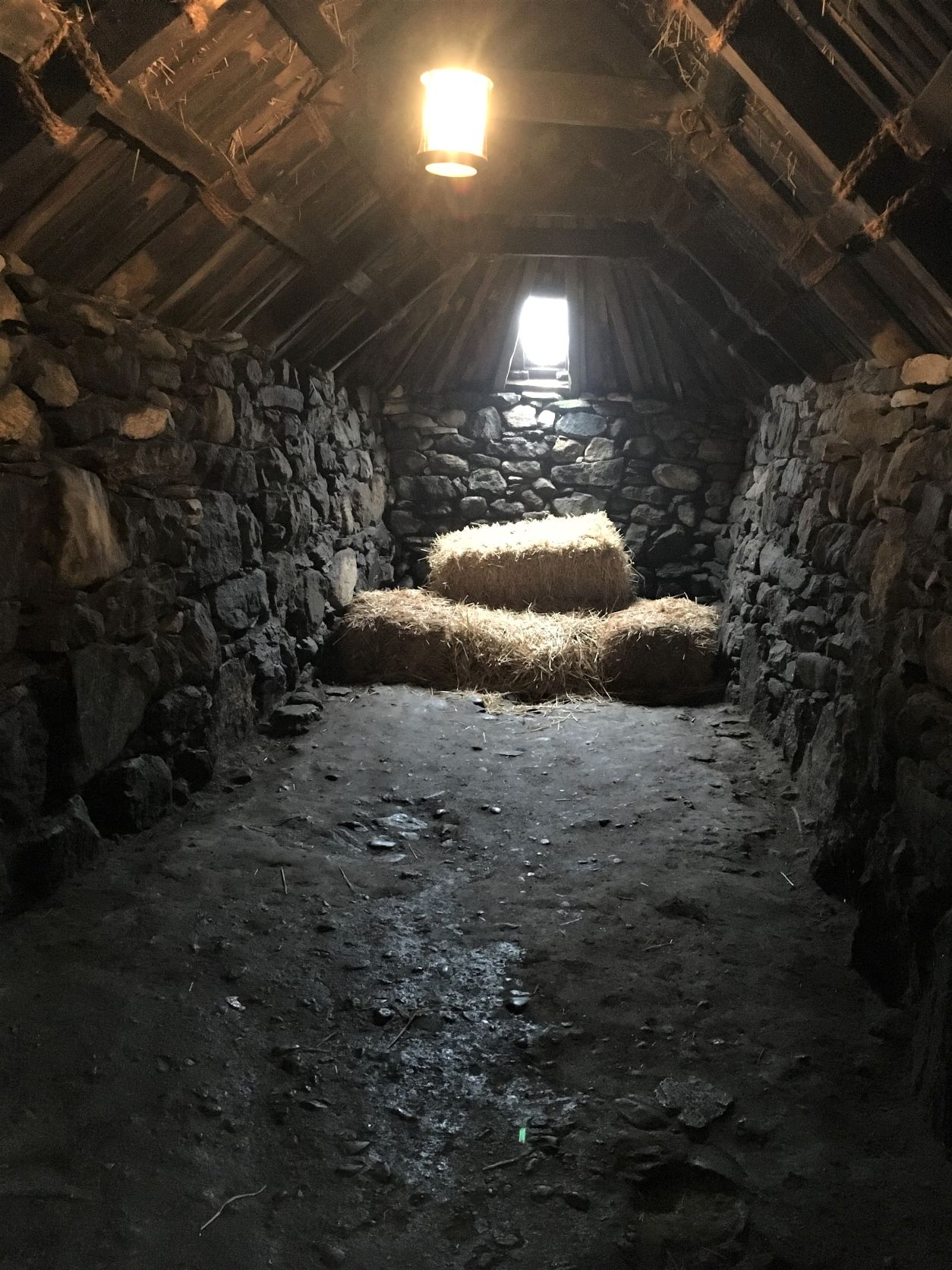
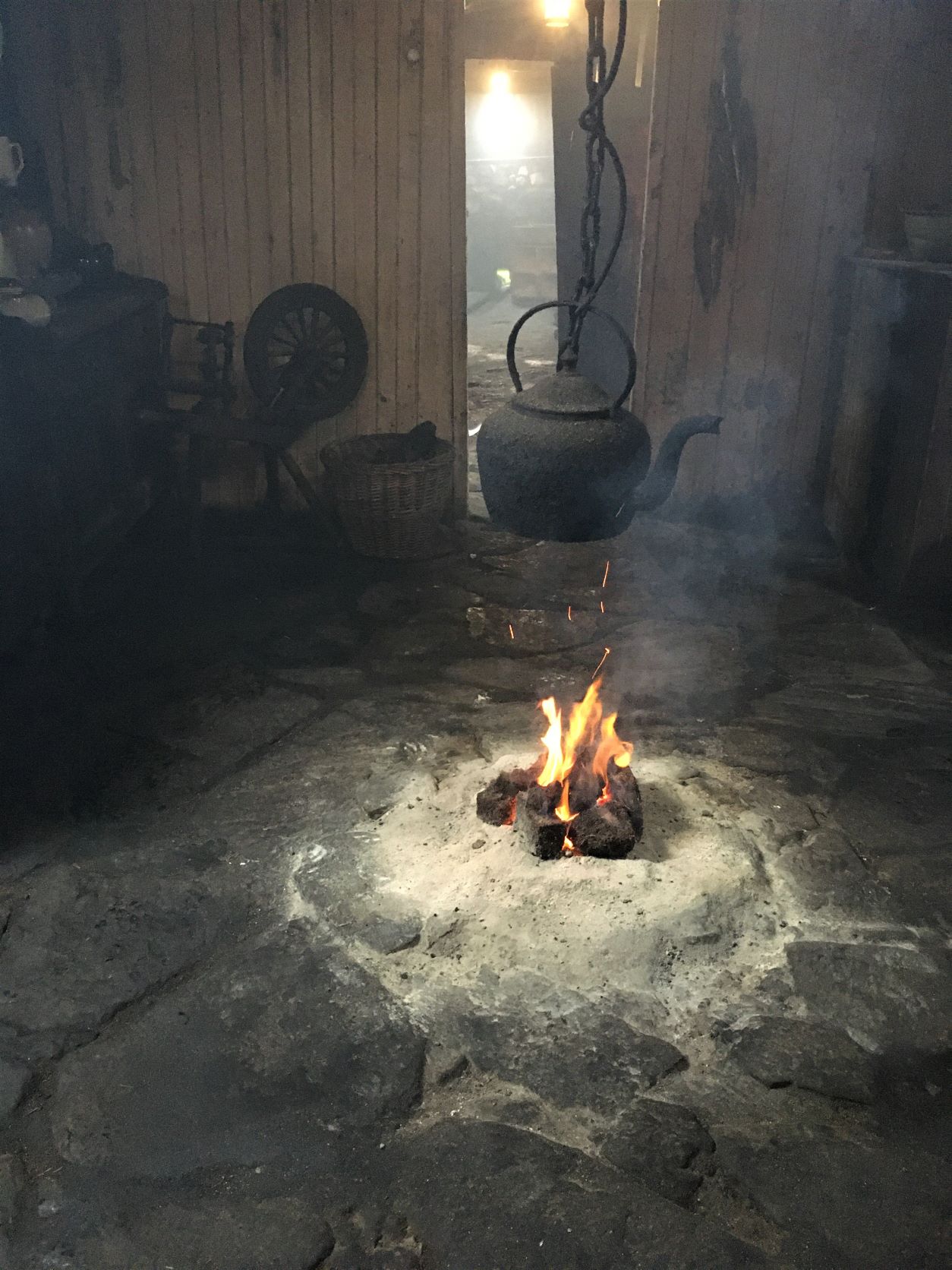
Then we headed to Arnol Blackhouse. Blackhouses were the traditional dwellings on Lewis and Harris. They were built of loose stone (no mortar). Two walls were built next to each other, and the middle was packed with earth for insulation. They had thatched roofs and no chimneys. Animals and humans would both inhabit the blackhouses side by side. This was for practical reasons- the heat from the animals helped keep the house warm, the manure was all in one place, so they could use it for fertilizer, and it allowed them to keep a close eye on their animals. The homes were heated by peat fires, which would also blacken the thatched roof over time, which they would then use for additional fertilizer. Of course, having no chimney, they were extremely smoky. There was a live peat fire in the blackhouse, so we were able to really experience what it was like.
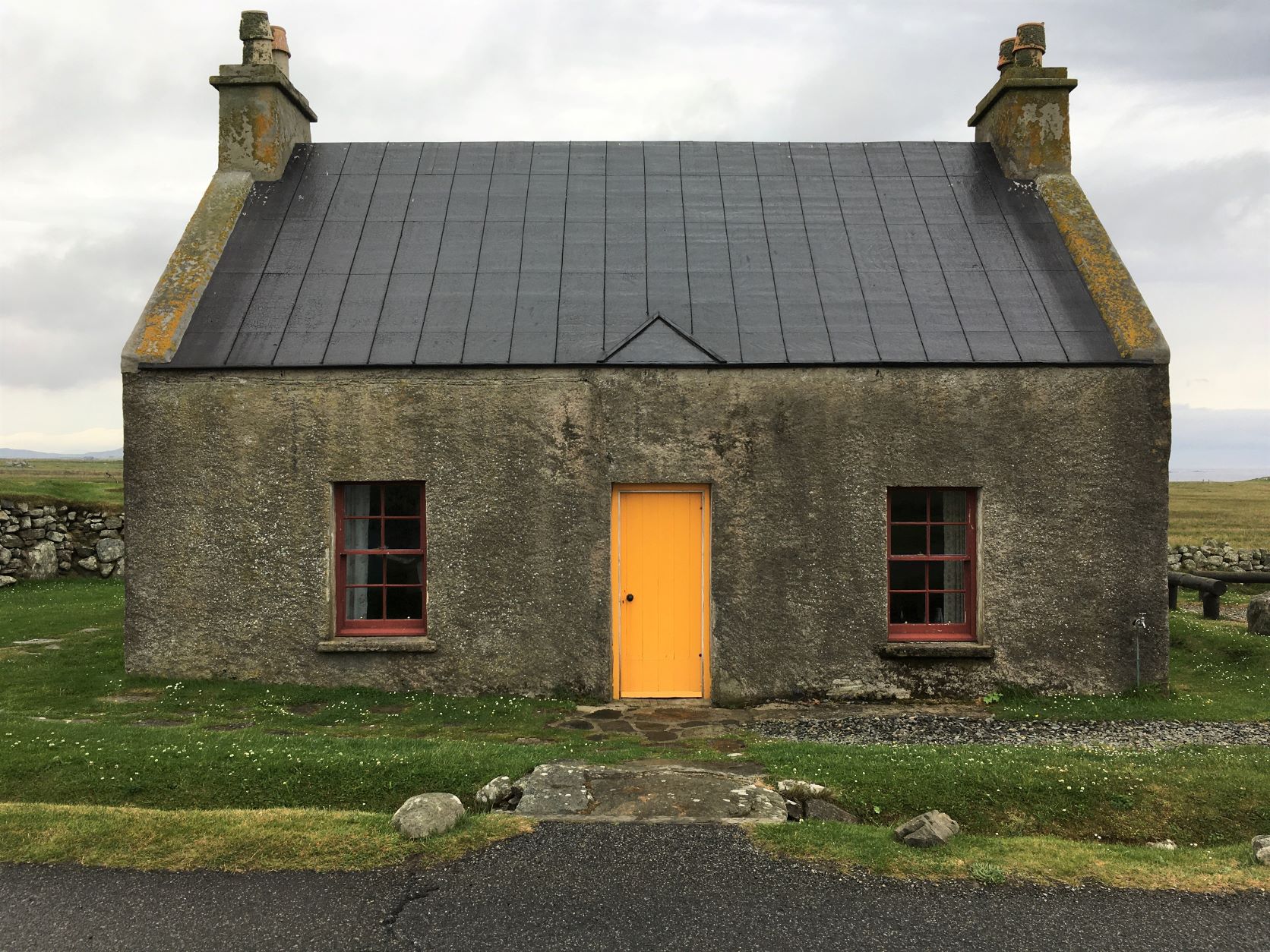
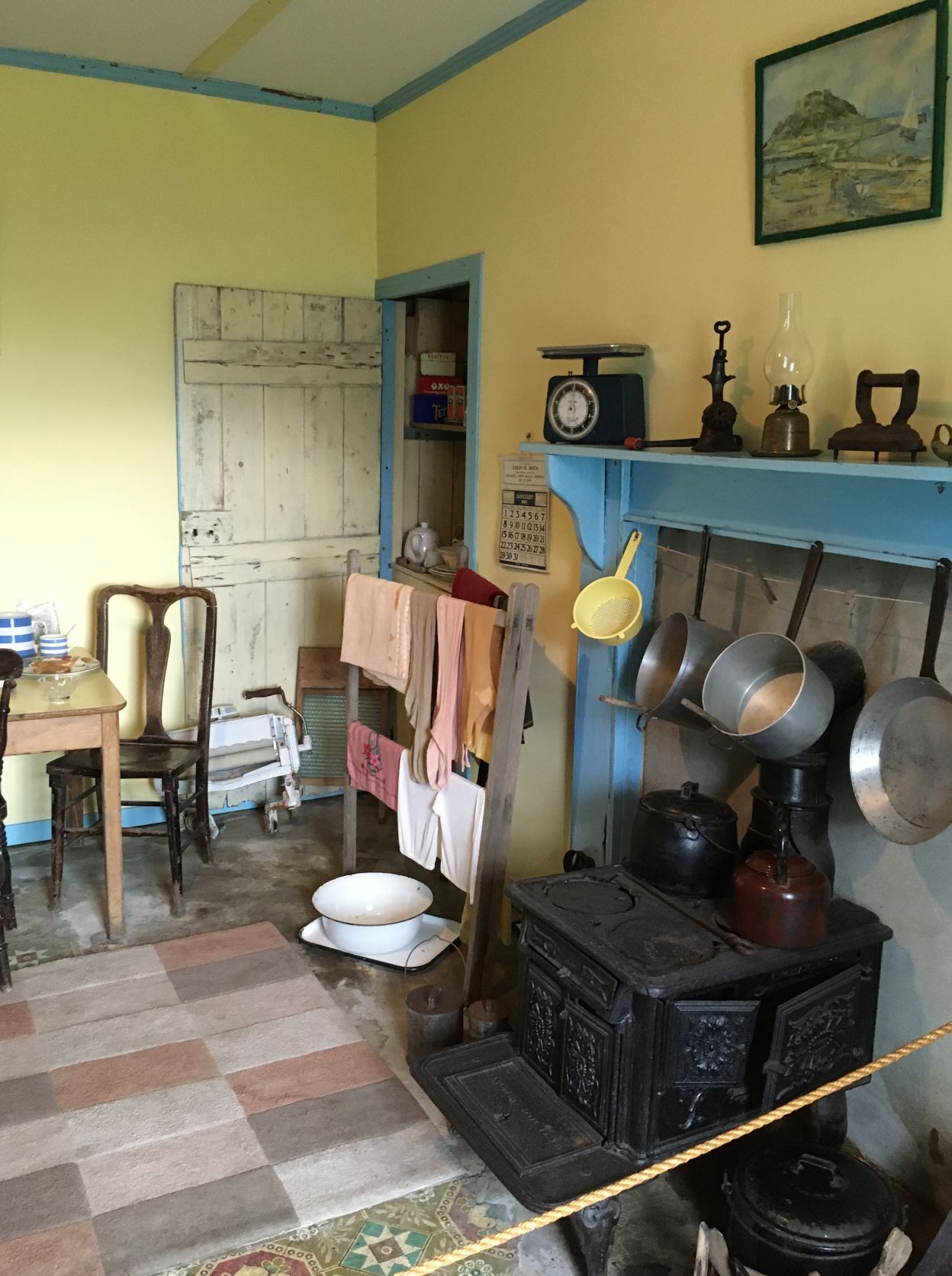
Across the road from the blackhouse, we were also able to tour a “whitehouse”. In the late 1800s and early 1900s, the government began to encourage/force the population to stop living in the same houses as their animals, and whitehouses began to be built. These were small houses built of stone or concrete, with a chimney and fireplace. Although much more similar to what we consider a house, they were often poorly built, damp, and cold.
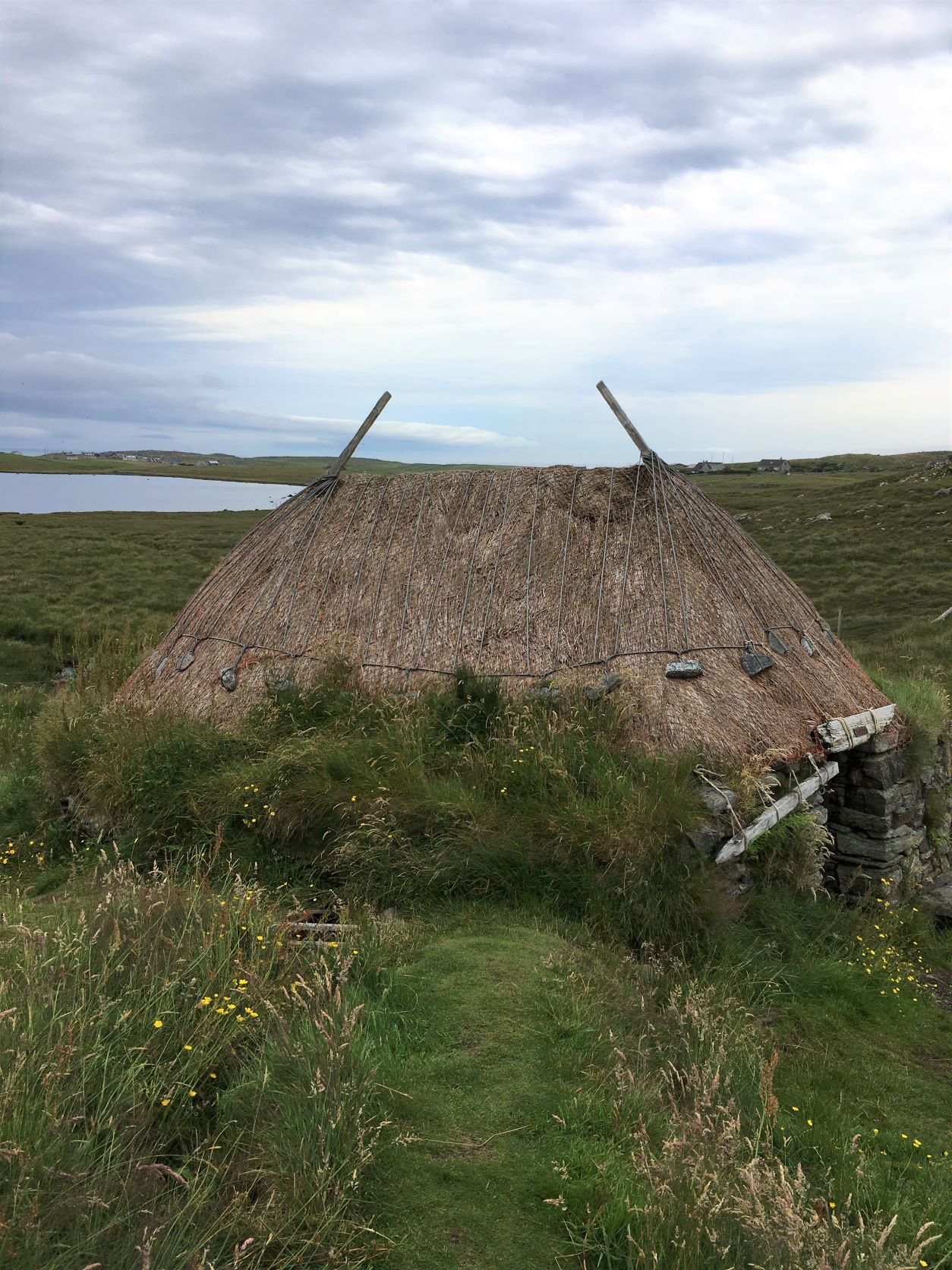
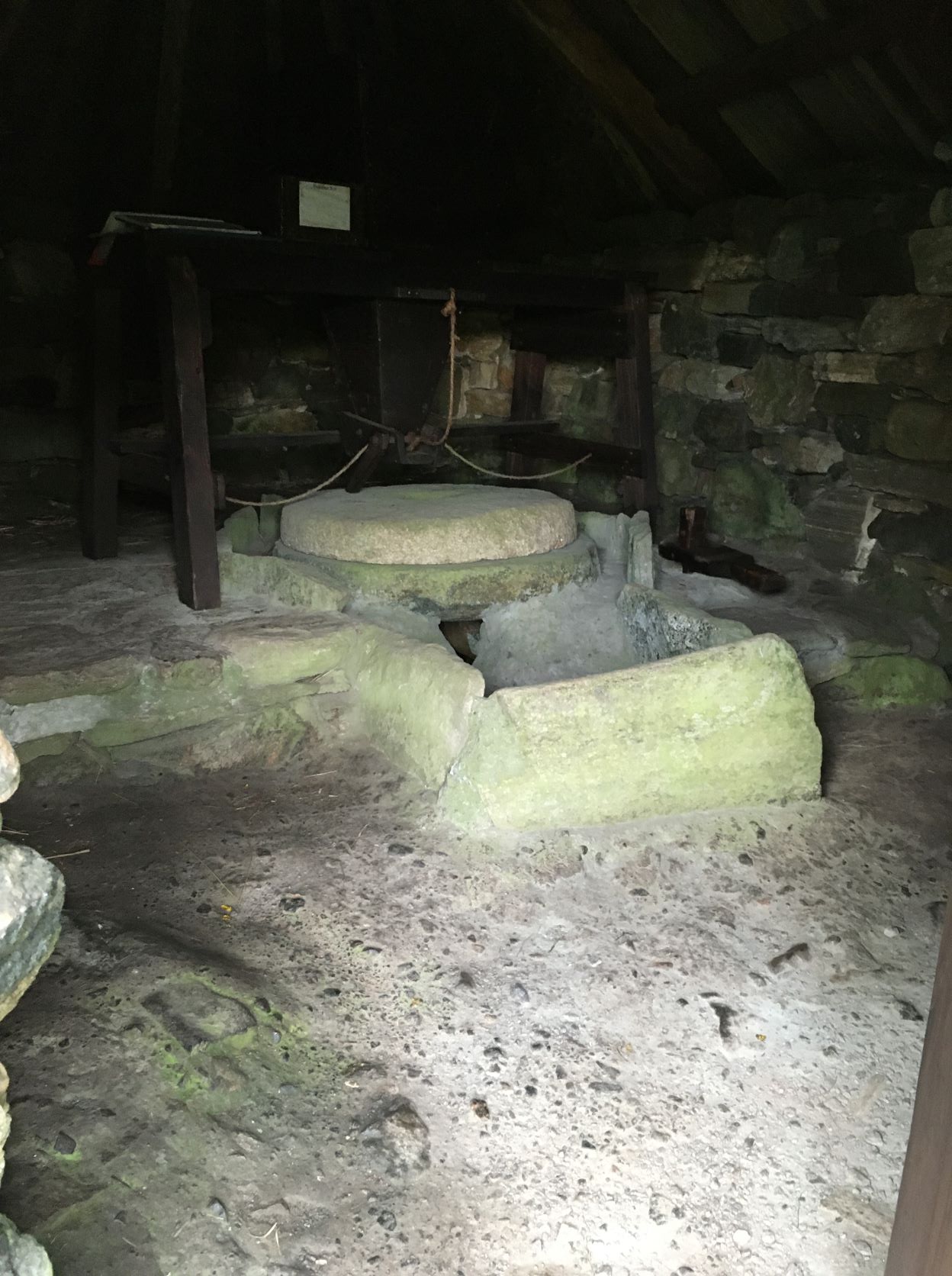
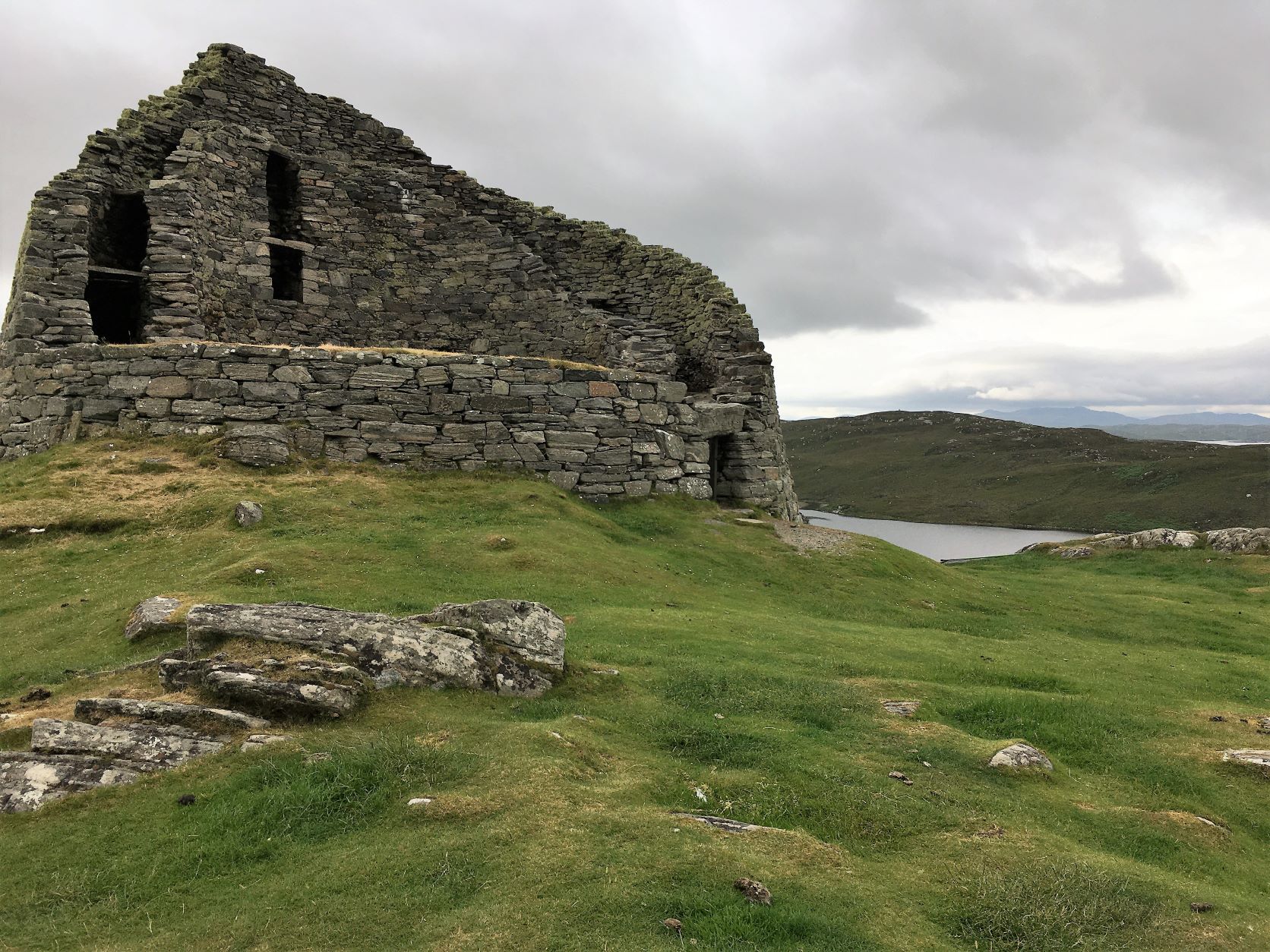
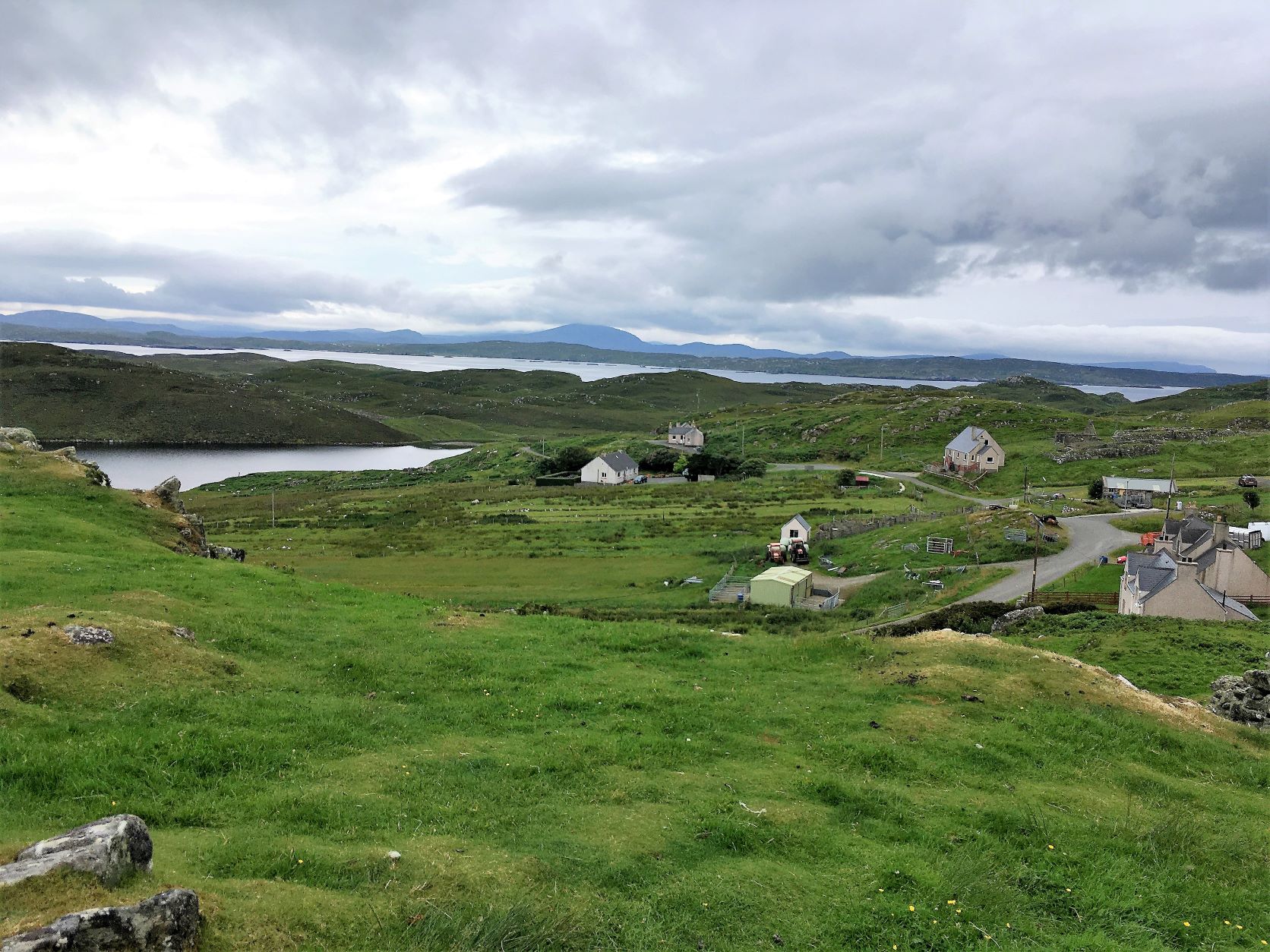
Our next stop was at the Old Norse Mill and Kiln. This type of mill was in use until the 1930s or so. One of the thatched buildings was used as a mill and the other as a kiln to dry the barley and wheat. We also stopped at a broch, which are large,v
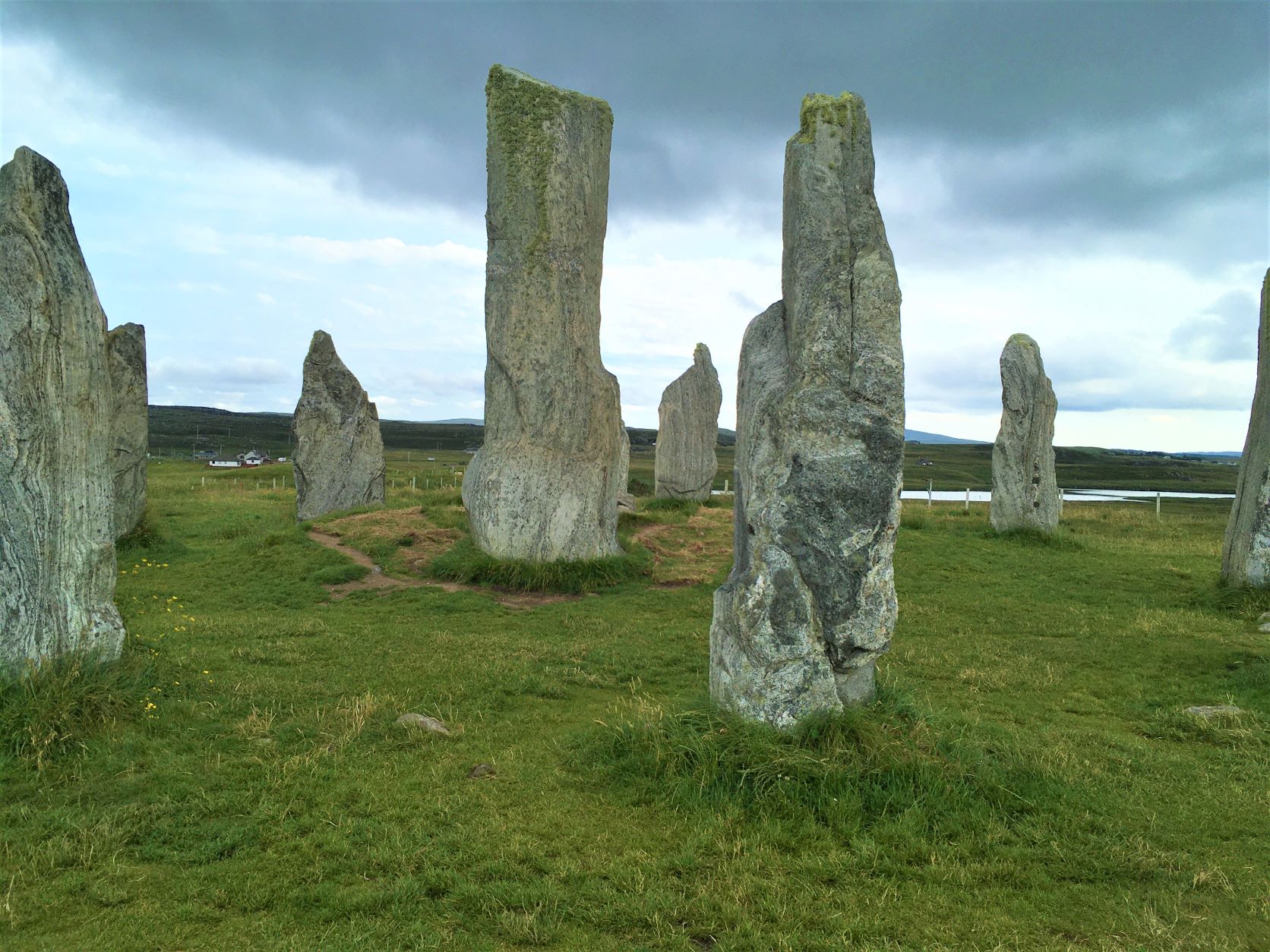
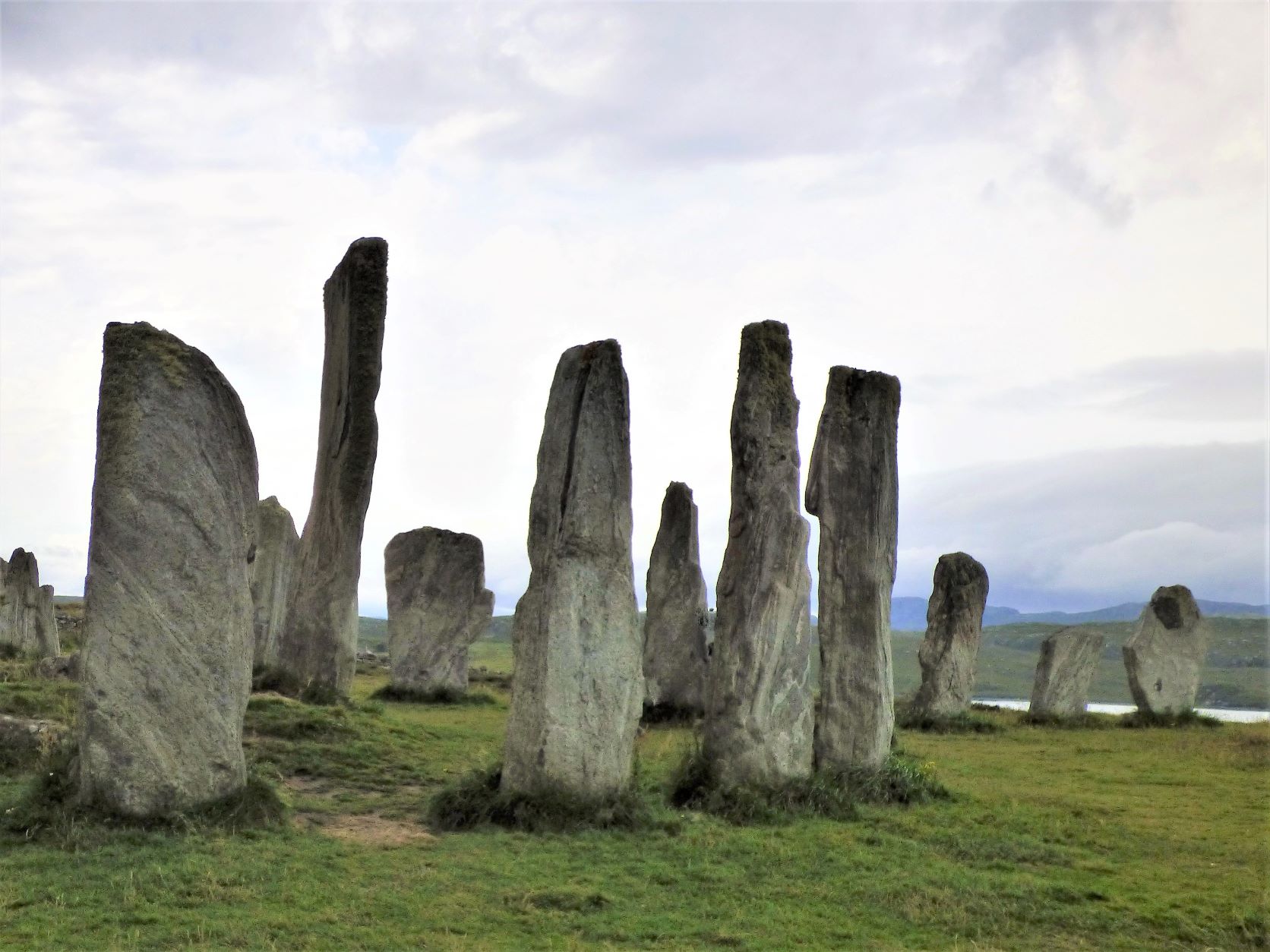
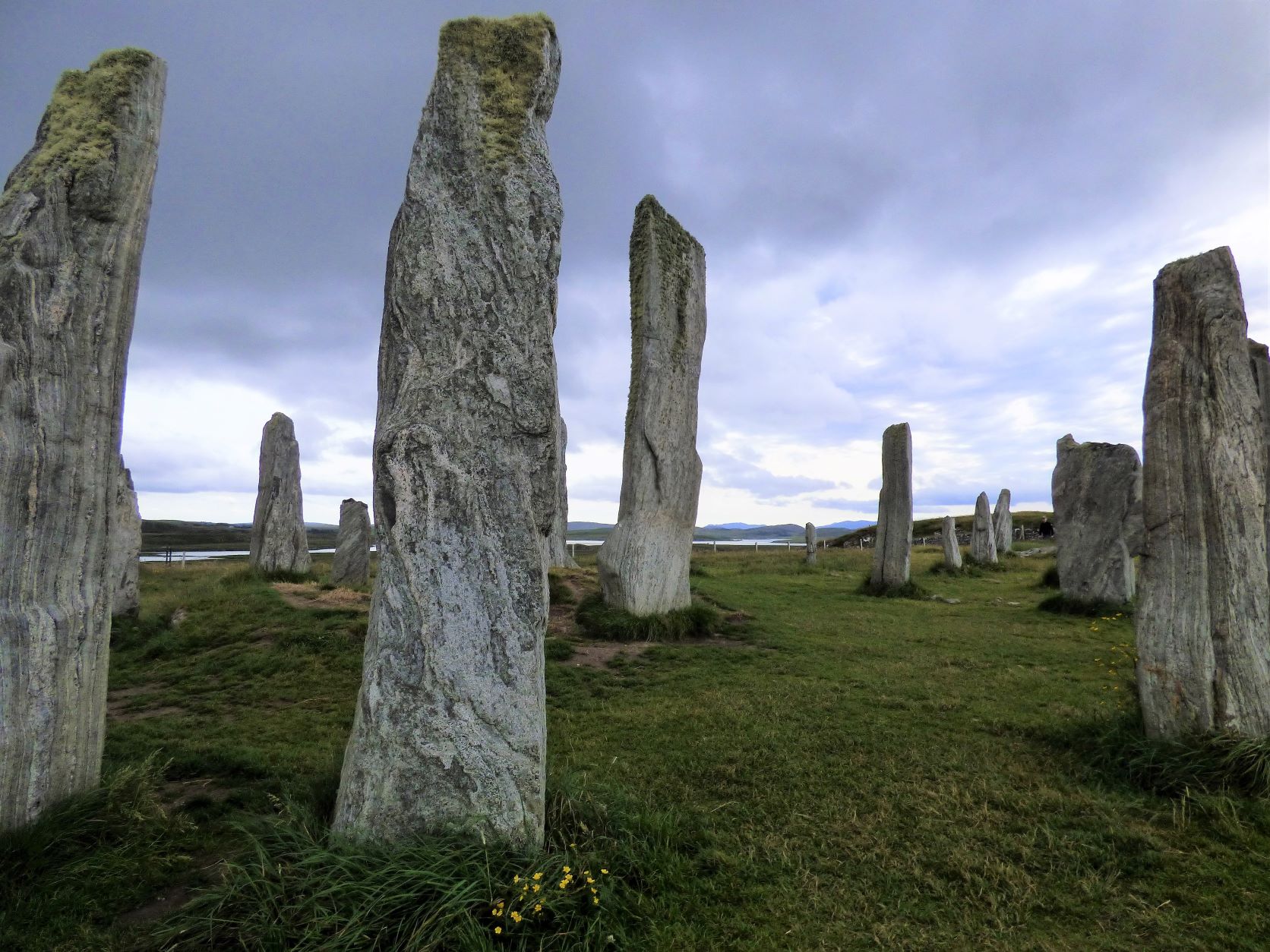
We then headed to the Callanish Stones (also spelled Calanais). These are standing stones, consisting of a stone circle and some stones arranged in a cross shape. They date to about 5,000 years ago. It was crowded there, but still really incredible.
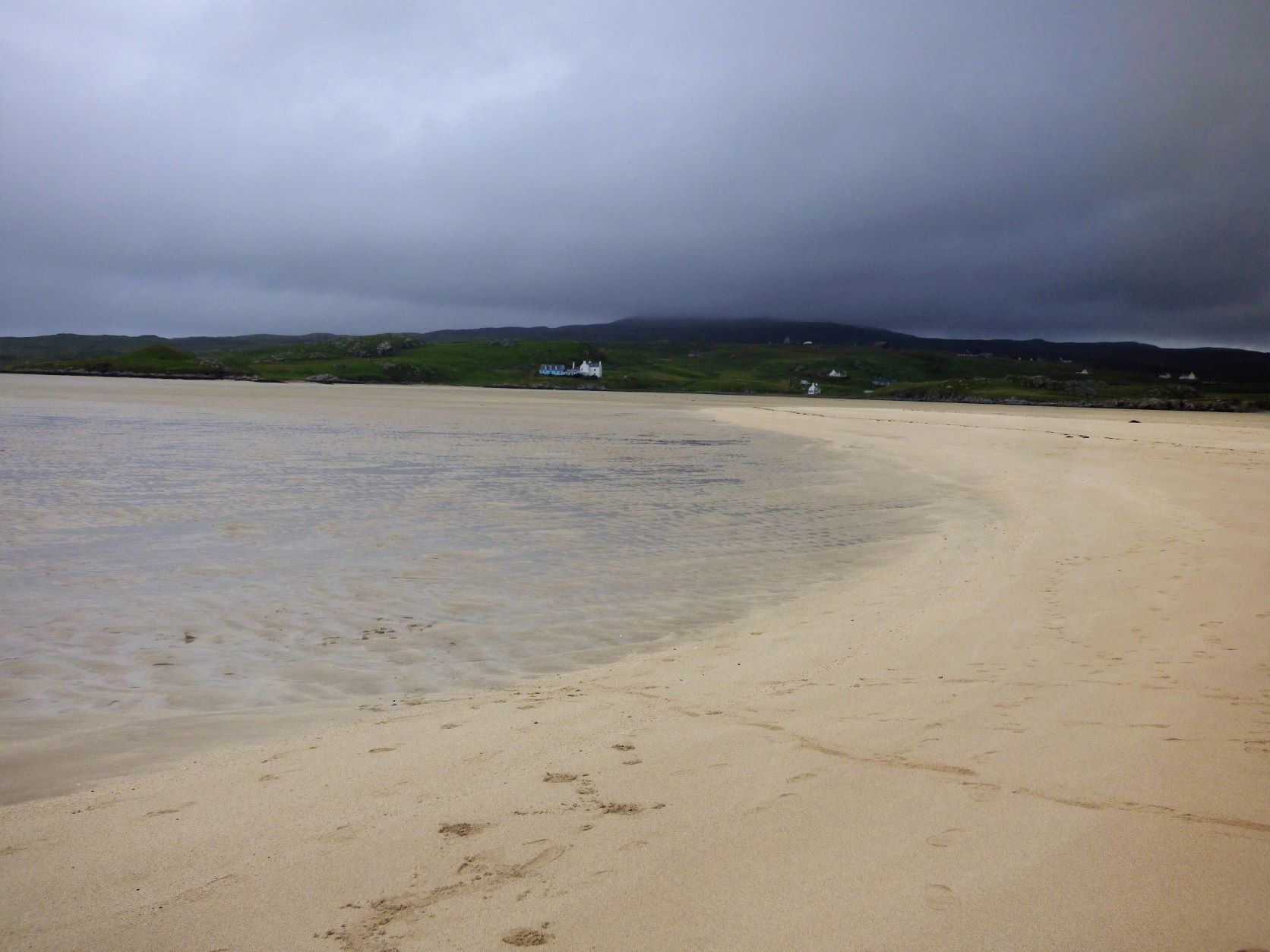
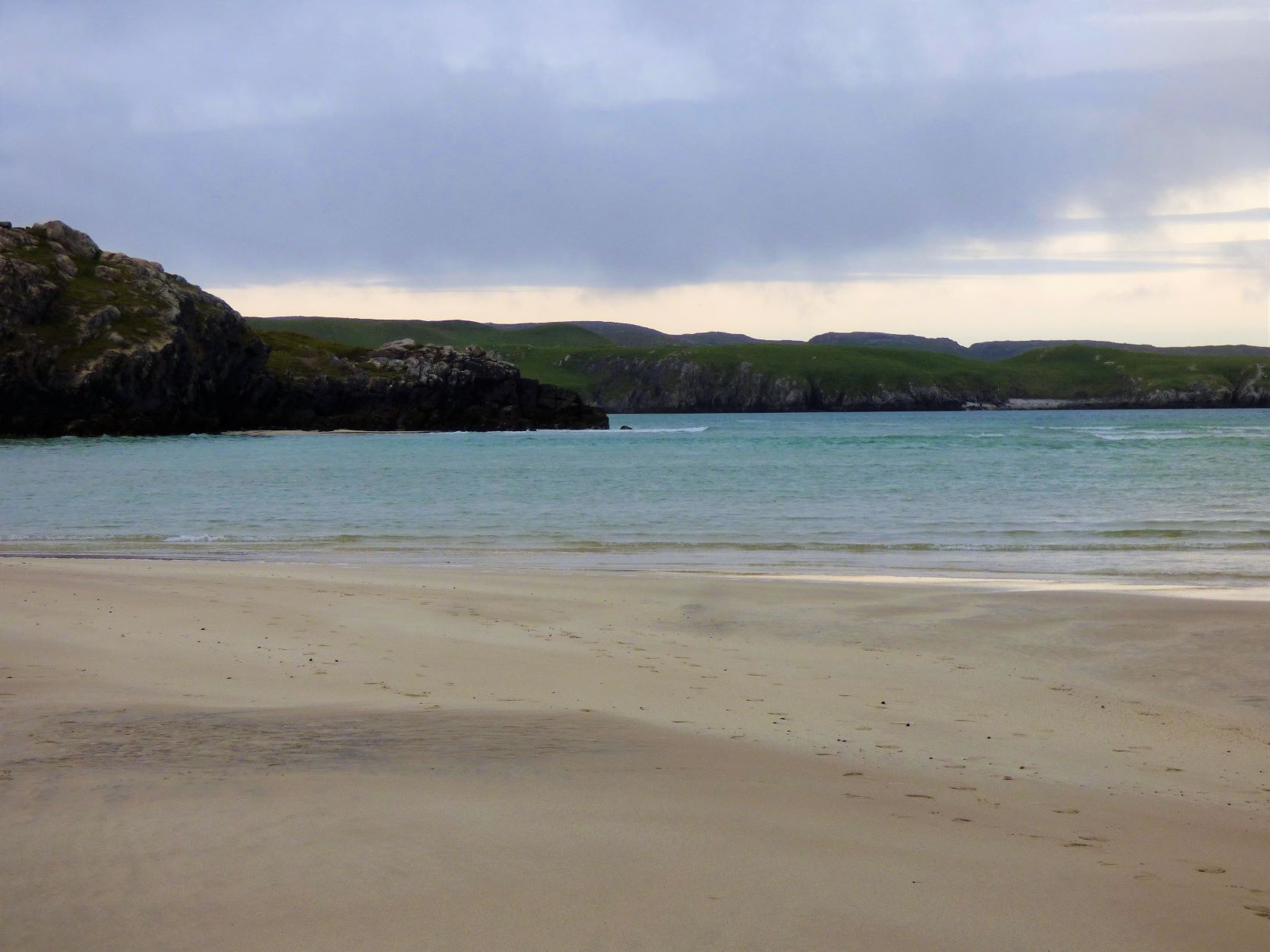
After that, we headed to Ardroil Beach, where we had a chance to walk around a bit.
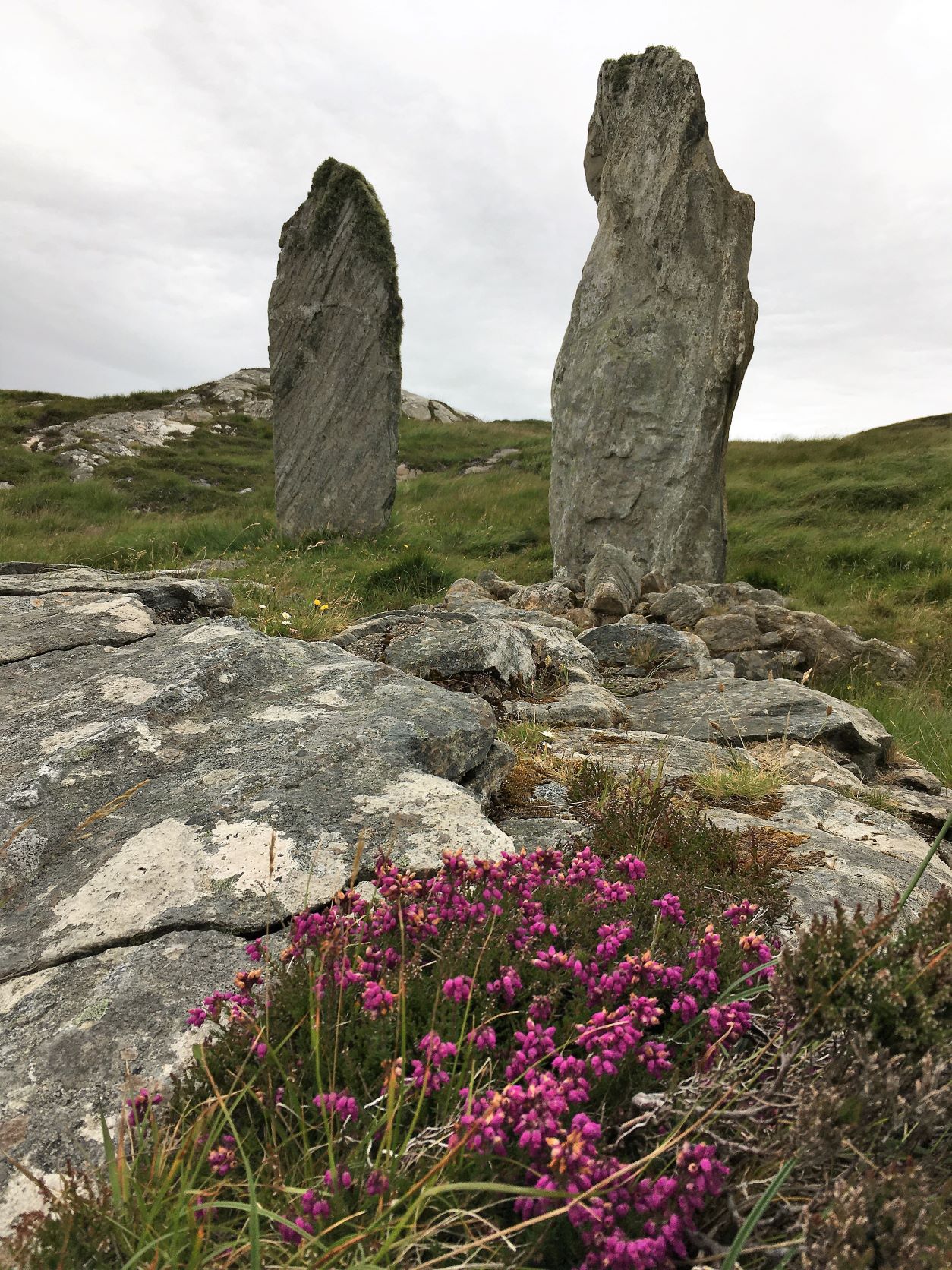
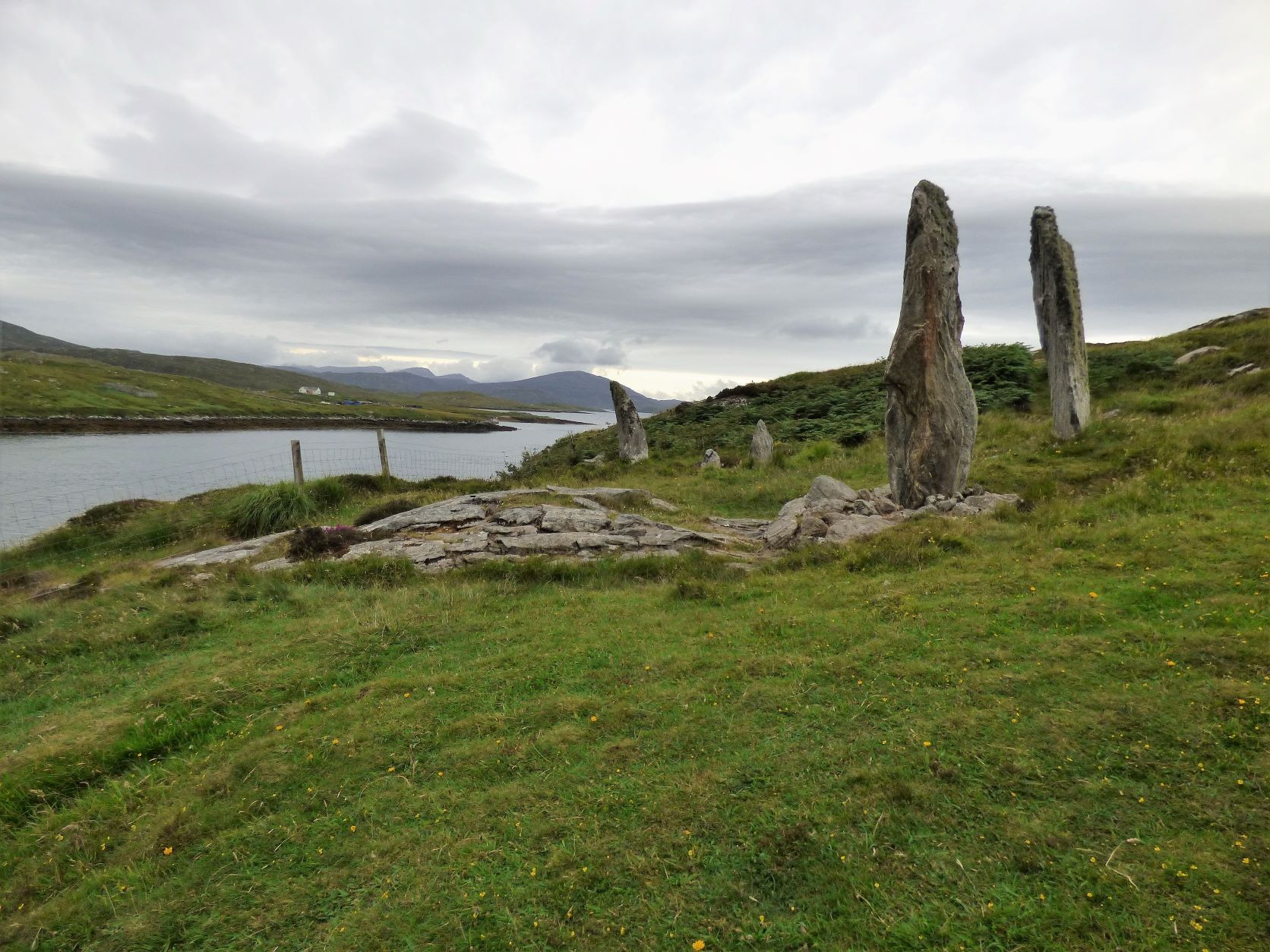
To finish out the day, we cross the bridge over to Bernara Island (crossing the Atlantic Ocean), where there were nice views of the coast as well as Callanish VIII (another set of standing stones- smaller, but we had it to ourselves, which was nice).
Day 12: Isle of Harris, Outer Hebrides (Luskentyre, St. Clemens Church, Horgabost Beach) to Isle of Skye
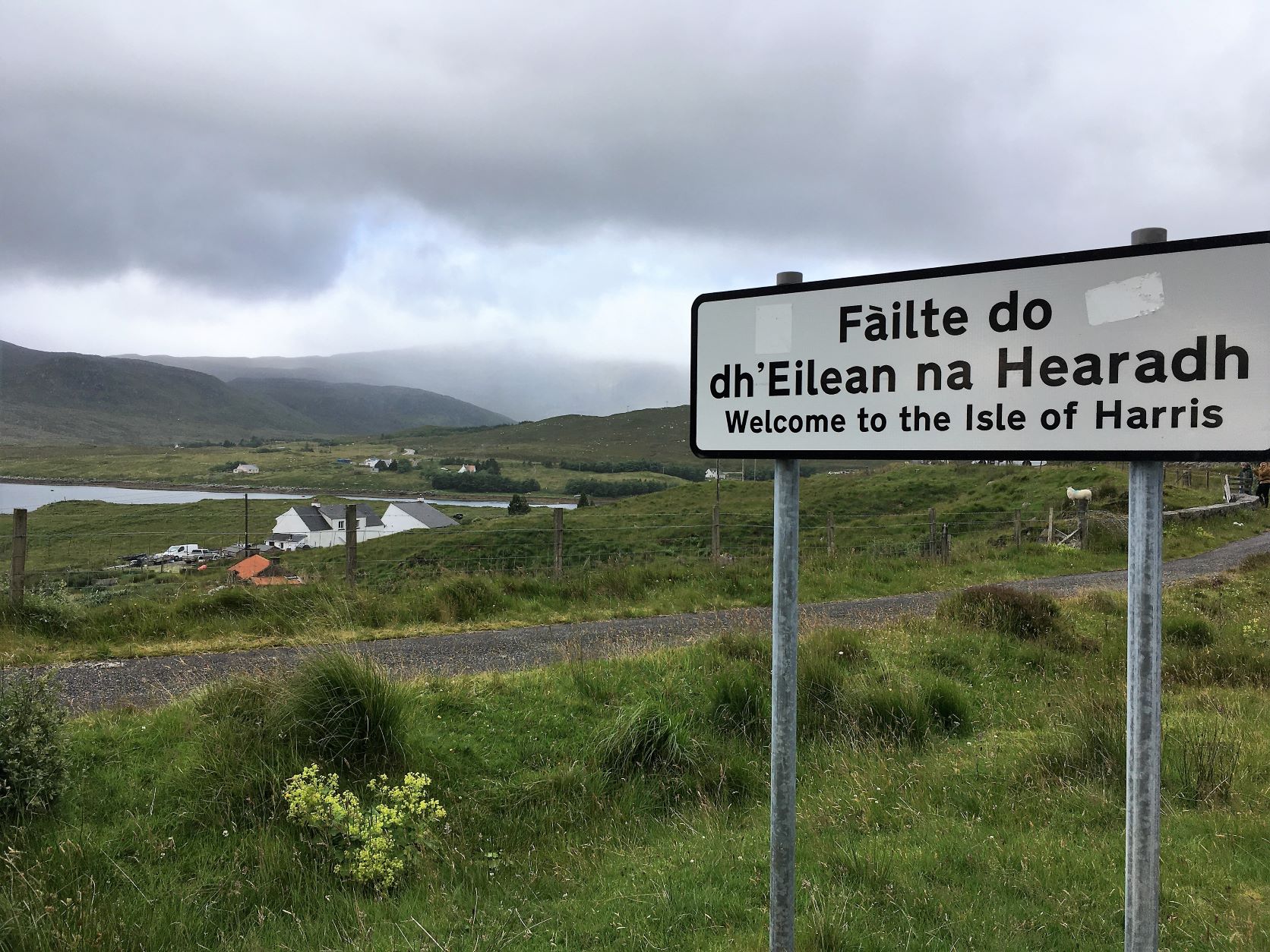
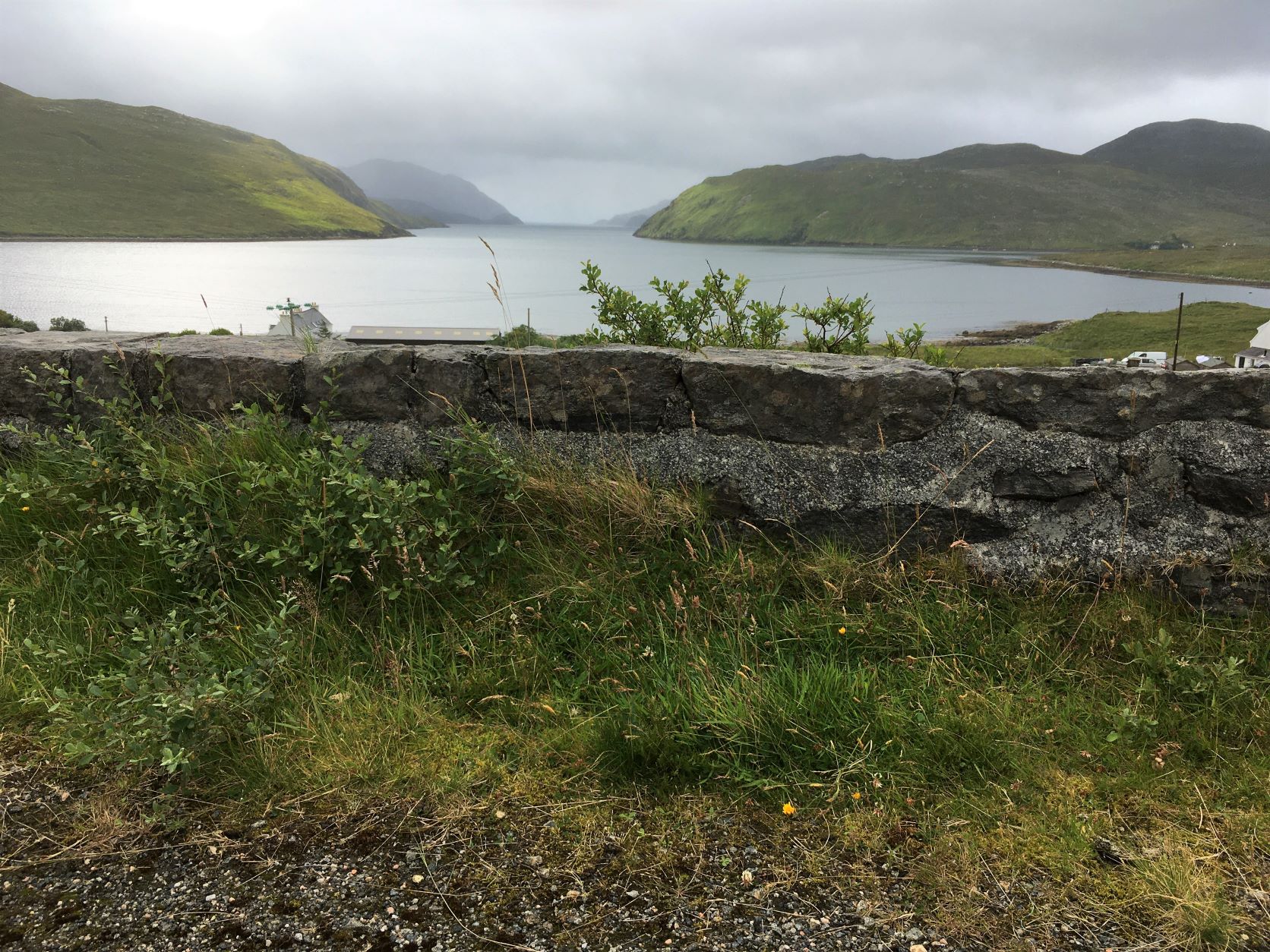
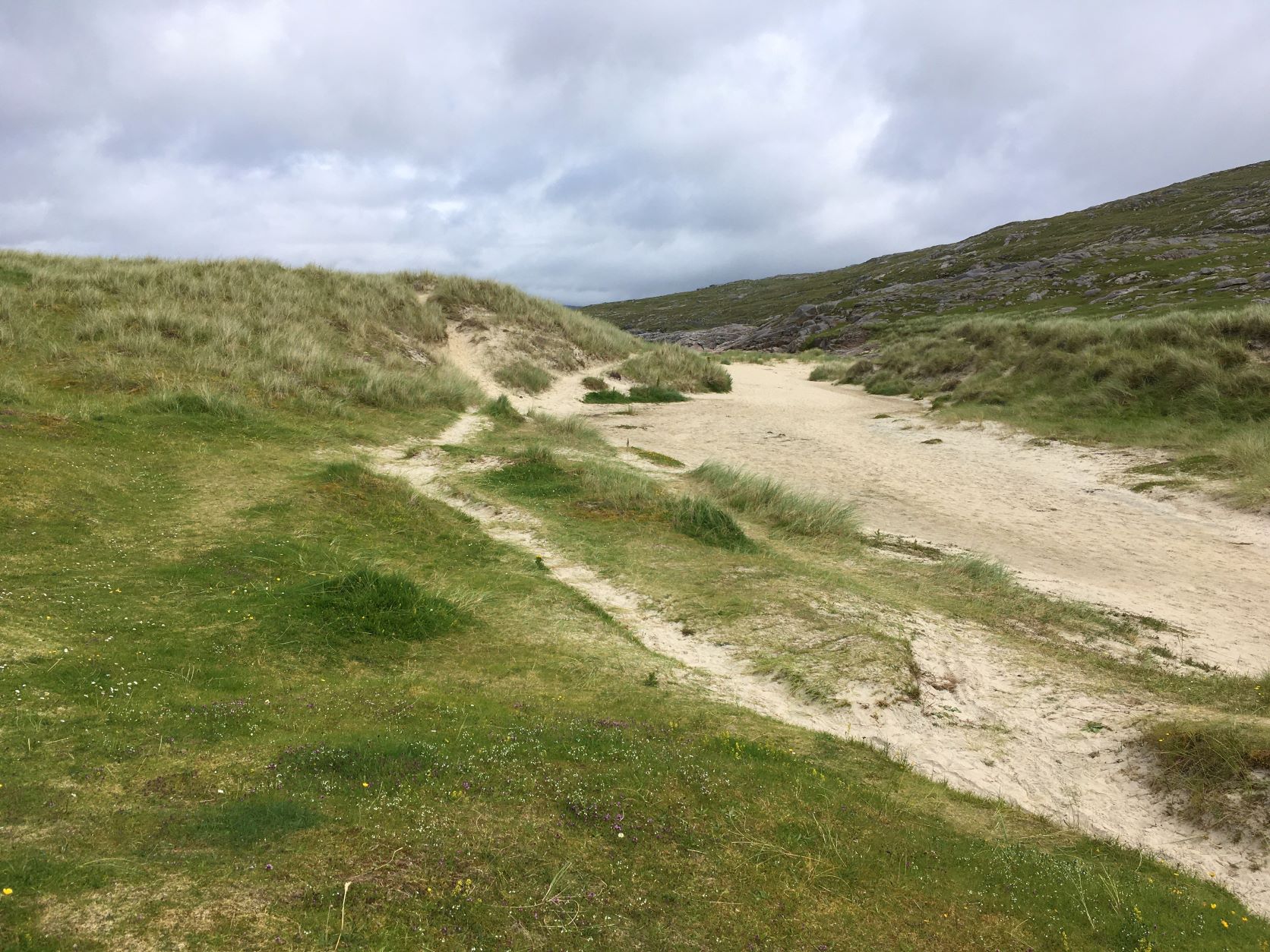
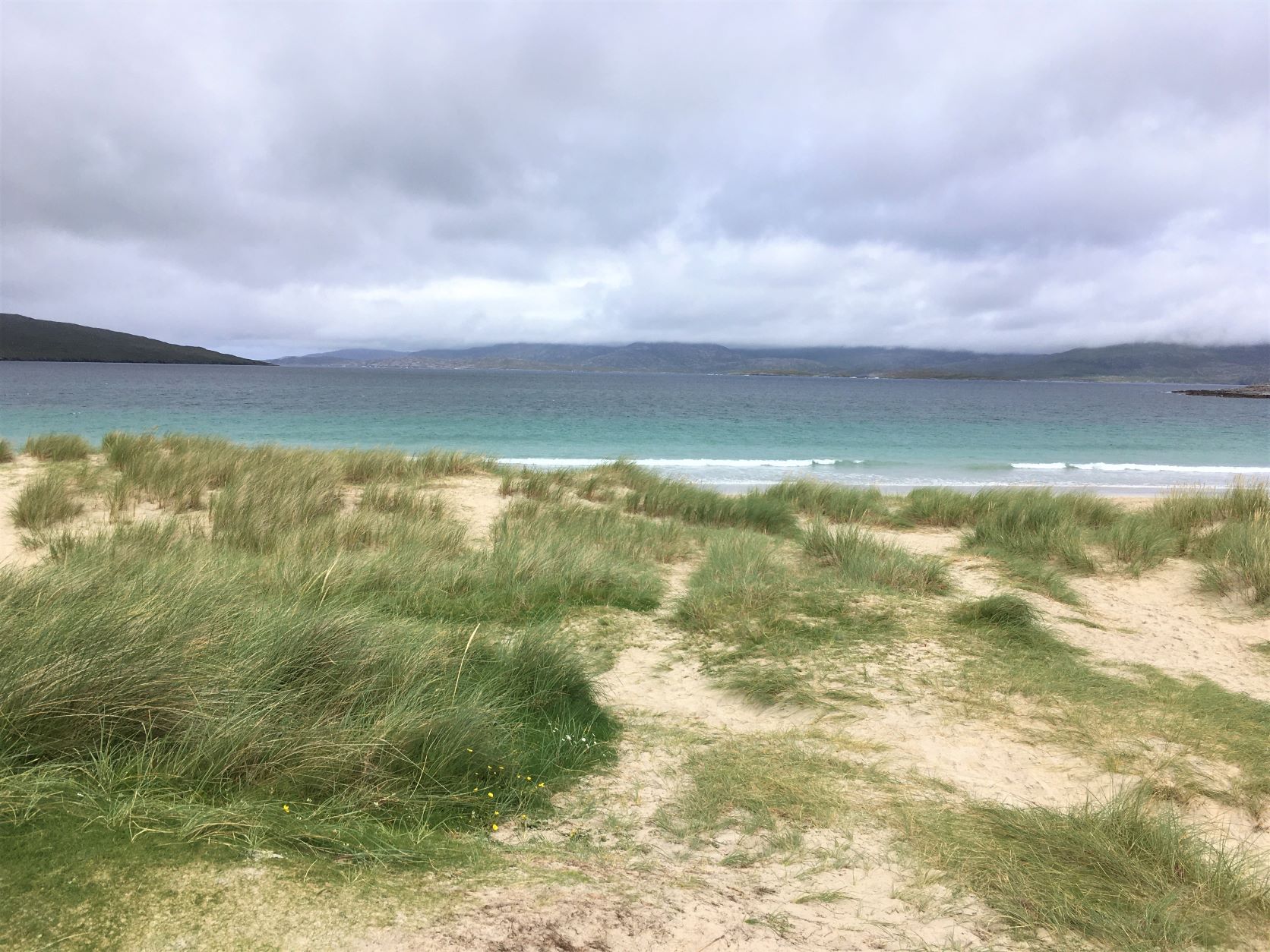
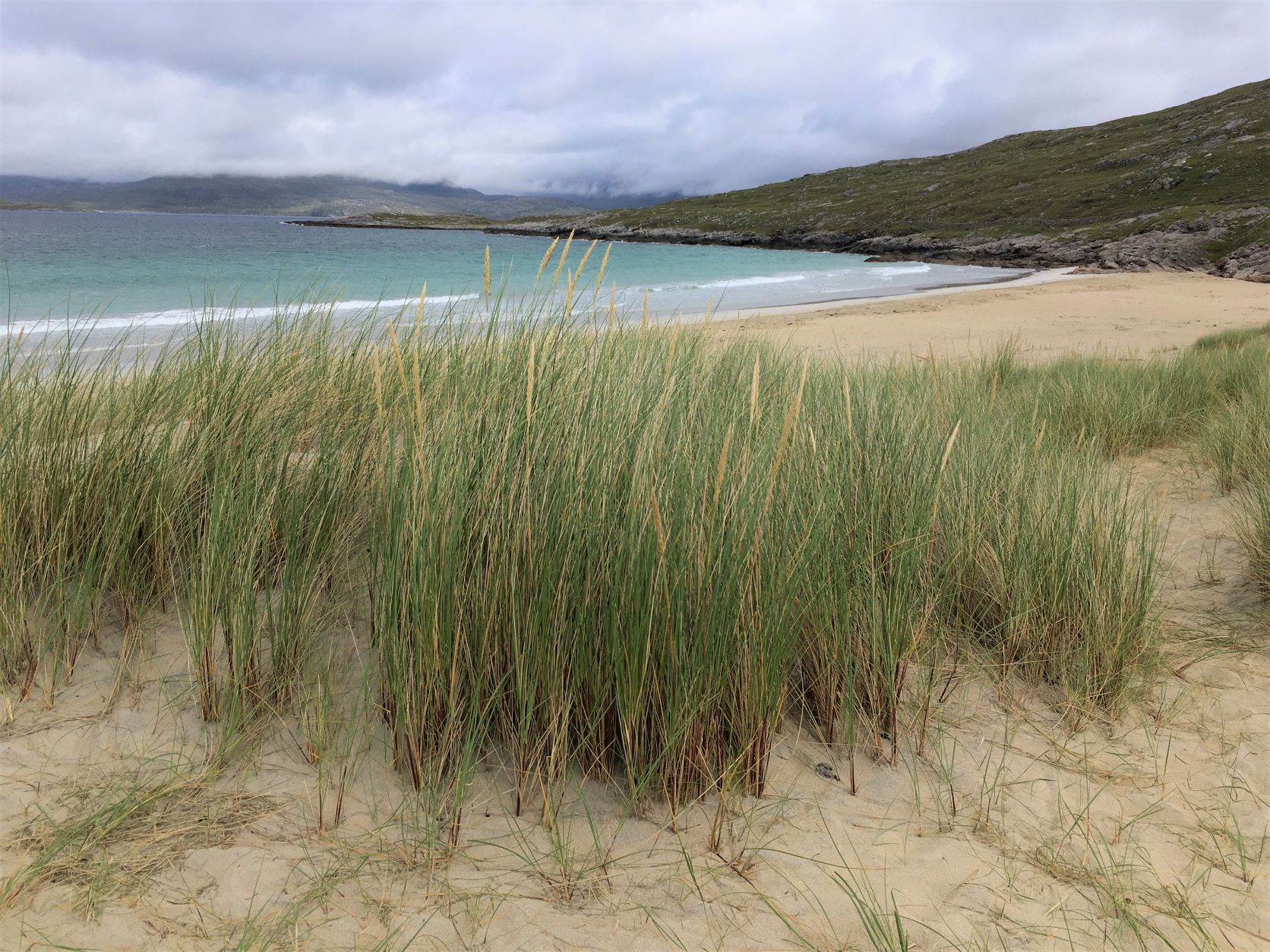

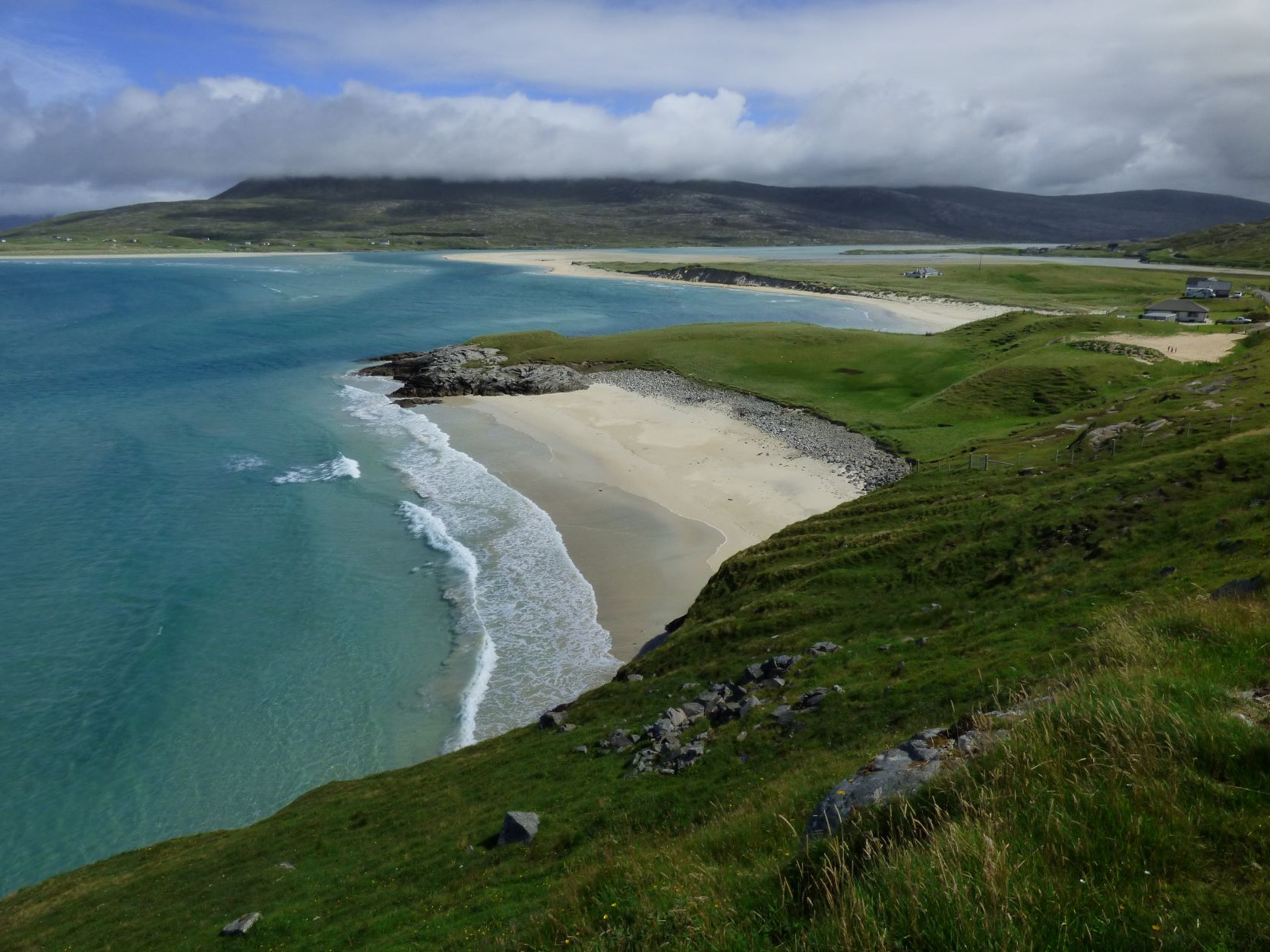
We crossed over Lewis and entered Harris. Harris is the source of Harris tweed. While Lewis was mostly flat, Harris has dramatic mountains and hills. Our first stop of the day was at Luskentyre Beach, one of the most famous (and beautiful) beaches in the UK, if not the world. The color of the water was stunning and it’s a huge, fine sand beach. Absolutely gorgeous!
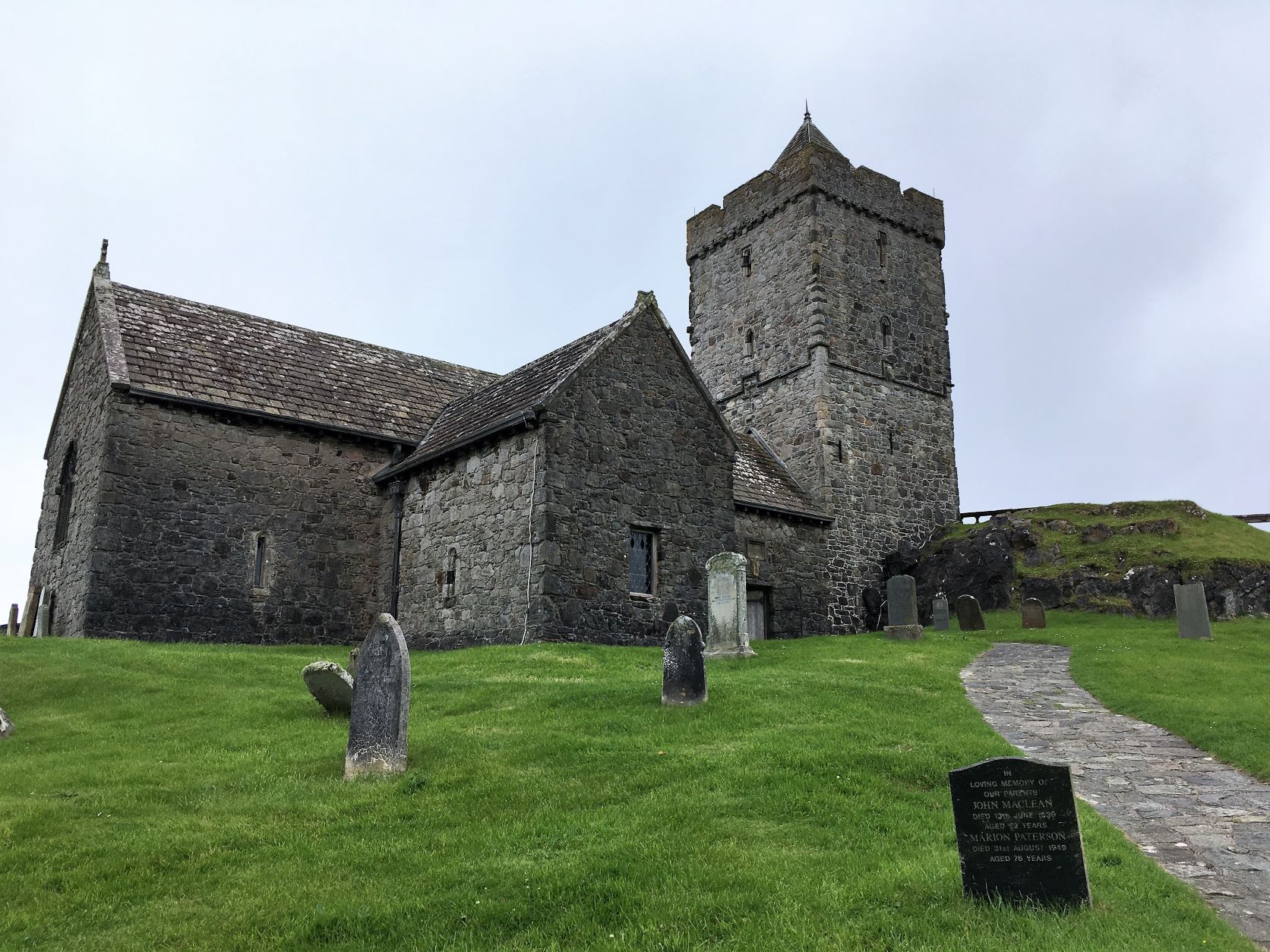
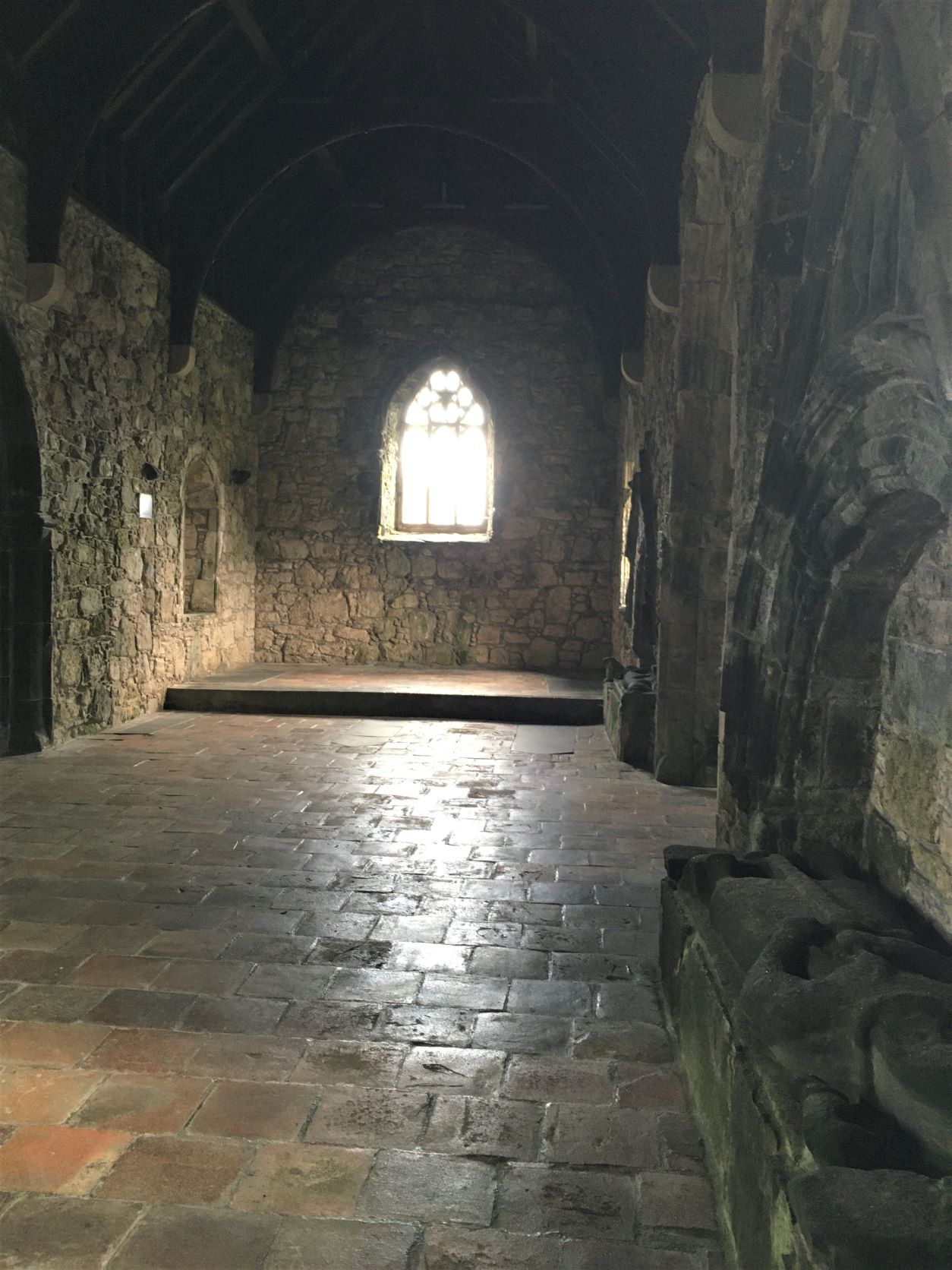
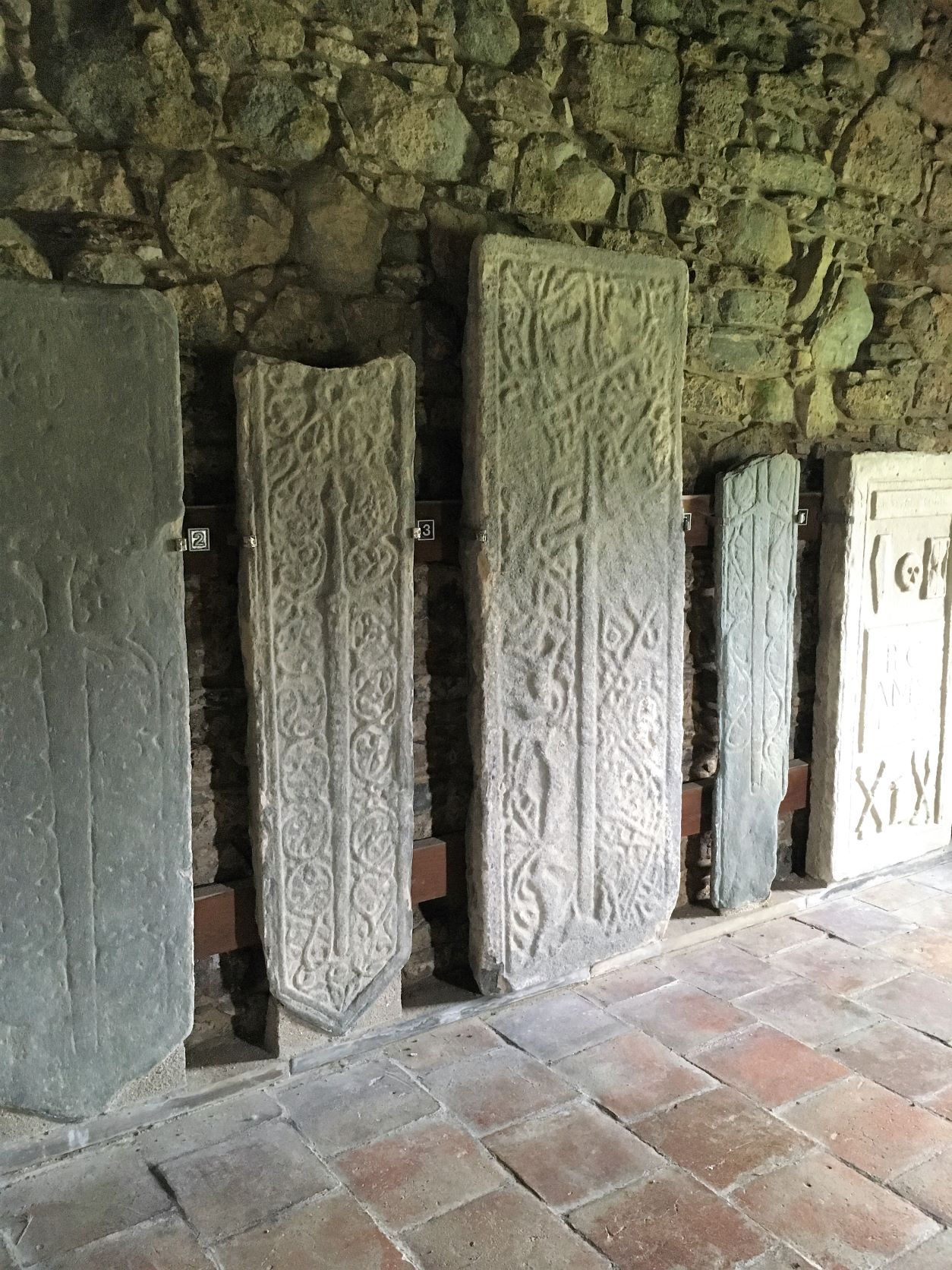
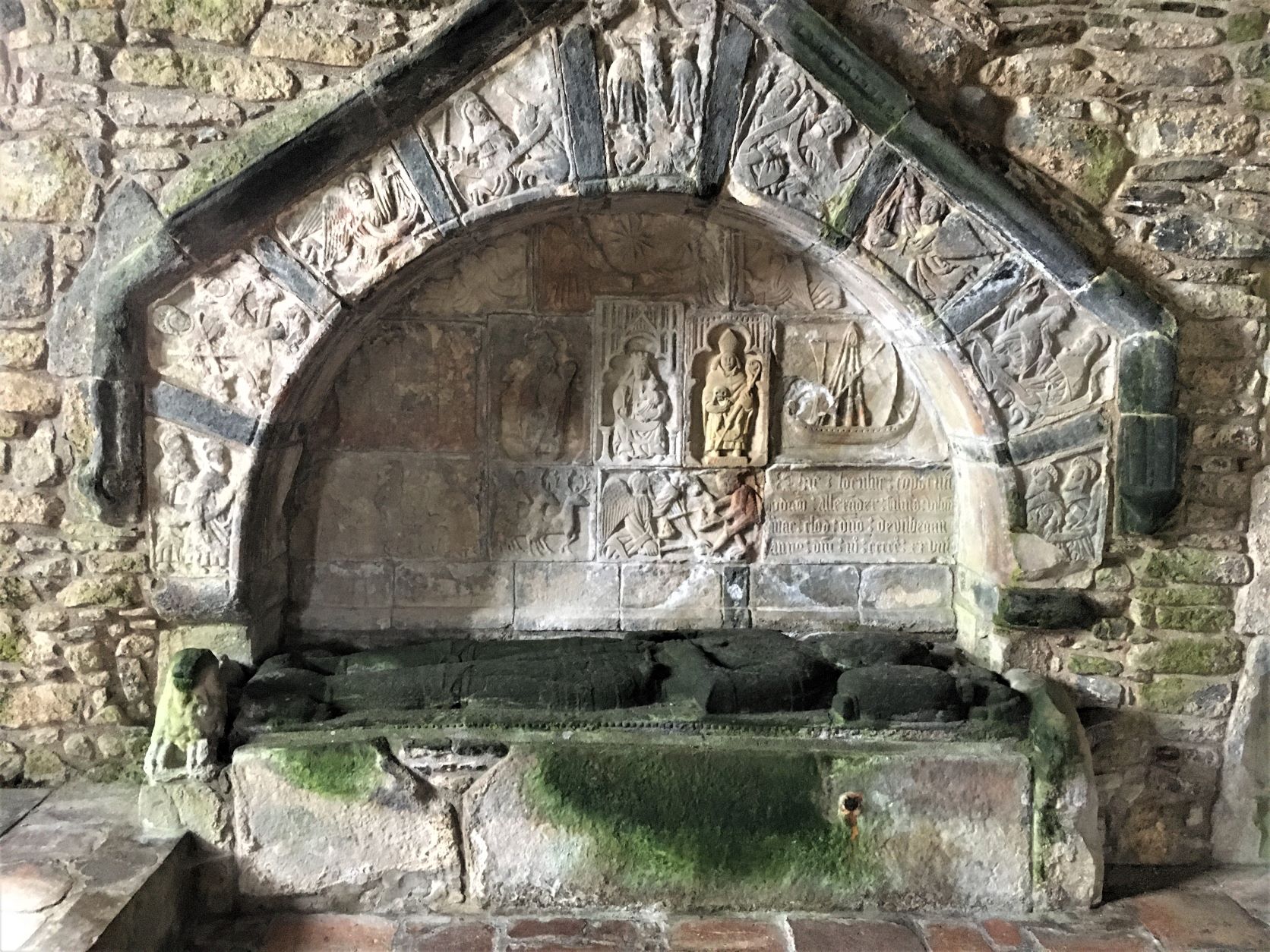
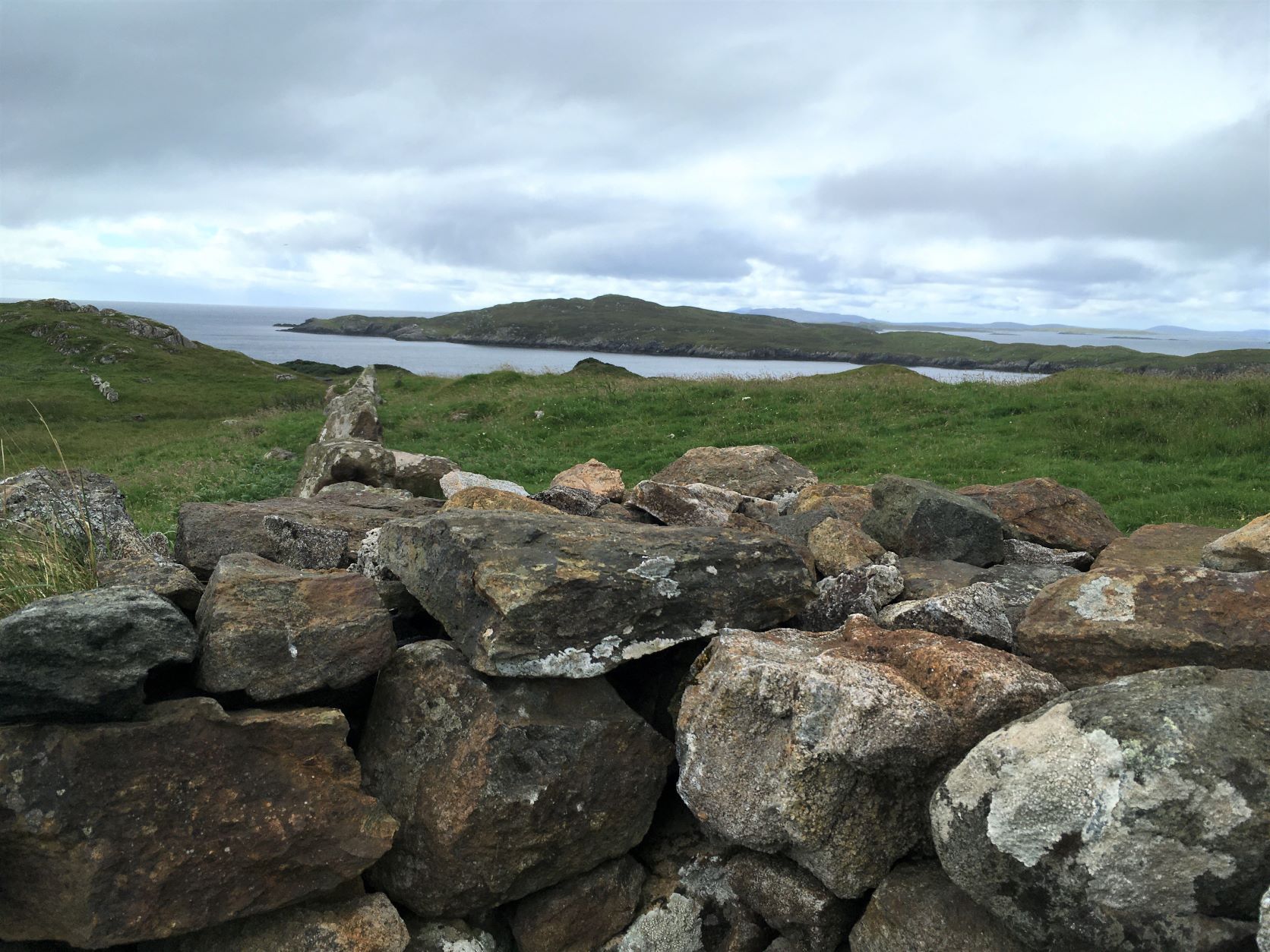
We then stopped at St. Clemens Church, a medieval church built by the MacLeod clan. It’s a pretty church, decorated with intricate carvings both inside and outside.
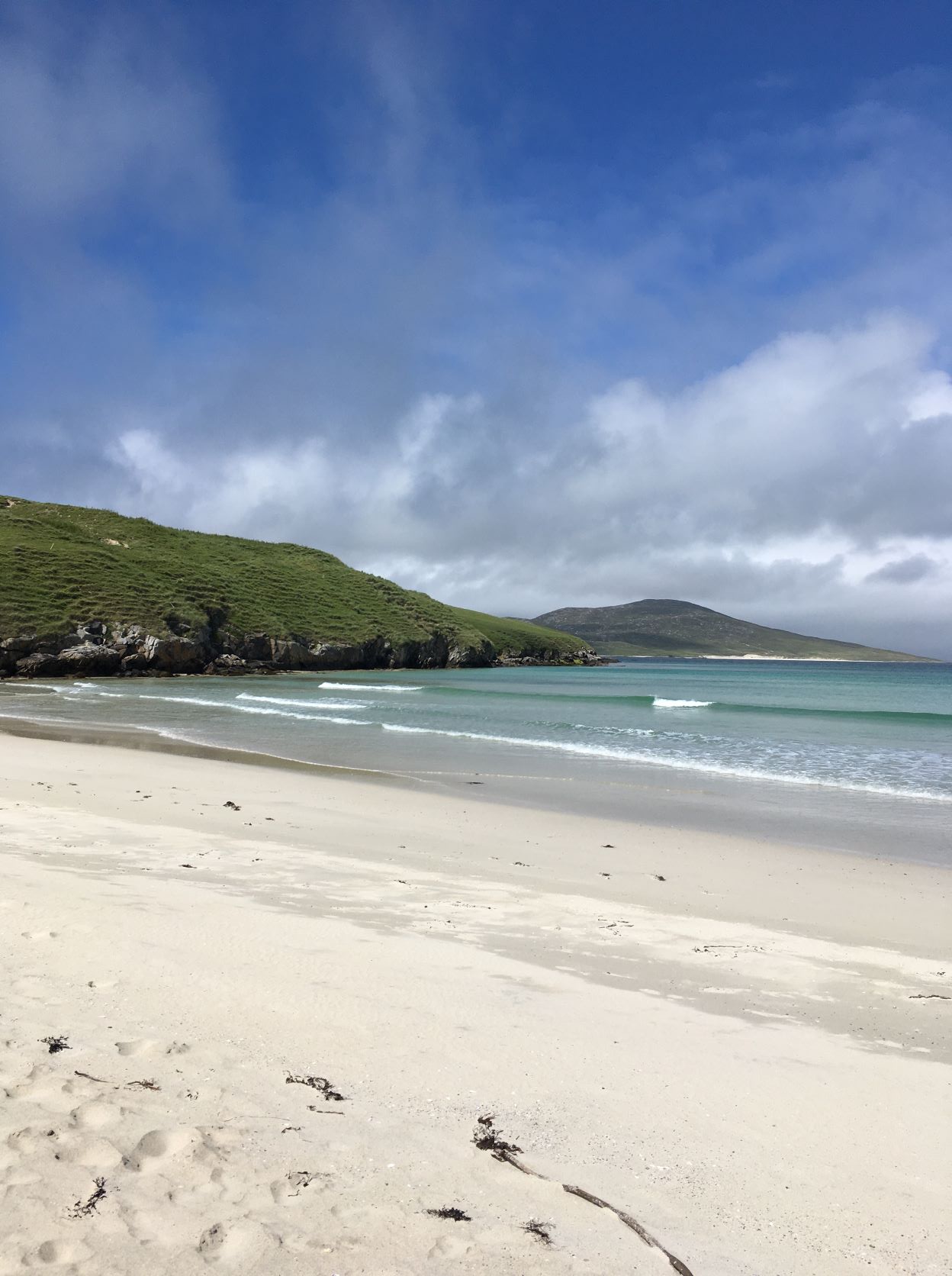
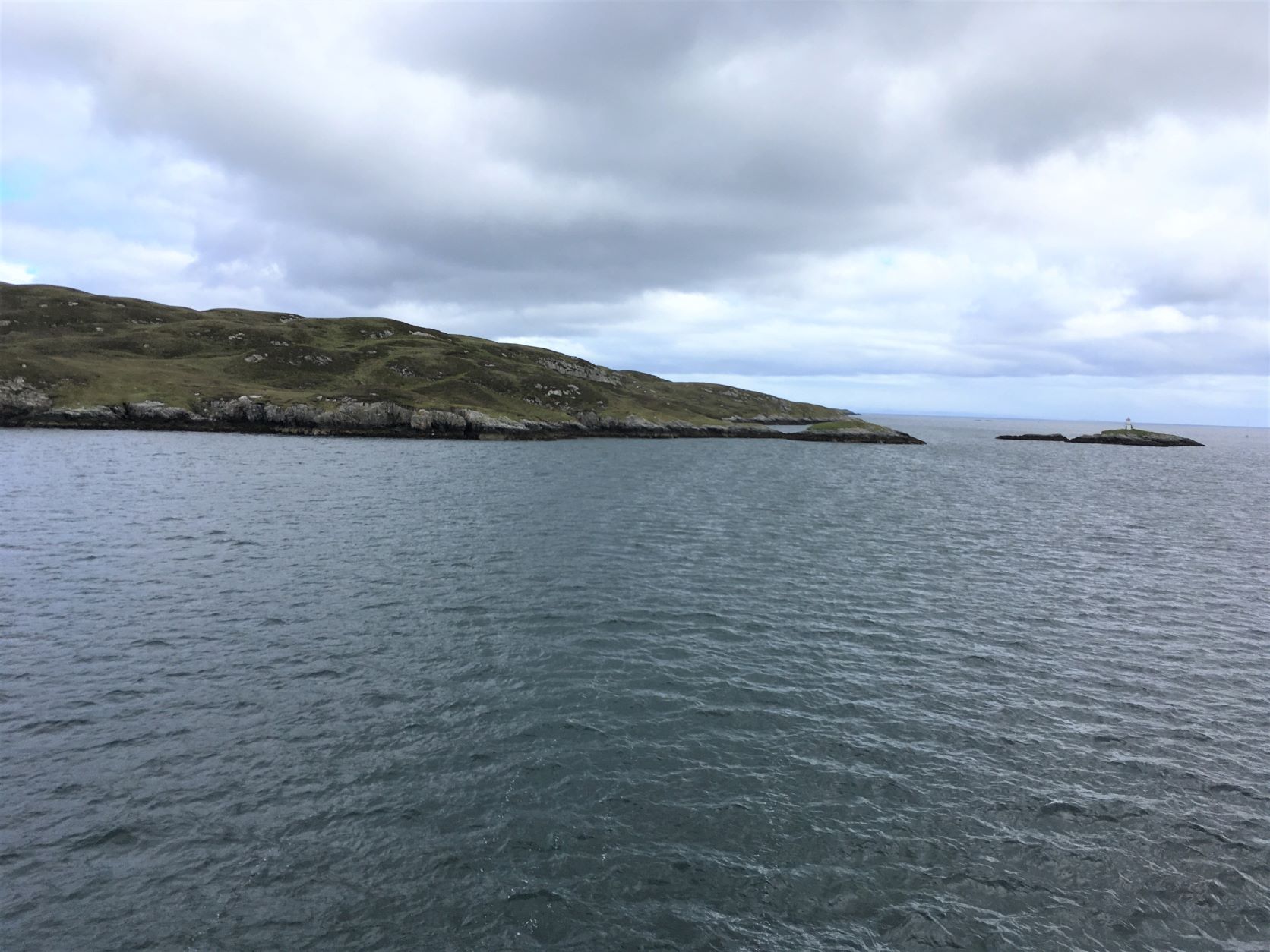
After that, we headed to our last stop on Lewis and Harris, Horgabost Beach, which is another gorgeous beach. We then had a bit of time at the shops in Tarbert near the port (a gin distillery and a couple of nice Harris tweed shops). After buying some souvenirs, we took the ferry over to Skye. Once we arrived, we drove to Portree and settled in to our accommodations.
Day 13: Isle of Skye (Fairy Glen, Quairang, Kilt Rock, Lealt Gorge, Old Man of Storr, Lesser Pools, Glen Brittle Beach, Dun Beag Broch)
The Isle of Skye is the most visited of the Scottish islands, for a number of reasons. It is accessible by bridge, whereas the others require a ferry ride, and it is located a short drive from Edinburgh and Glasgow. It is also stunningly beautiful, with a number of unique and dramatic landscapes. While the beauty of Skye is undeniable, these factors also mean that it is very busy, with large number of tourists, especially in the summer months. Our guide told us his favorite time to visit Skye is in February, when the weather tends to keep most people away.
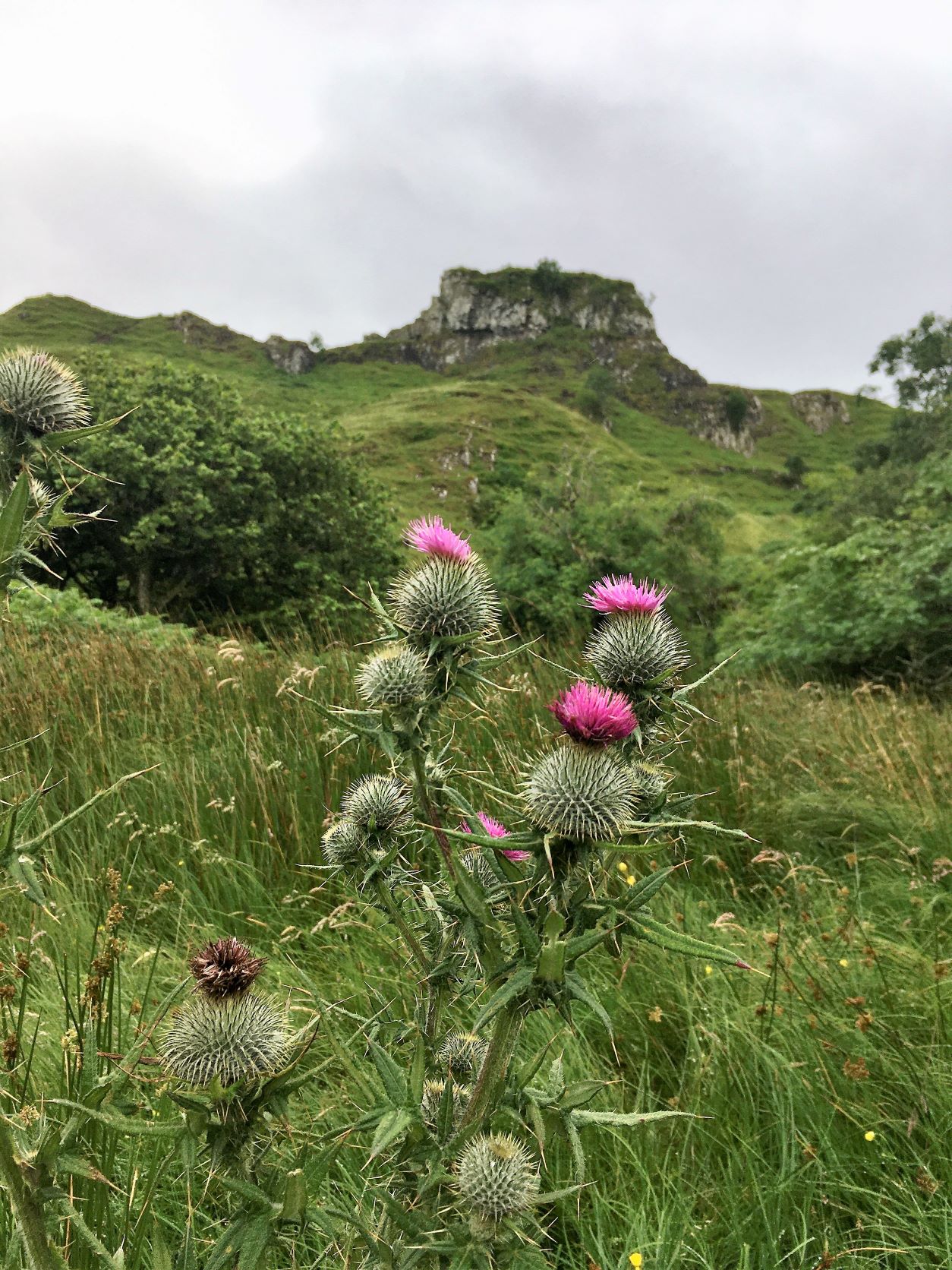
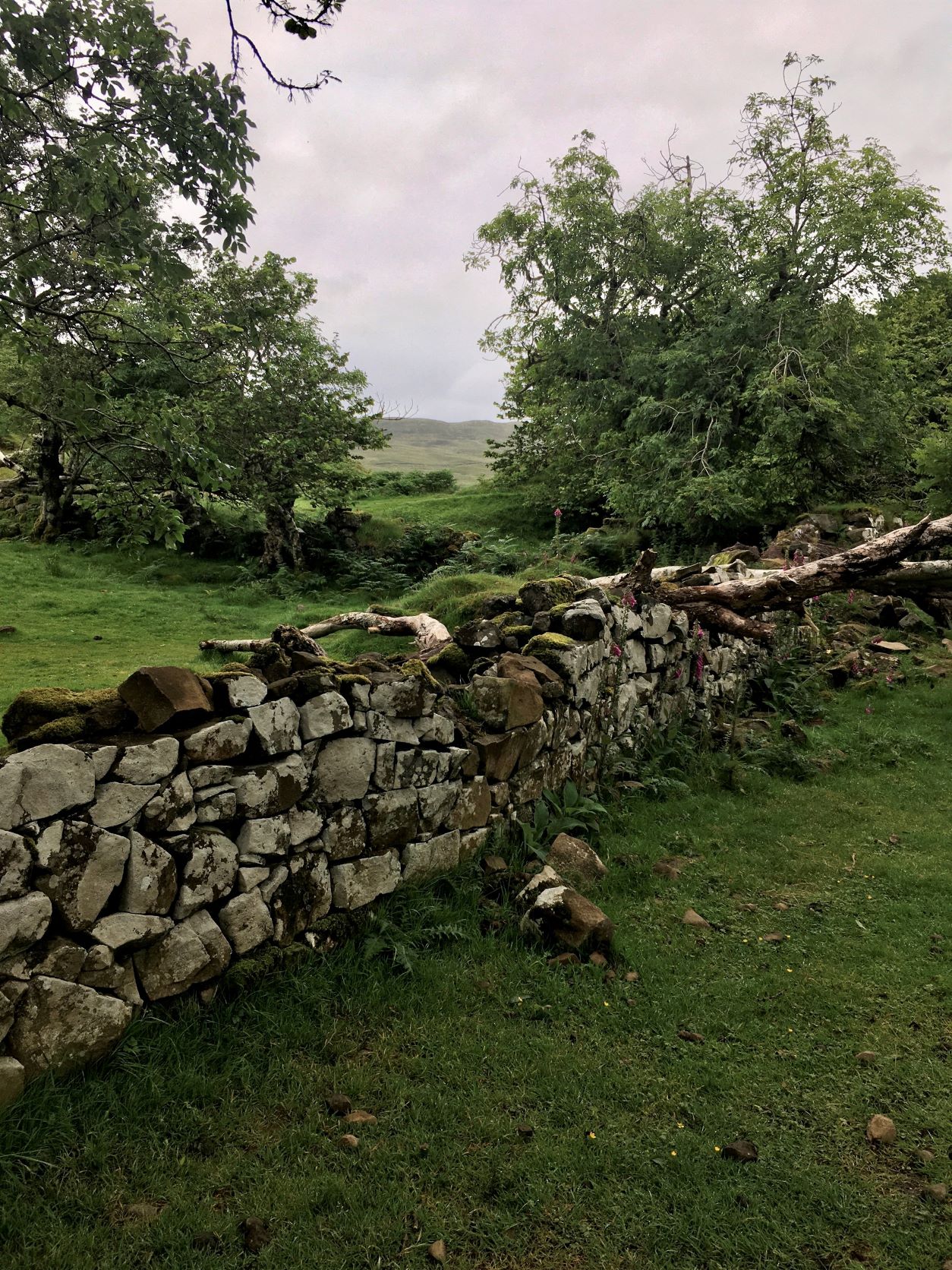
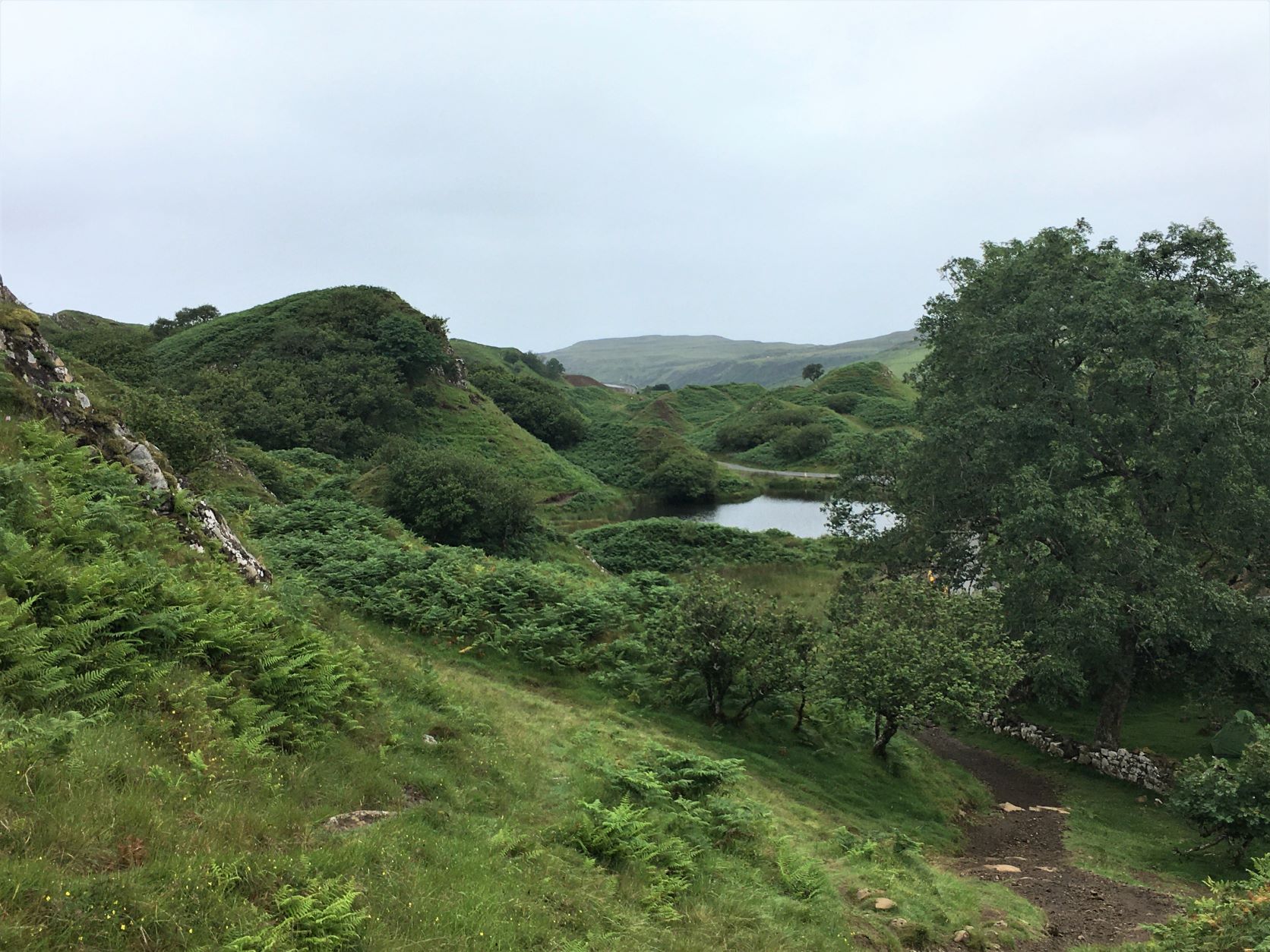
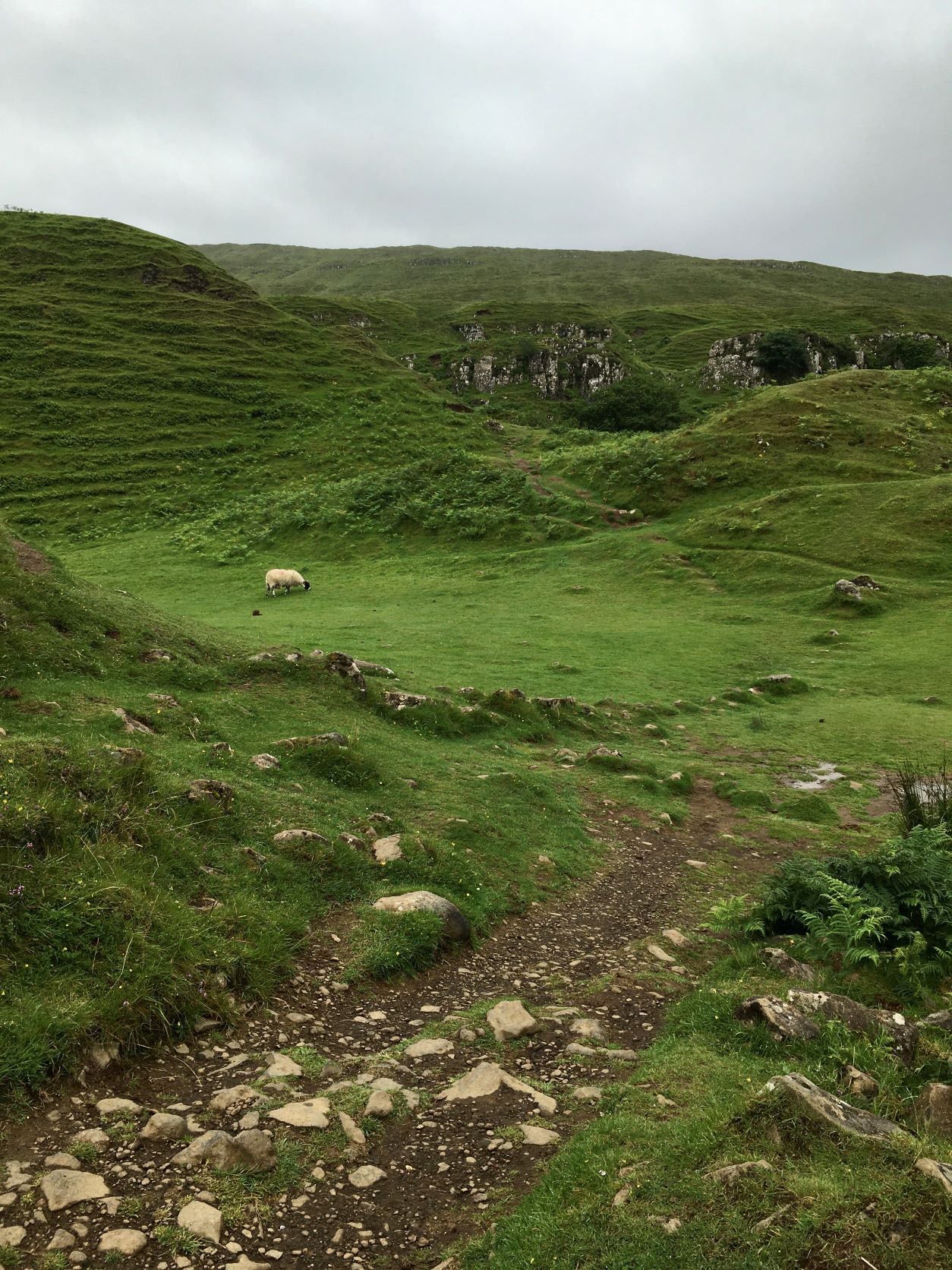
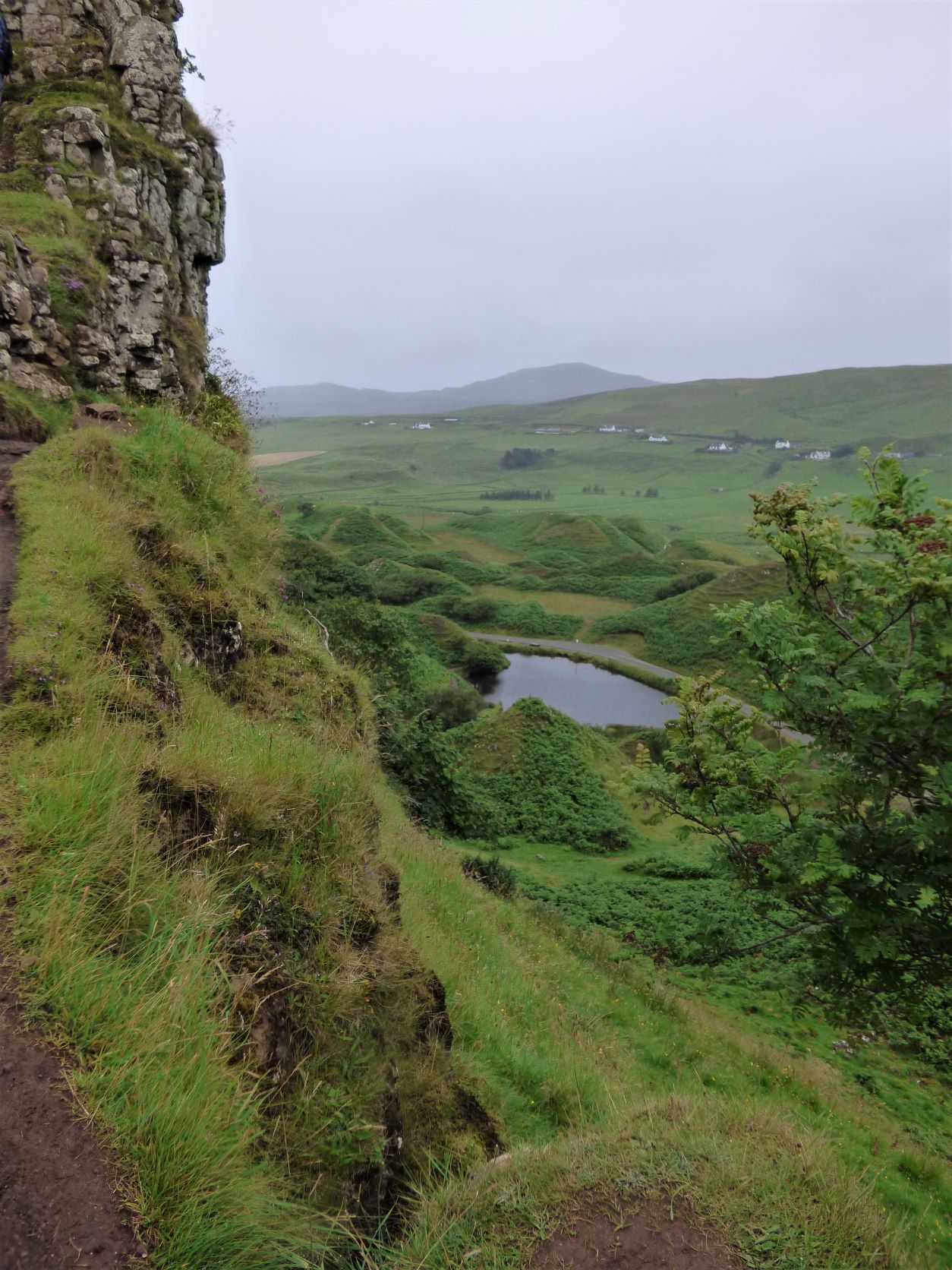
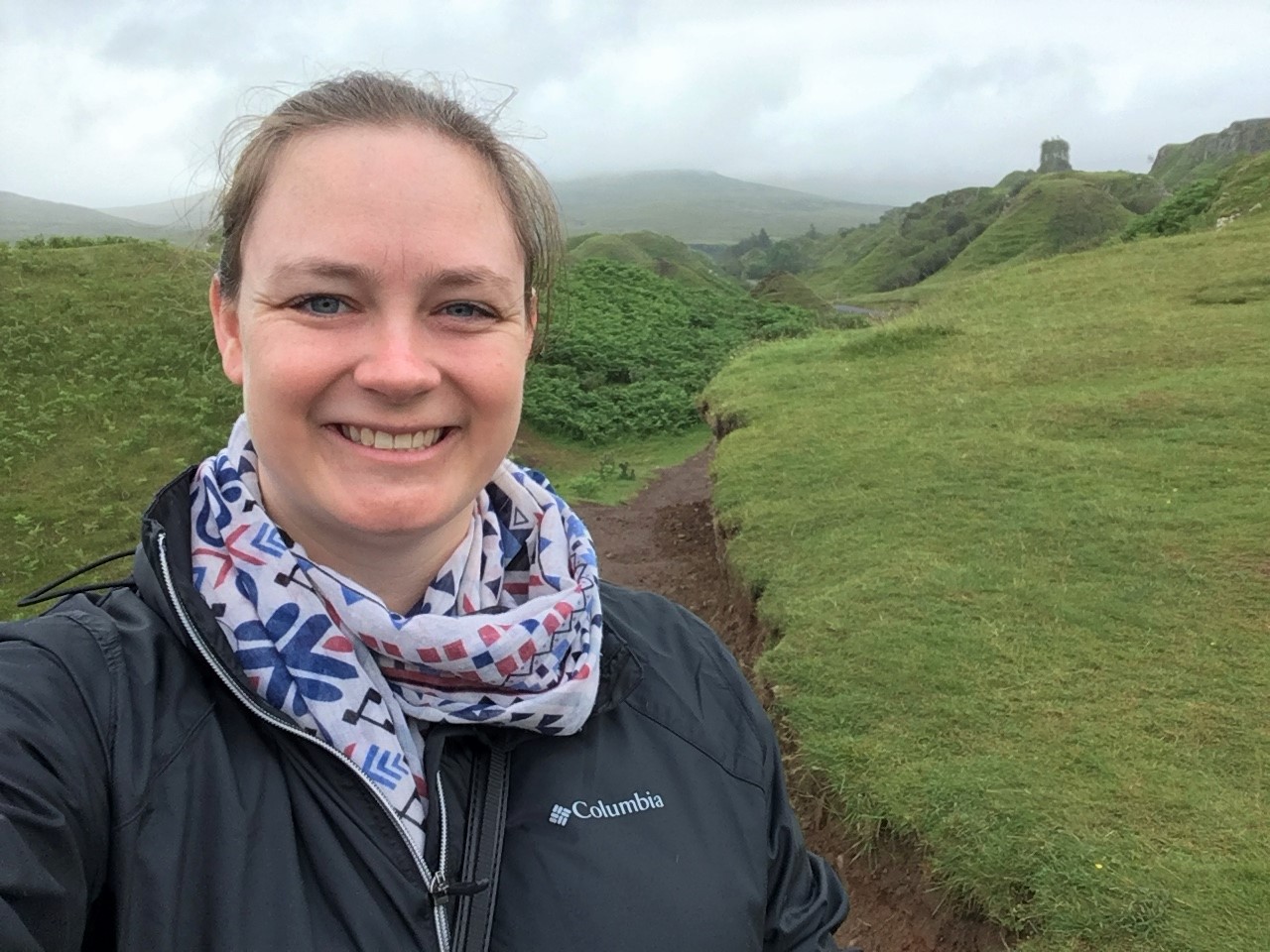
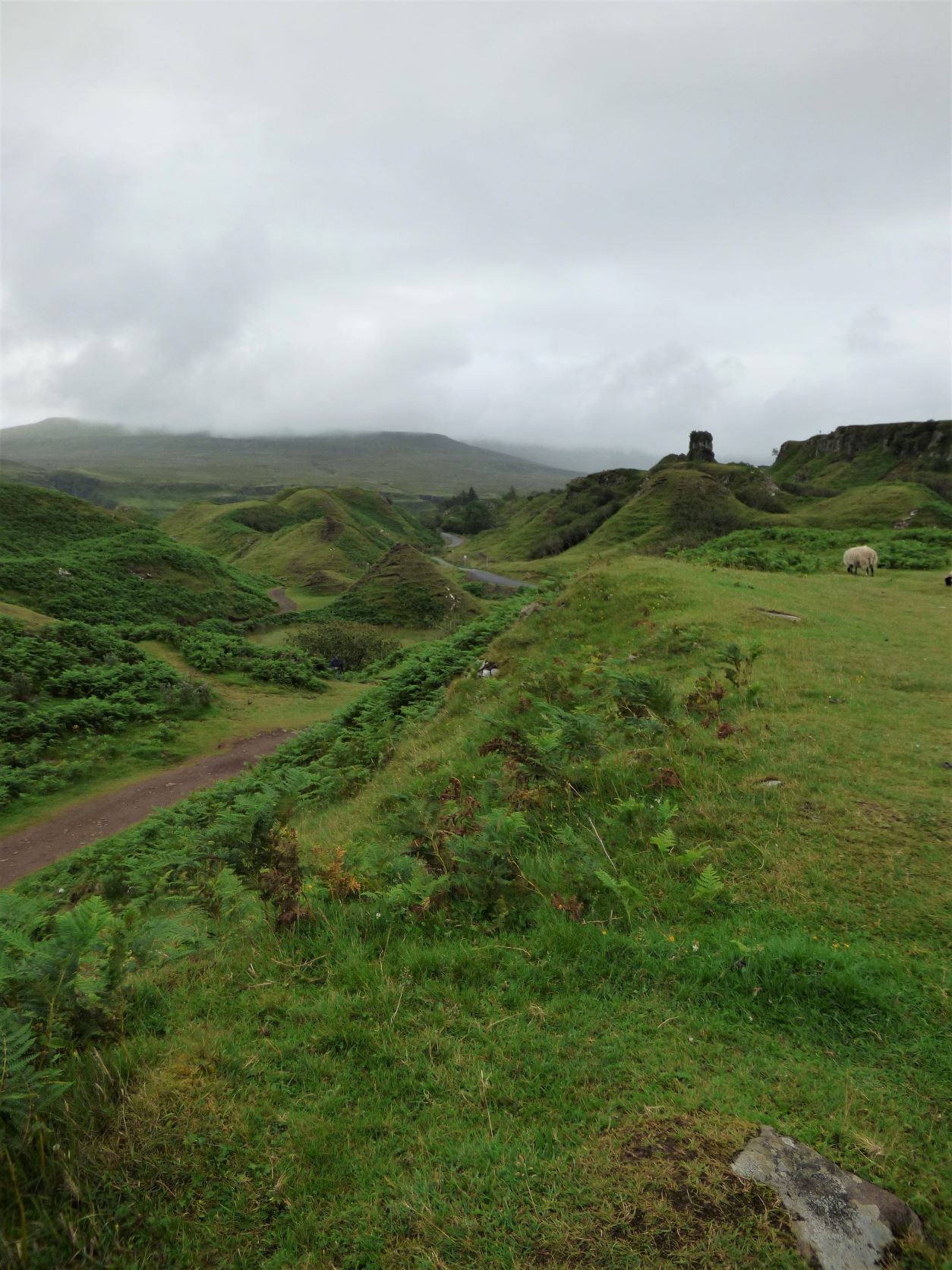
To beat the crowds a bit, we got started fairly early. Our first stop of the day was at the Faerie (Fairy) Glen. It truly is a magical place. It’s an unusual landscape, with dramatic hills and a couple of pretty ponds. You can see why it is considered to be where the faeries live. We had the place mostly to ourselves when we arrived (since we got there a little after 9). It was pretty busy by the time we left.
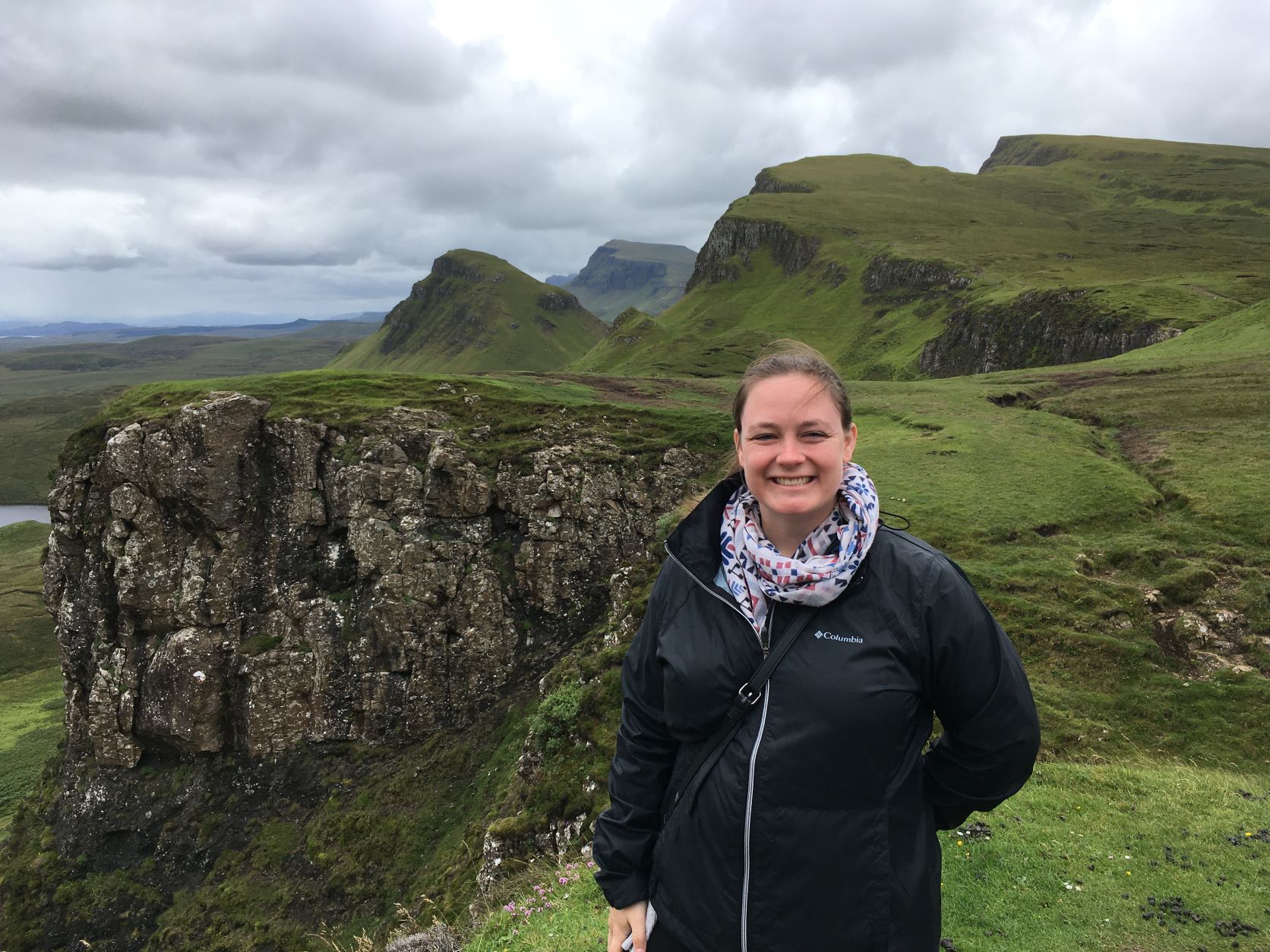
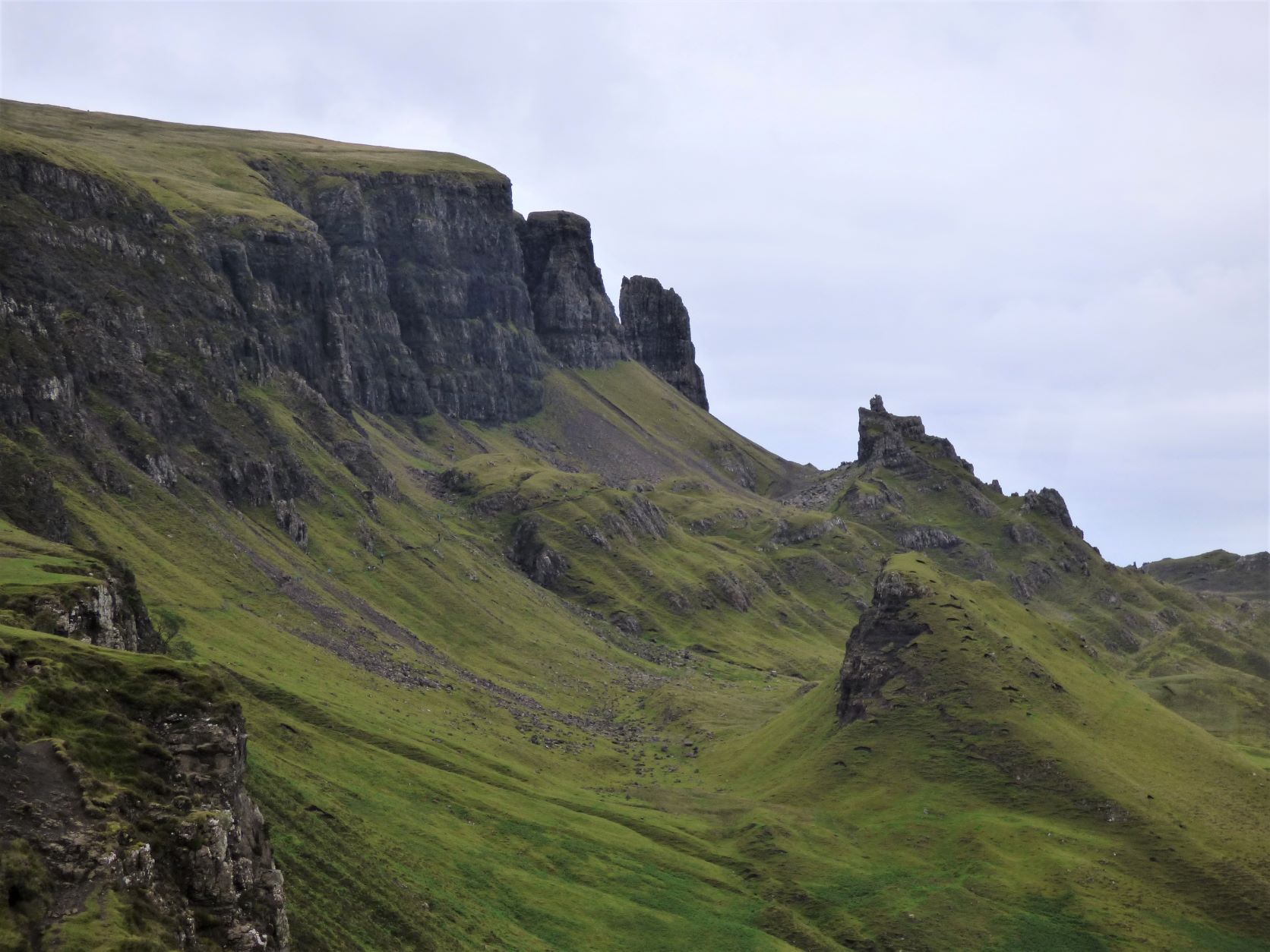


We then headed to the Quirang (kuh-rang), which is several dramatic cliffs and mountains along the coast. It truly is stunning. We walked up the trails a little way and took in the views.
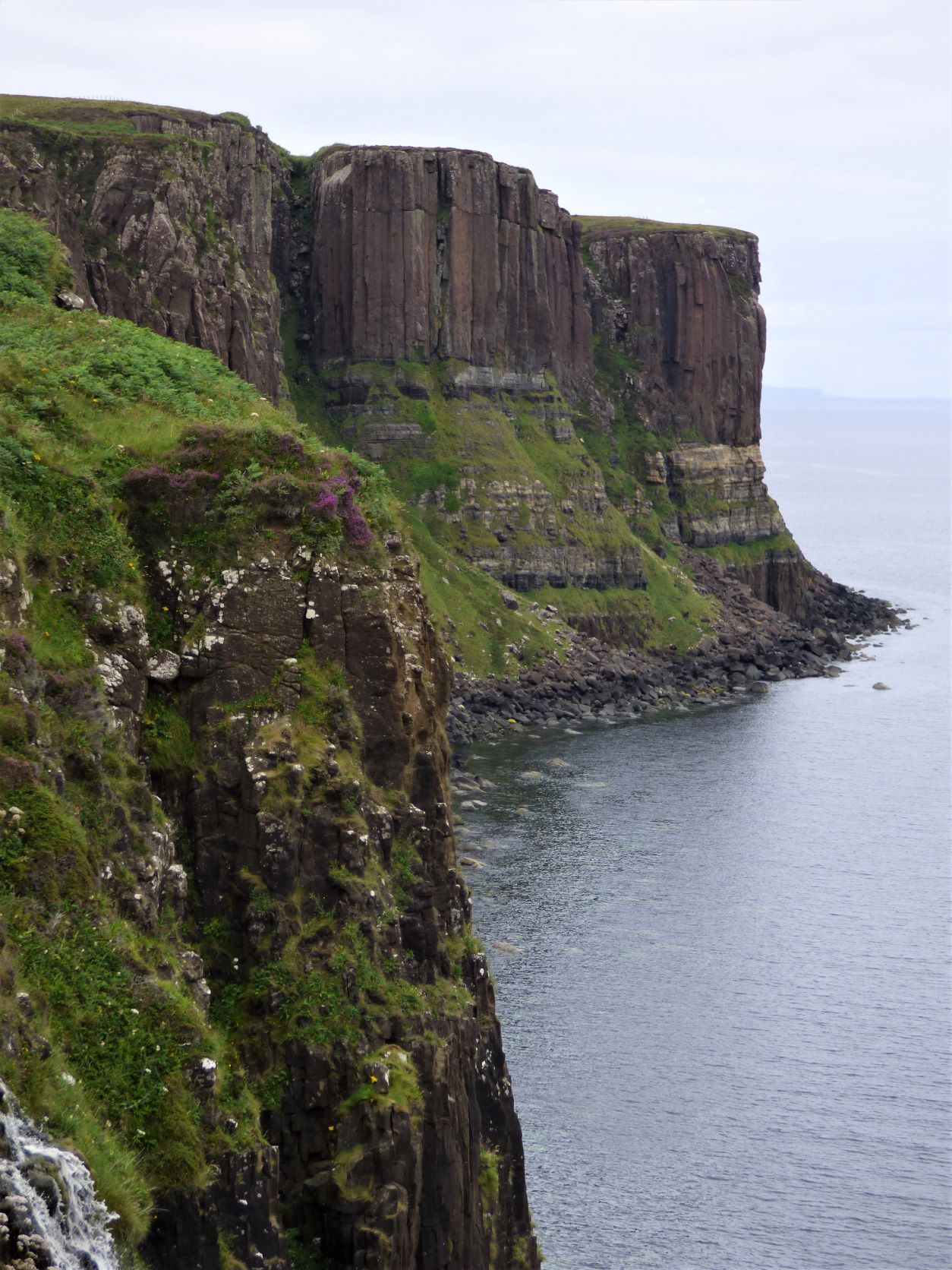
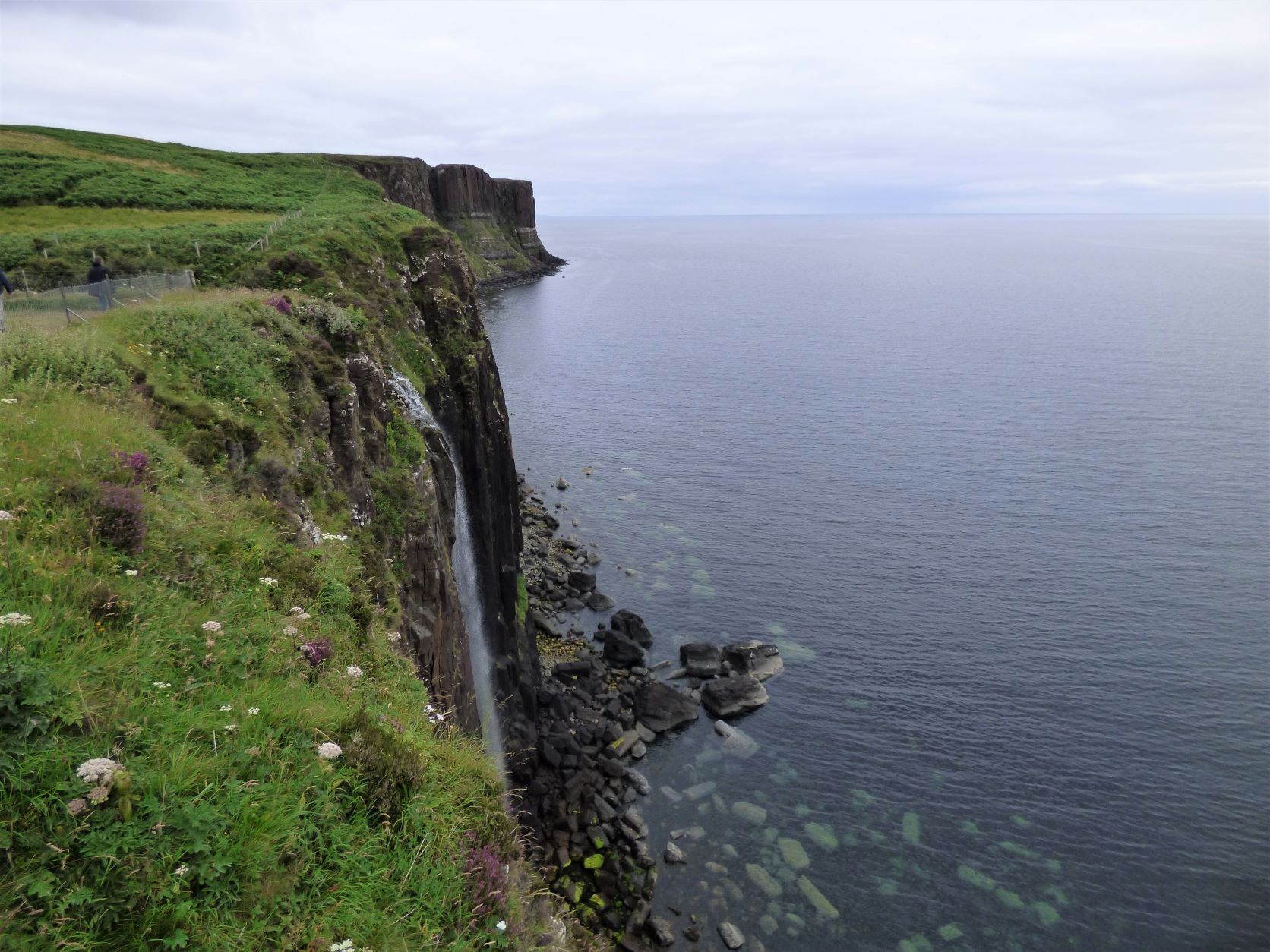

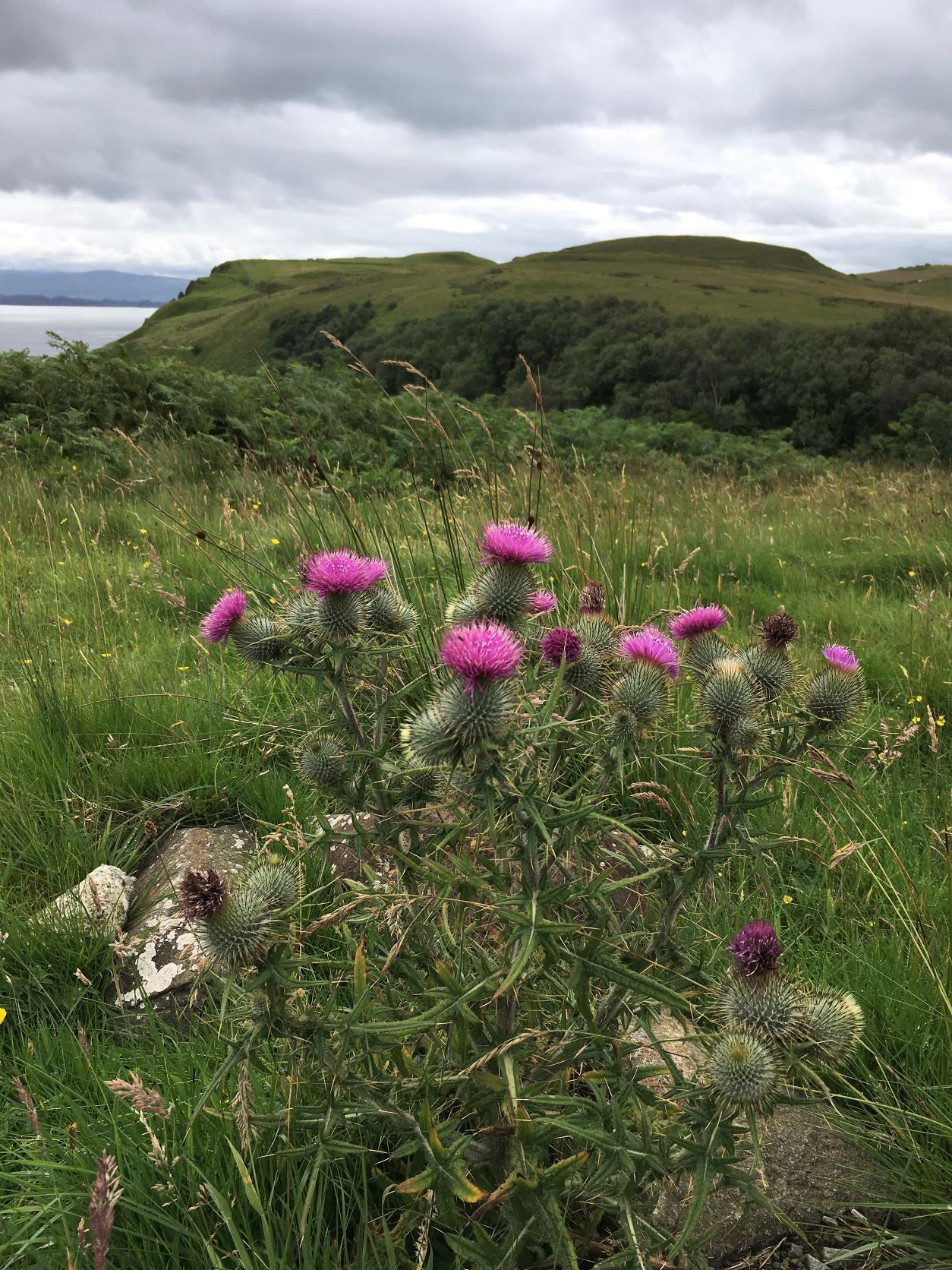
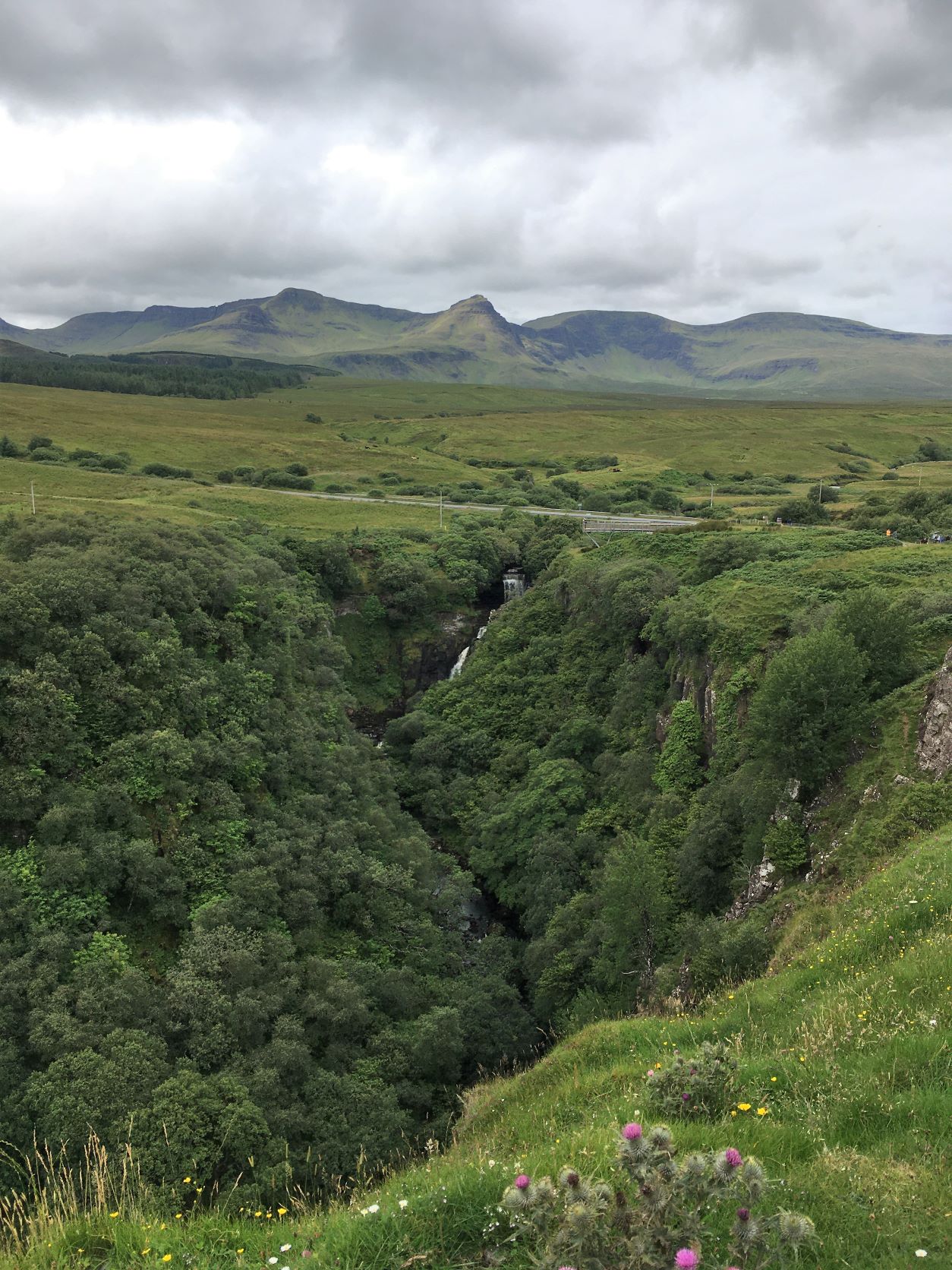
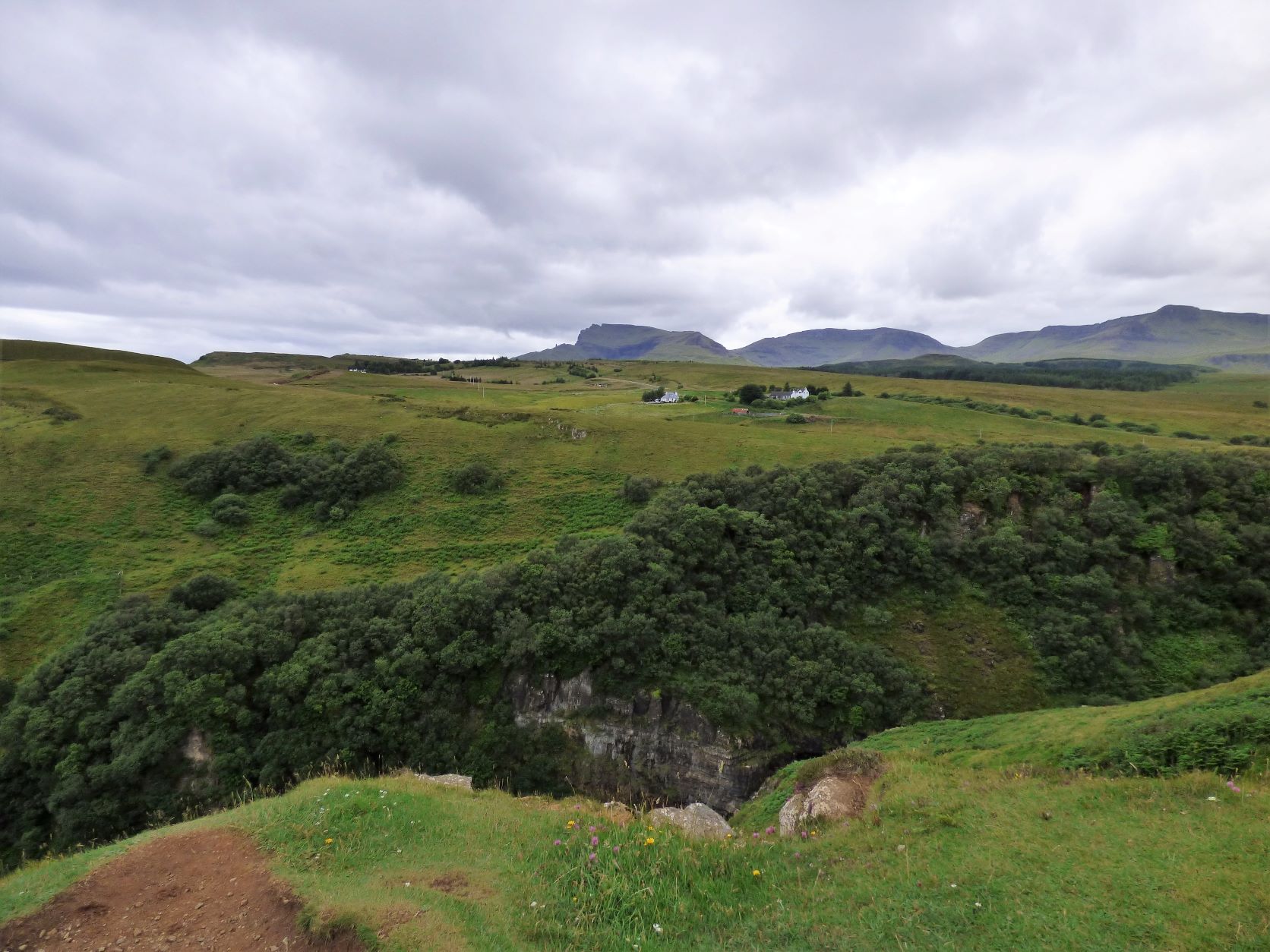
After that, we went to Kilt Rock, which is made up of basalt columns and looks like the pleats in a kilt. We then headed to Lealt Gorge. This is where Diatomite used to be mined and processed. There was also a nice waterfall, but the midgies (small mosquito-like insects that bite) were out in full force. In the afternoon, we returned to Portree and had about 2 hours for lunch and to look in the shops.
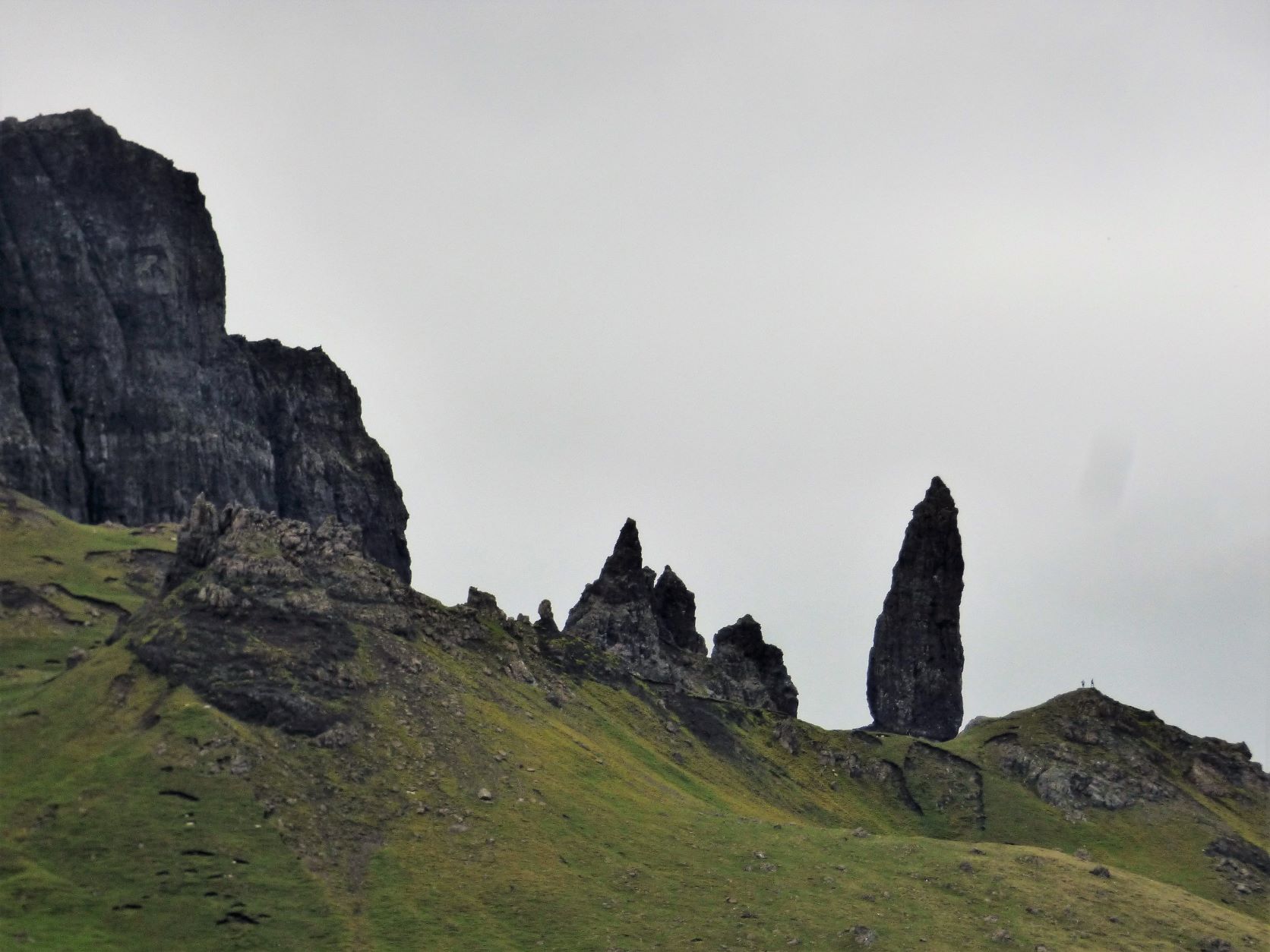
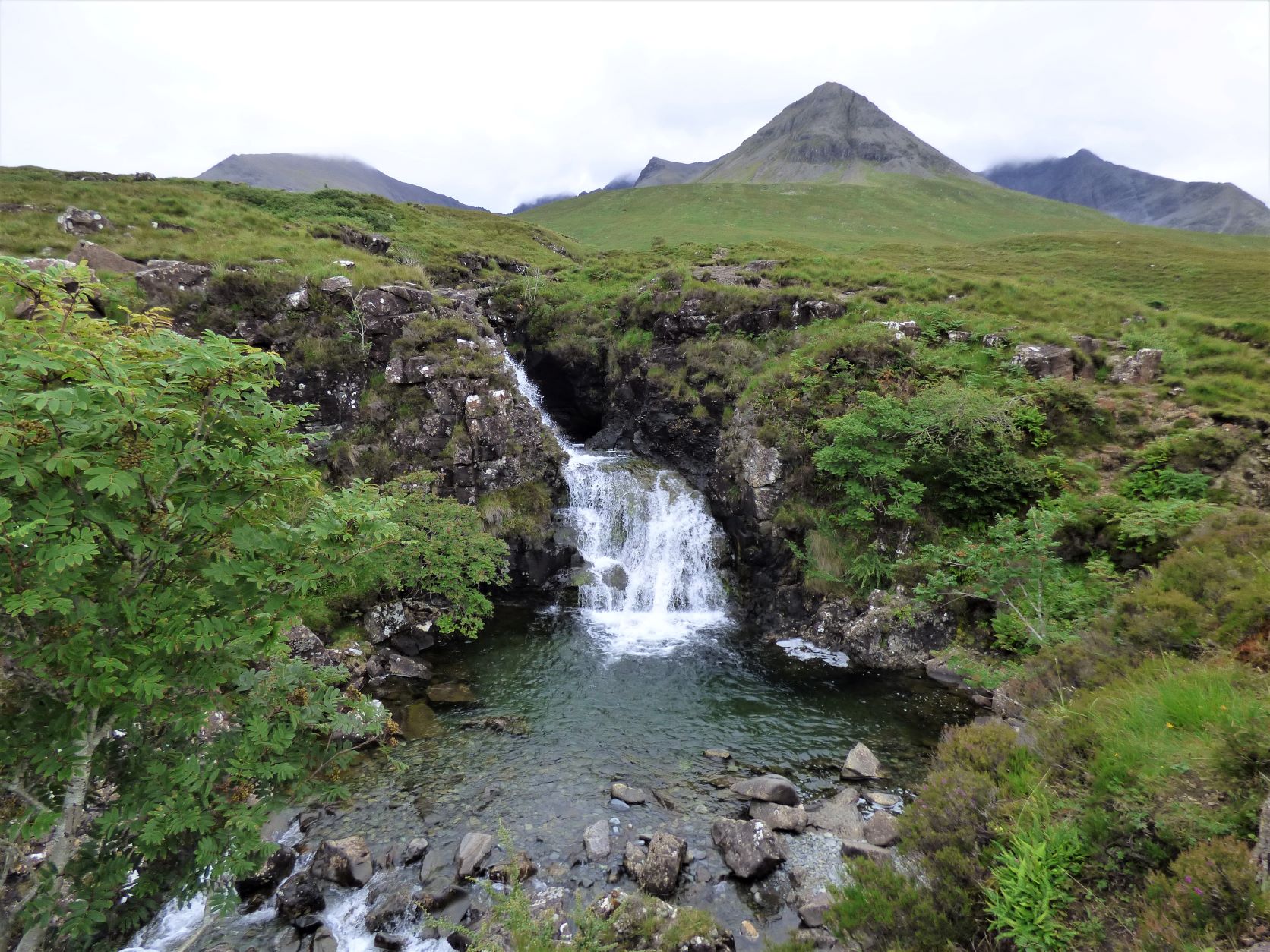
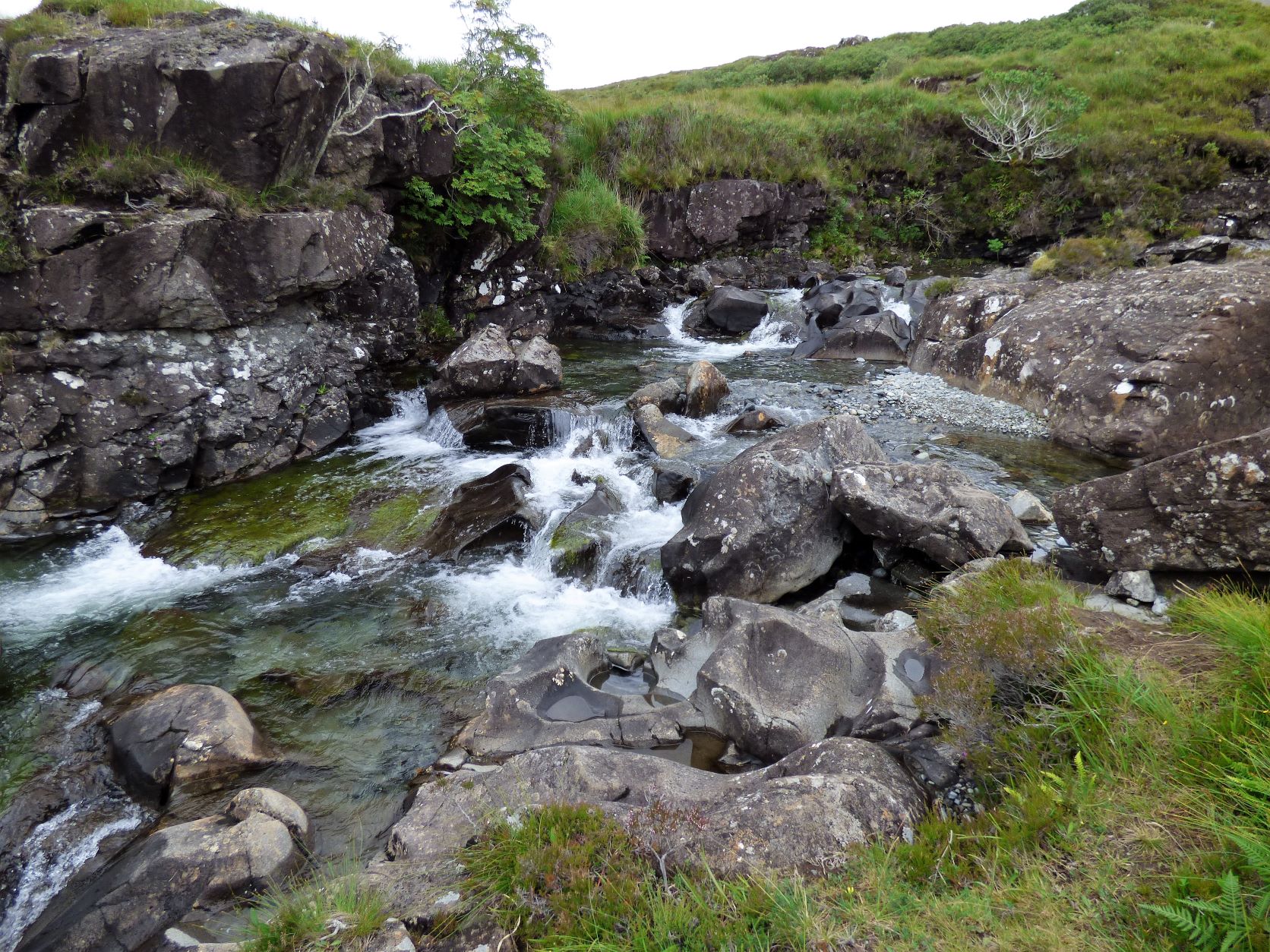
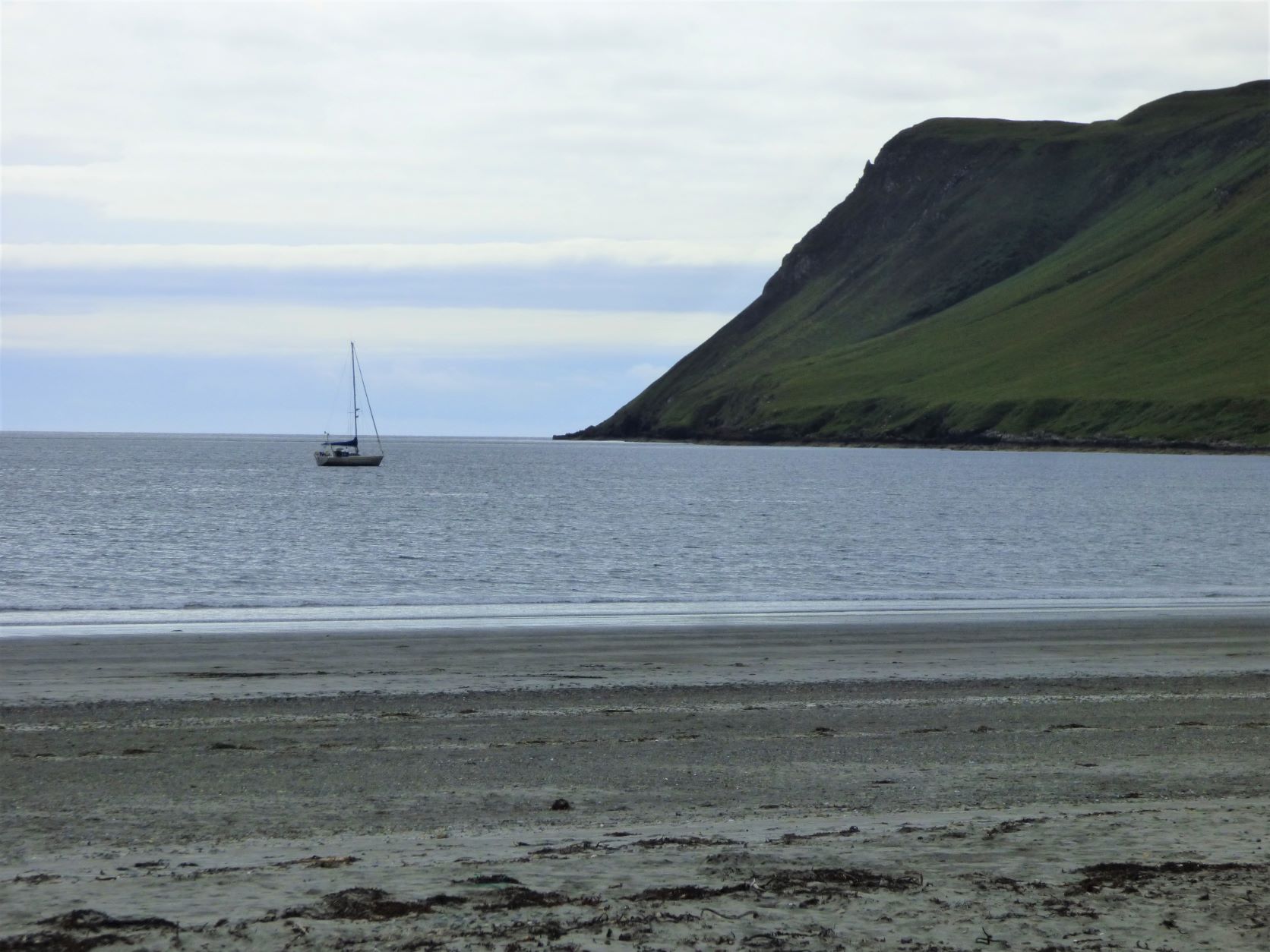
After lunch, we headed towards the Old Man of Storr. We stopped for some photos, but didn’t hike it. At our guard, Iain’s, recommendation, we decided not to do the faerie pools. In July, they are extremely busy (packed with people), and he suggested that we would probably be disappointed as a result. Instead, we went past the Faerie Pools and visited the Lesser Pools. They were still quite pretty, and we had it entirely to ourselves! We hiked to the top, then drove on to Glen Brittle Beach, which is a black sand beach (not as dark as the ones in Iceland, though). It wasn’t very busy, which was nice.
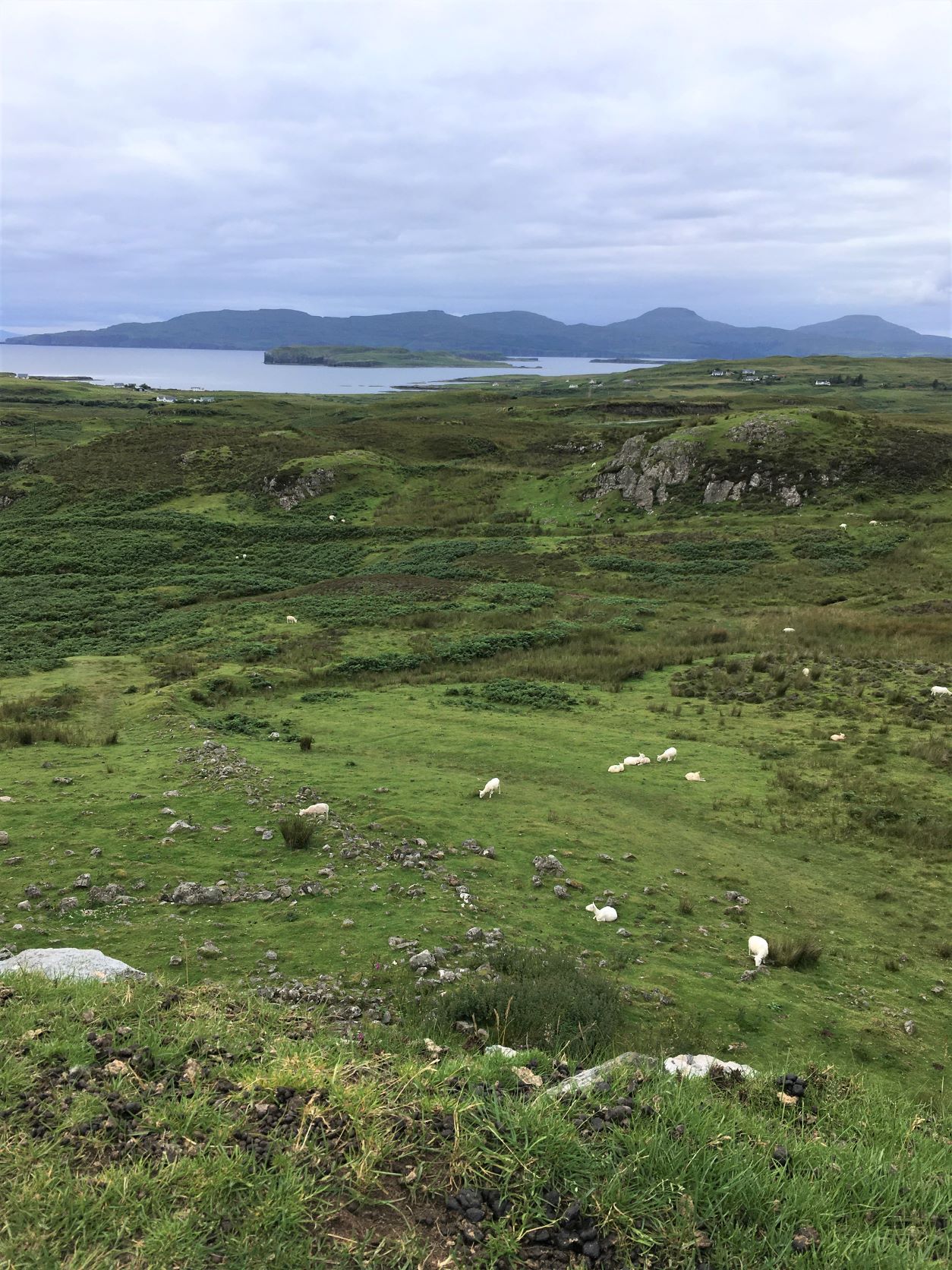
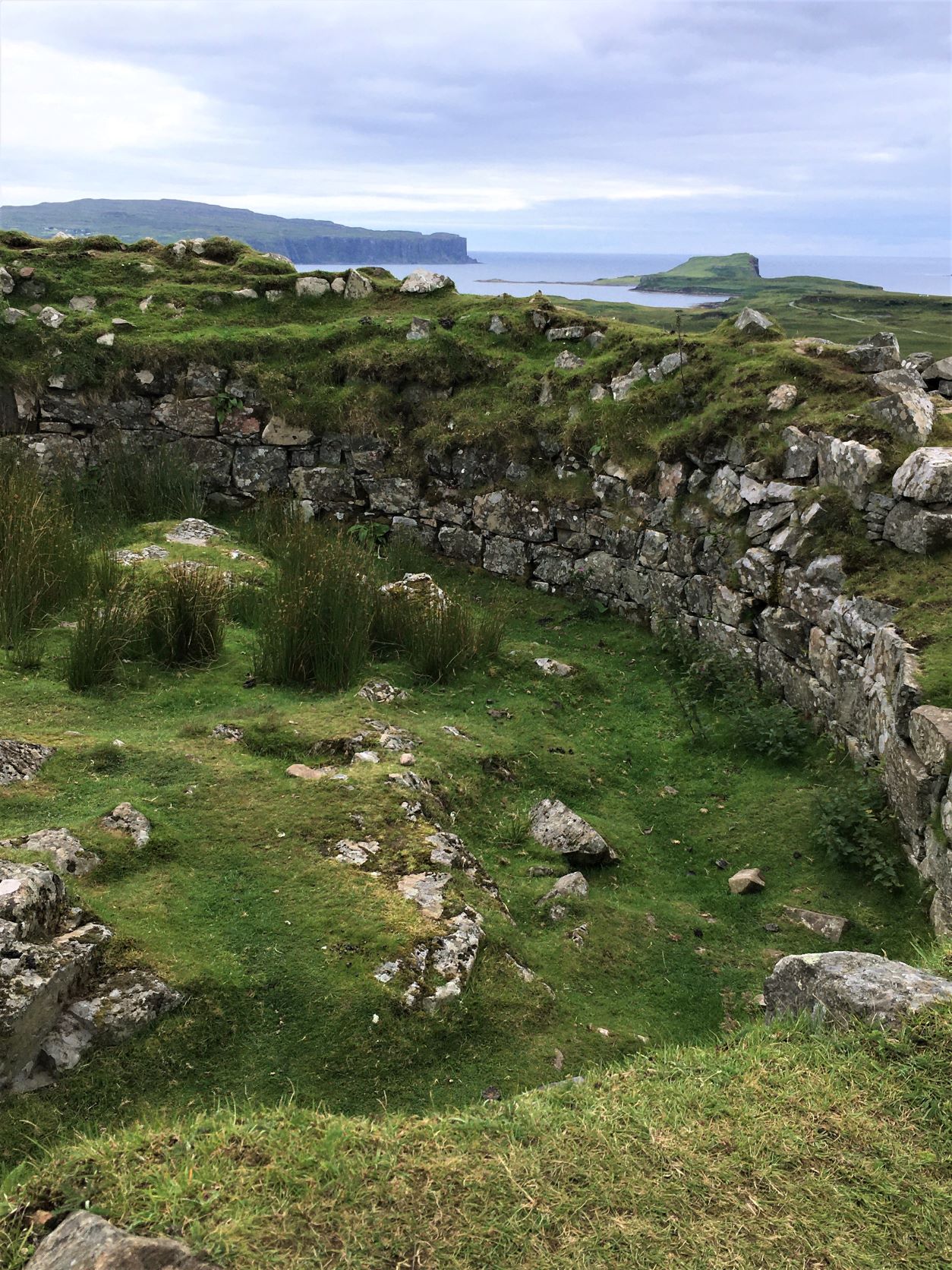
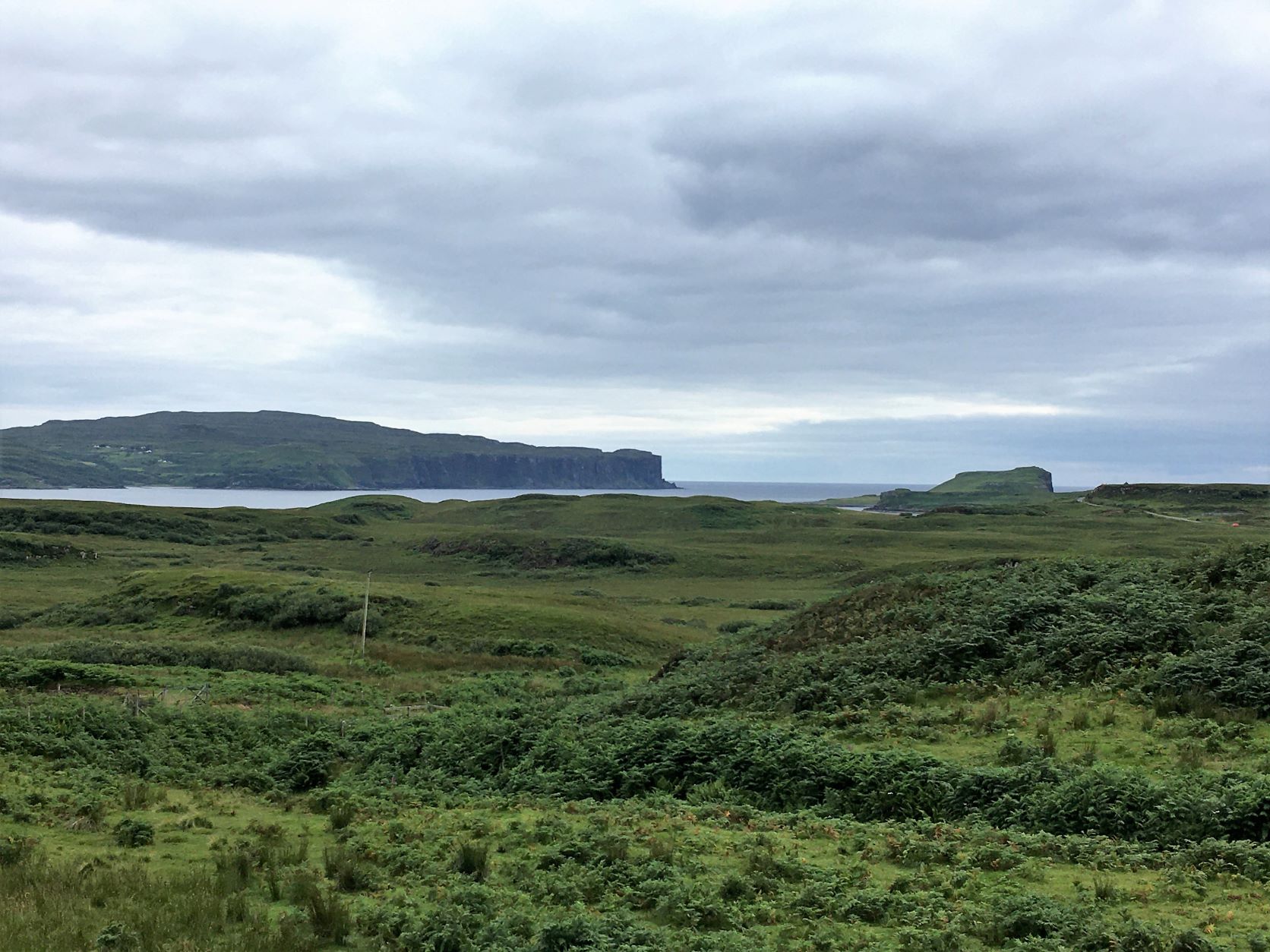
On our way back to Portree, we stopped at the Dun Beag Broch, an iron age stone tower. Although no longer very tall, you can actually go in it and get a sense of the size/structure. There were also really nice views of the countryside from there. Once we got back to Portree, I had dinner with some of my travel companions, Katie, Carrie, and Jessy, as it was our last night traveling together.
Day 14: Isle of Skye (Castle Maol) to Edinburgh: Eilean Donan Castle, Carr Brae viewpoint, Loch Duich, Glencoe, Loch Ba, Rannoch Moor

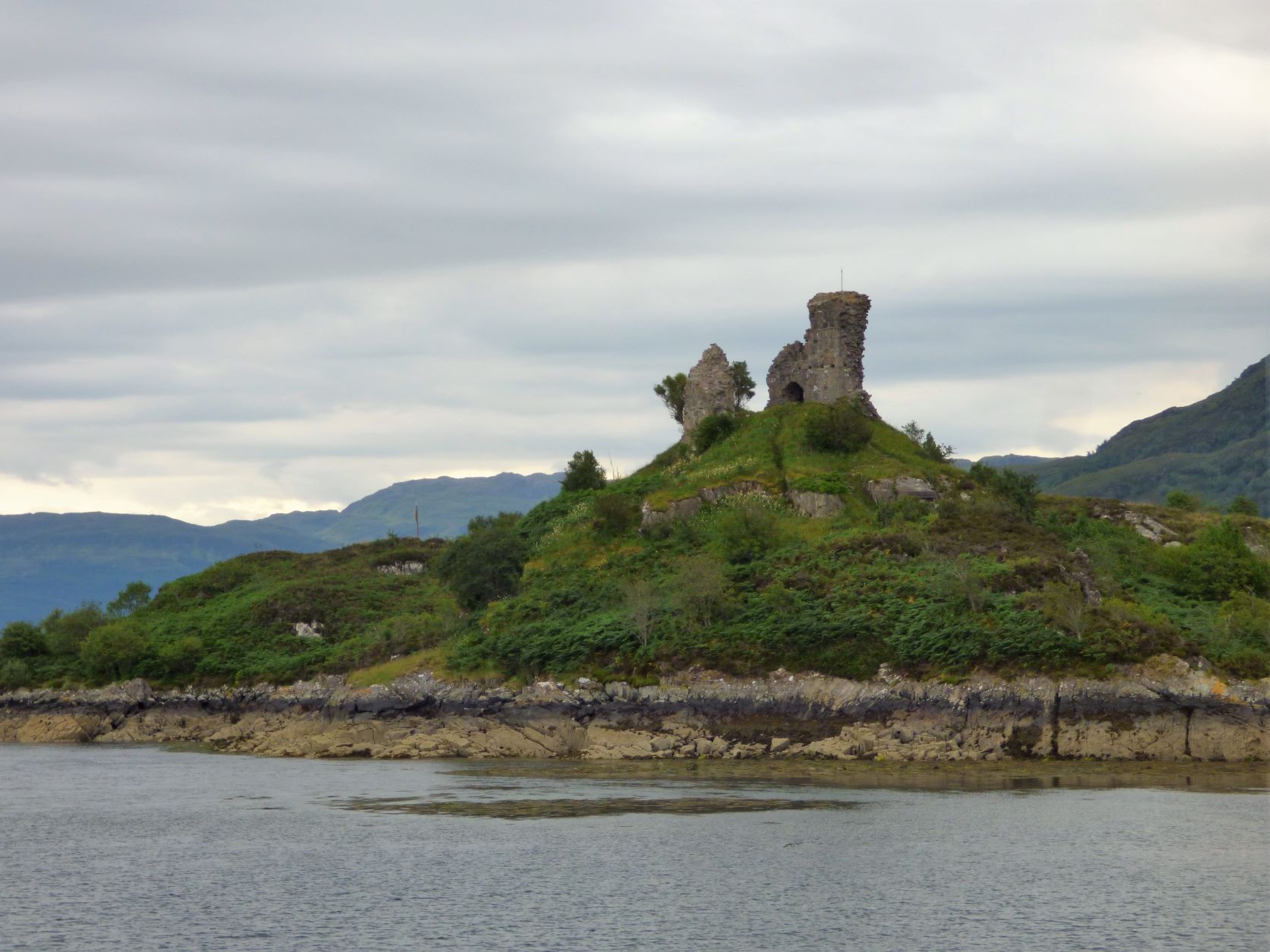
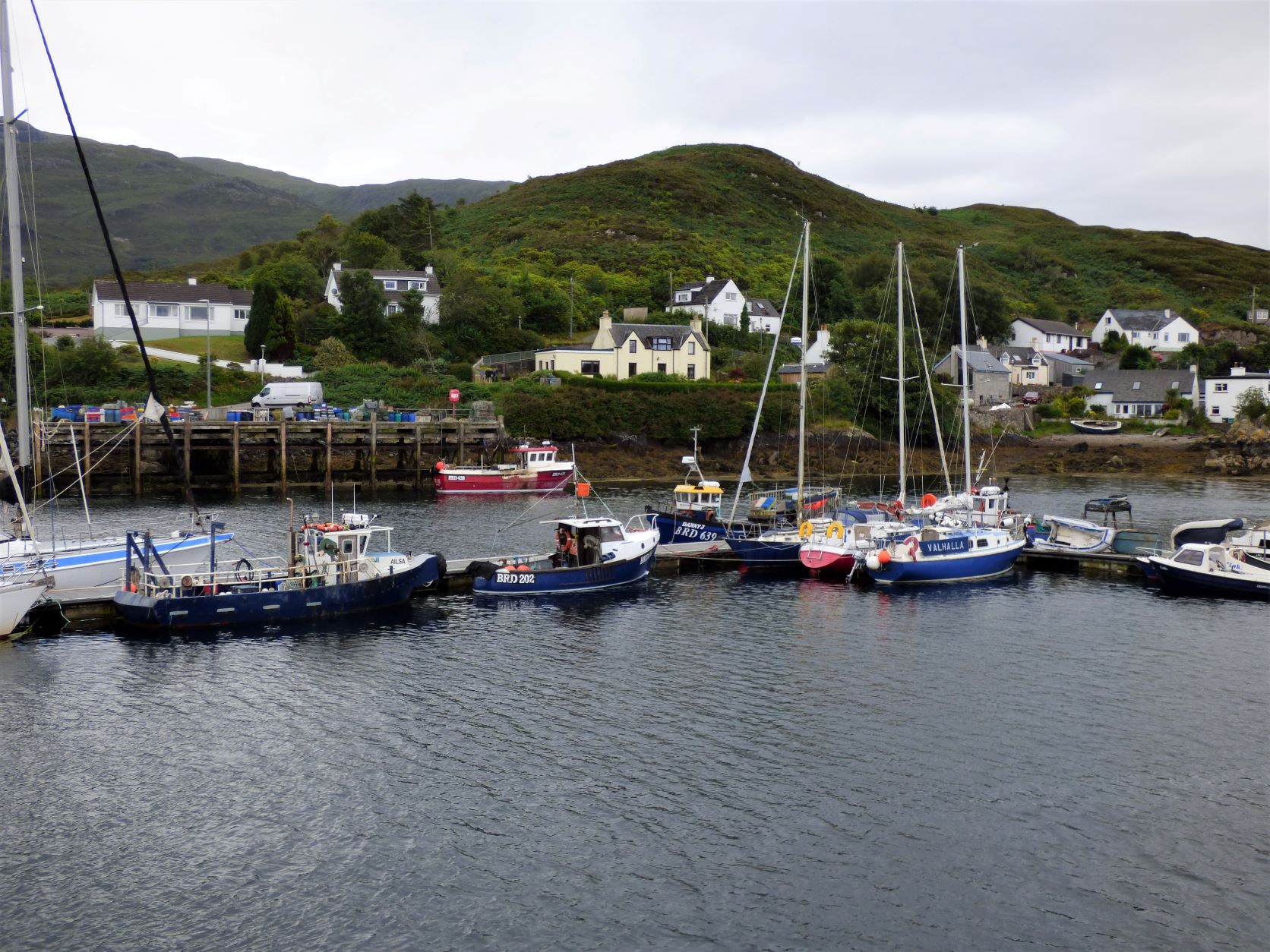
Our final day of the tour was bittersweet. Our group of 14 travel companions on the tour had gotten to know each other pretty well, and none of us were ready for our travels to end. We left the Isle of Skye in the morning, stopping briefly to see some “hairy coos” (Highland cattle) and by Castle Maol before crossing the bridge over the the mainland of Scotland.
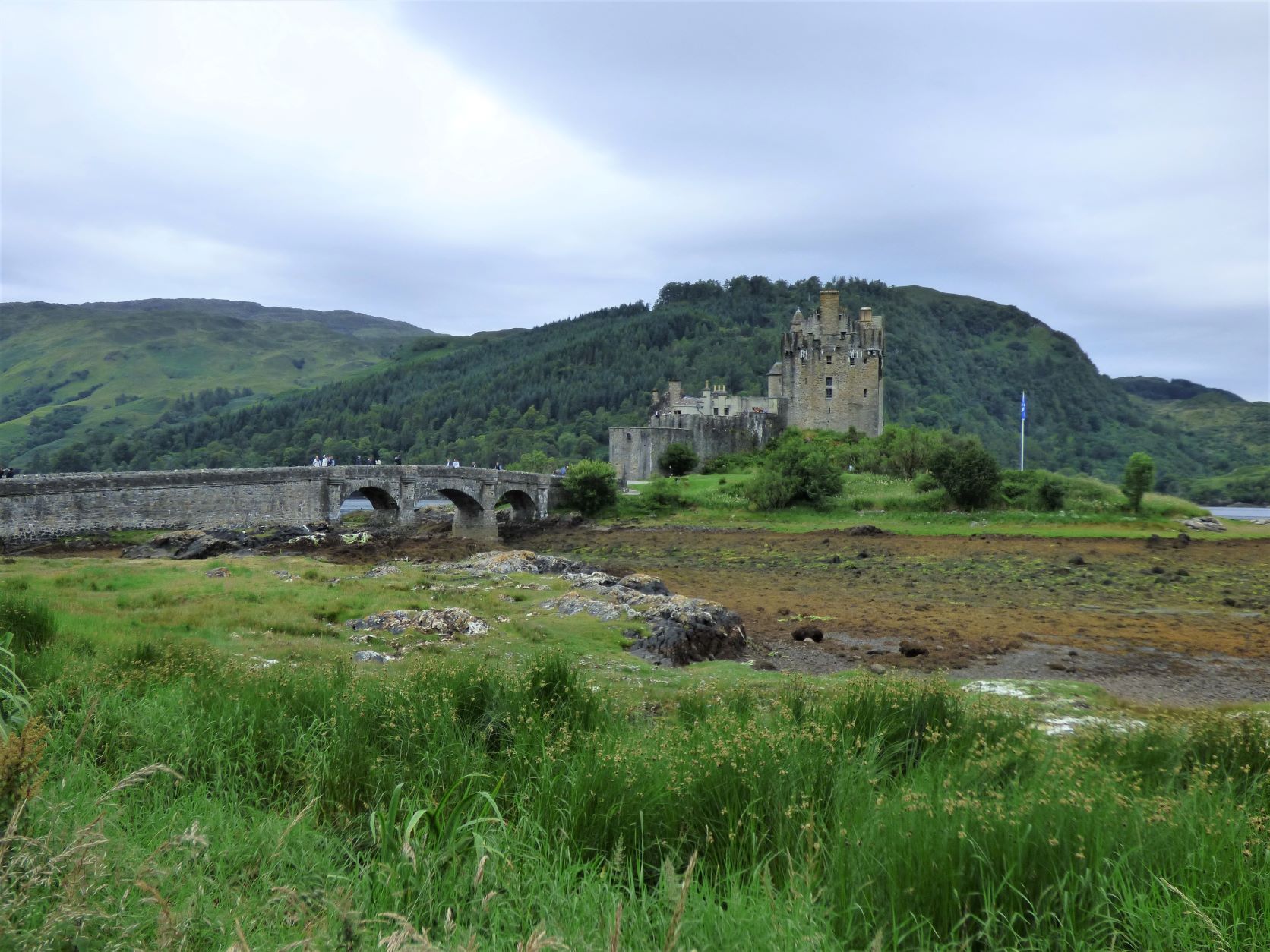
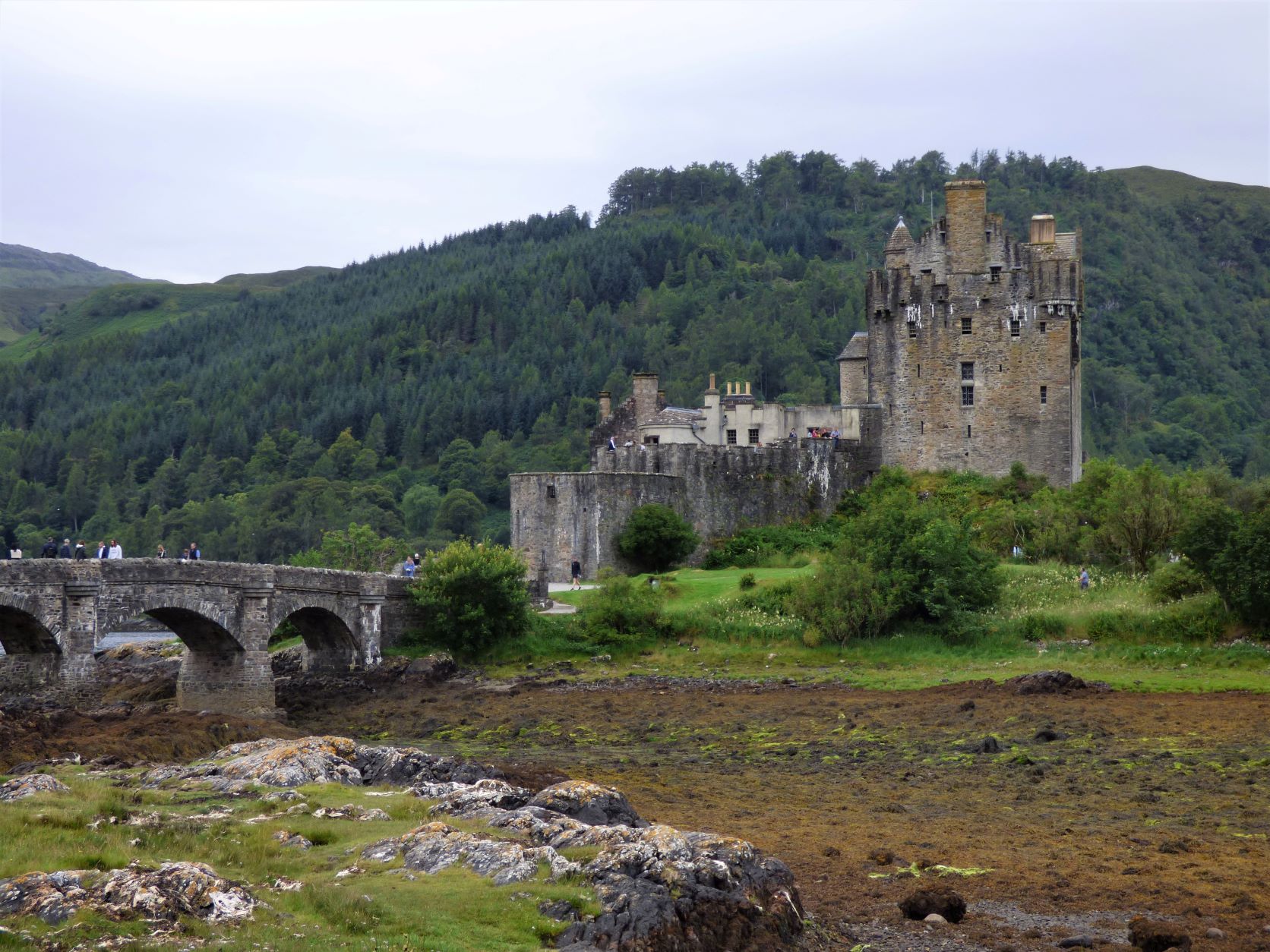
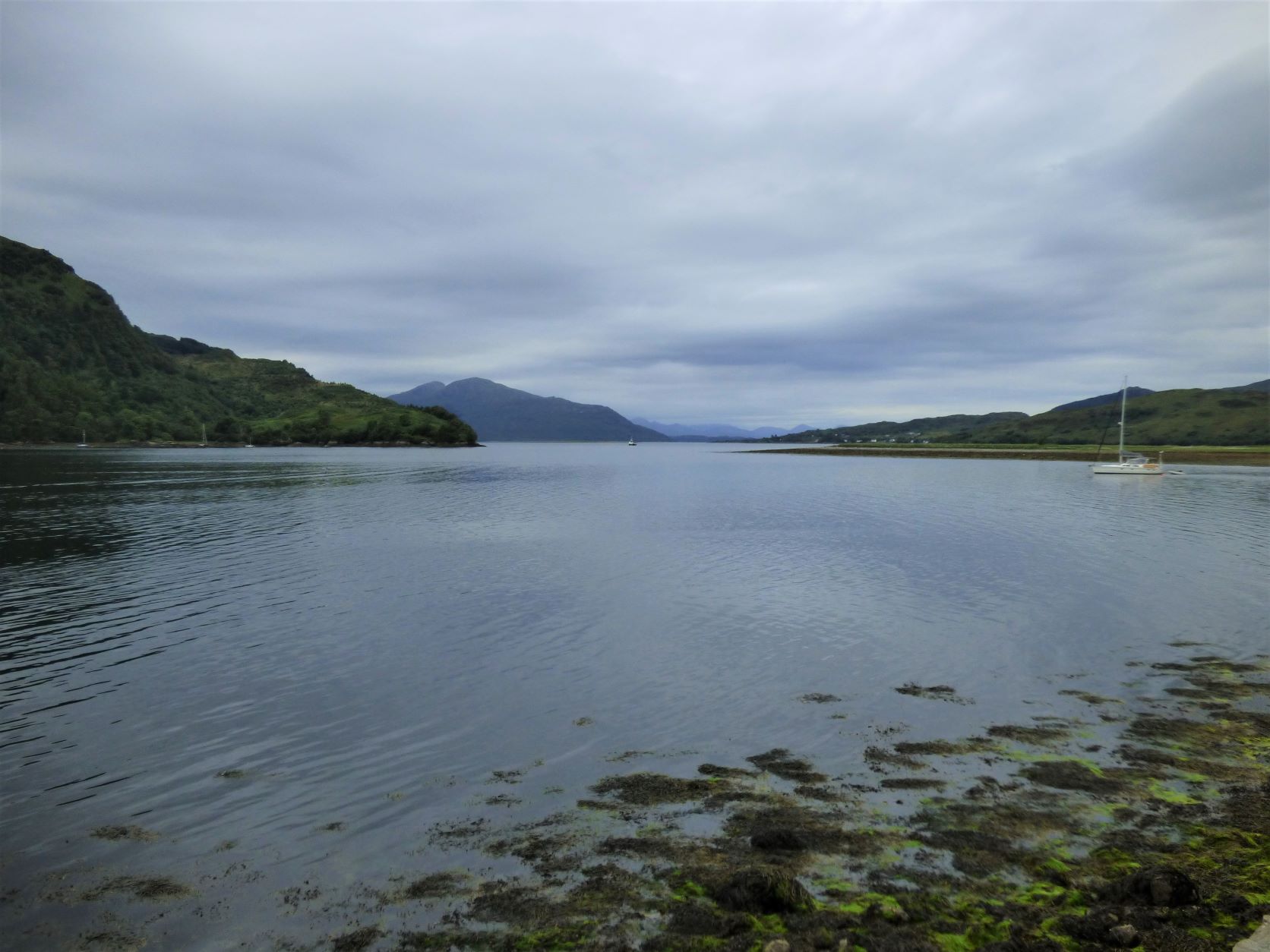
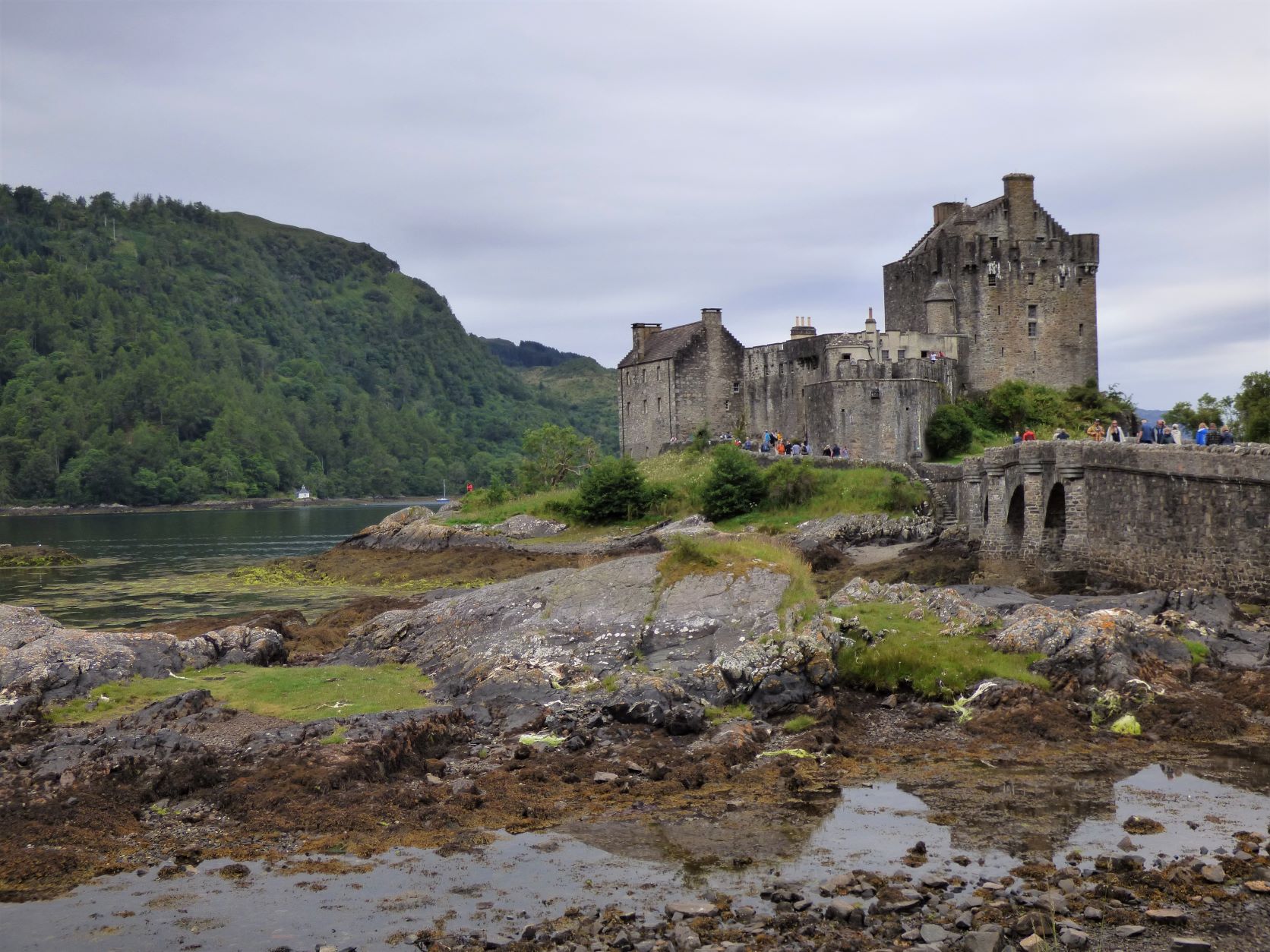
Our longest stop of the day was at Eilean Donan Castle, which is largely considered to be one of the most beautiful castles in Scotland. The castle guards Loch Duich. The original castle that stood on this location was built in the 13th century. It was added on to and then reduced in size at various points over the next several centuries. In the 1719, it played a role in the Jacobite Uprising, and was subsequently destroyed by the British. For 200 years, it was left in ruins. In 1911, reconstruction began, and over the next twenty years it was rebuilt, using the original floorplan. Our tour group opted out of purchasing tickets to tour the inside of the castle, instead paying a small fee to walk around the outside.

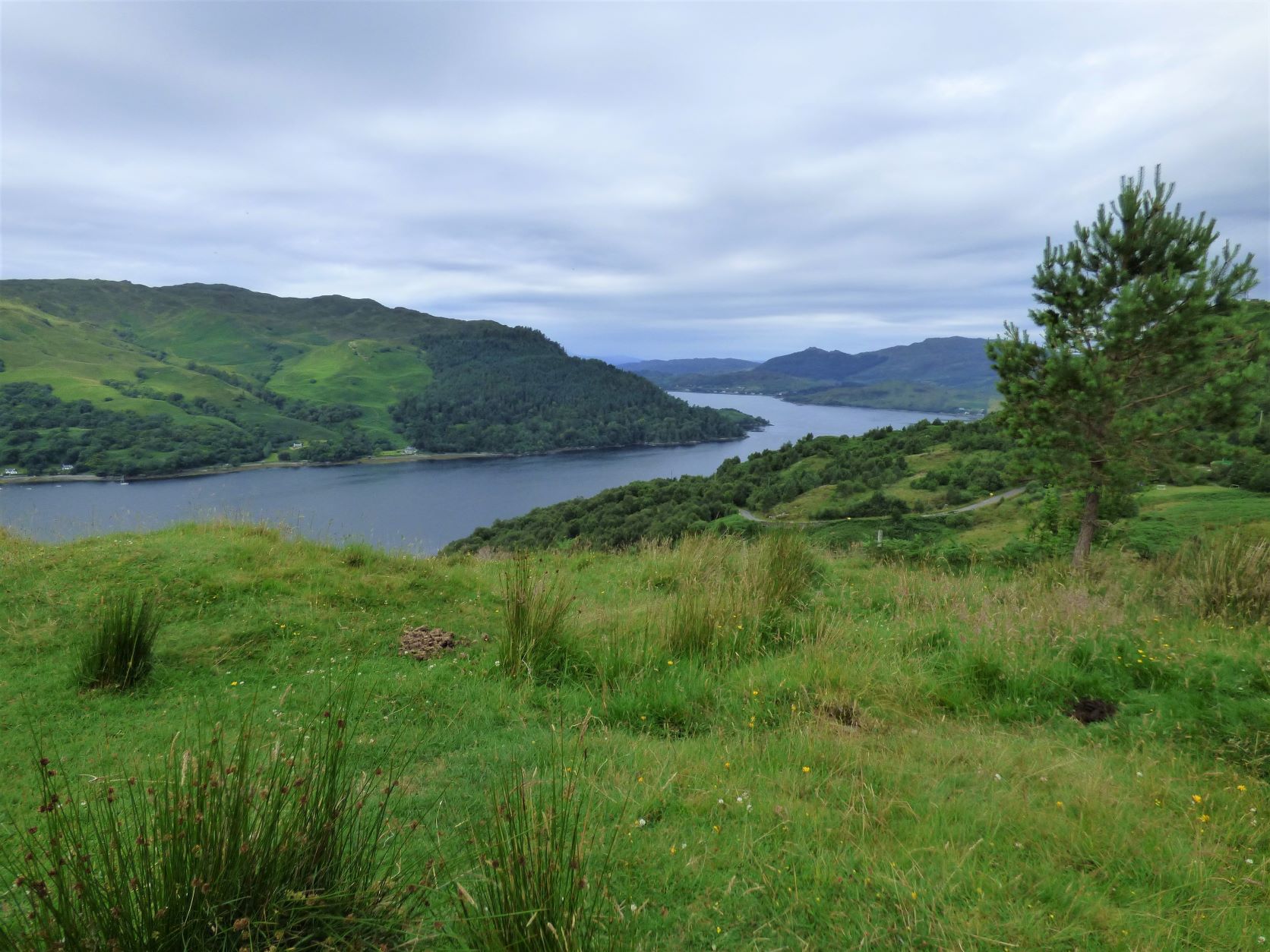
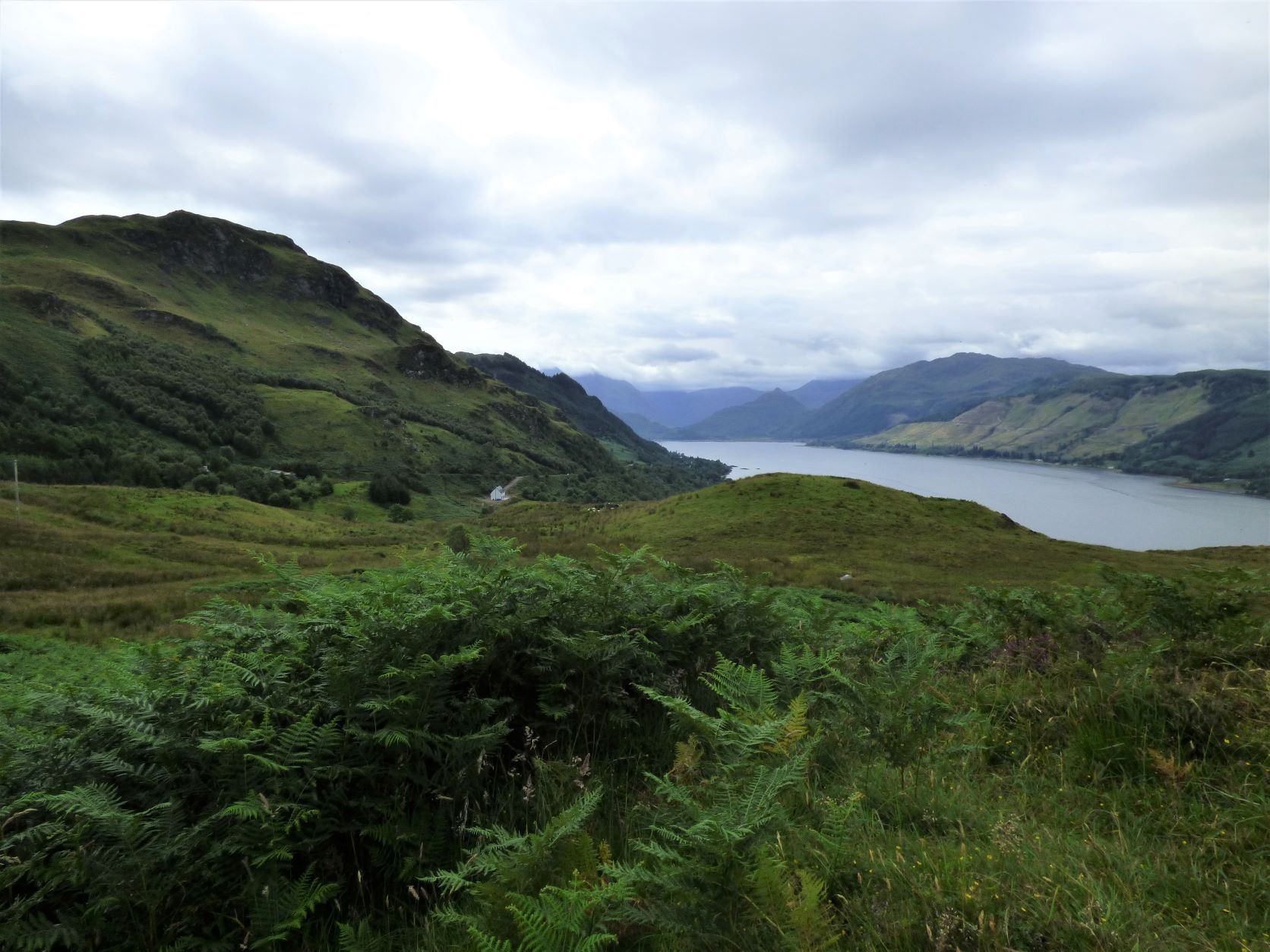
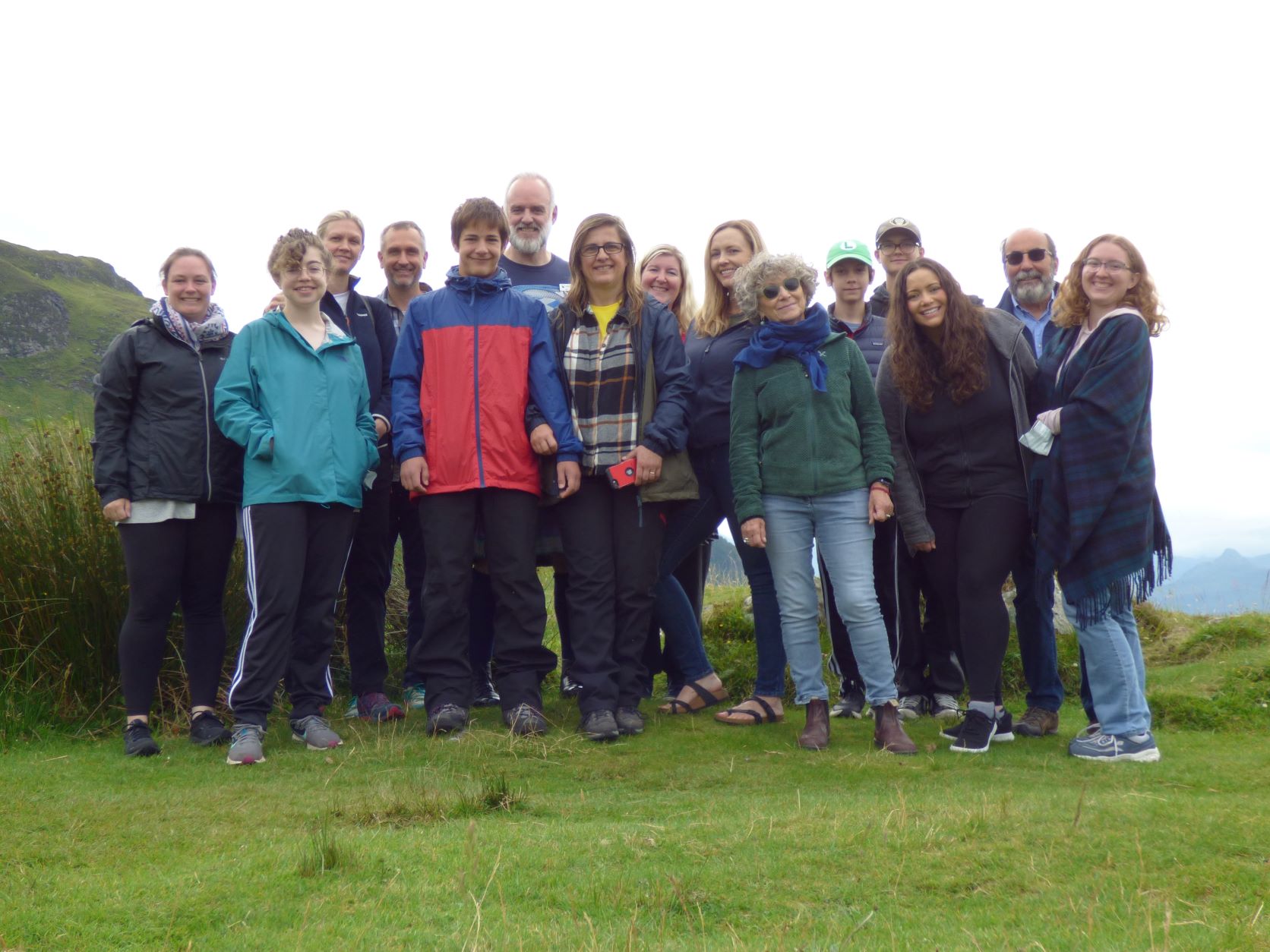
Before heading out, our guide drove us to the Carr Brae viewpoint, which provides an incredible view of the castle and loch from above. We also took a group photo of our tour group while we were there.
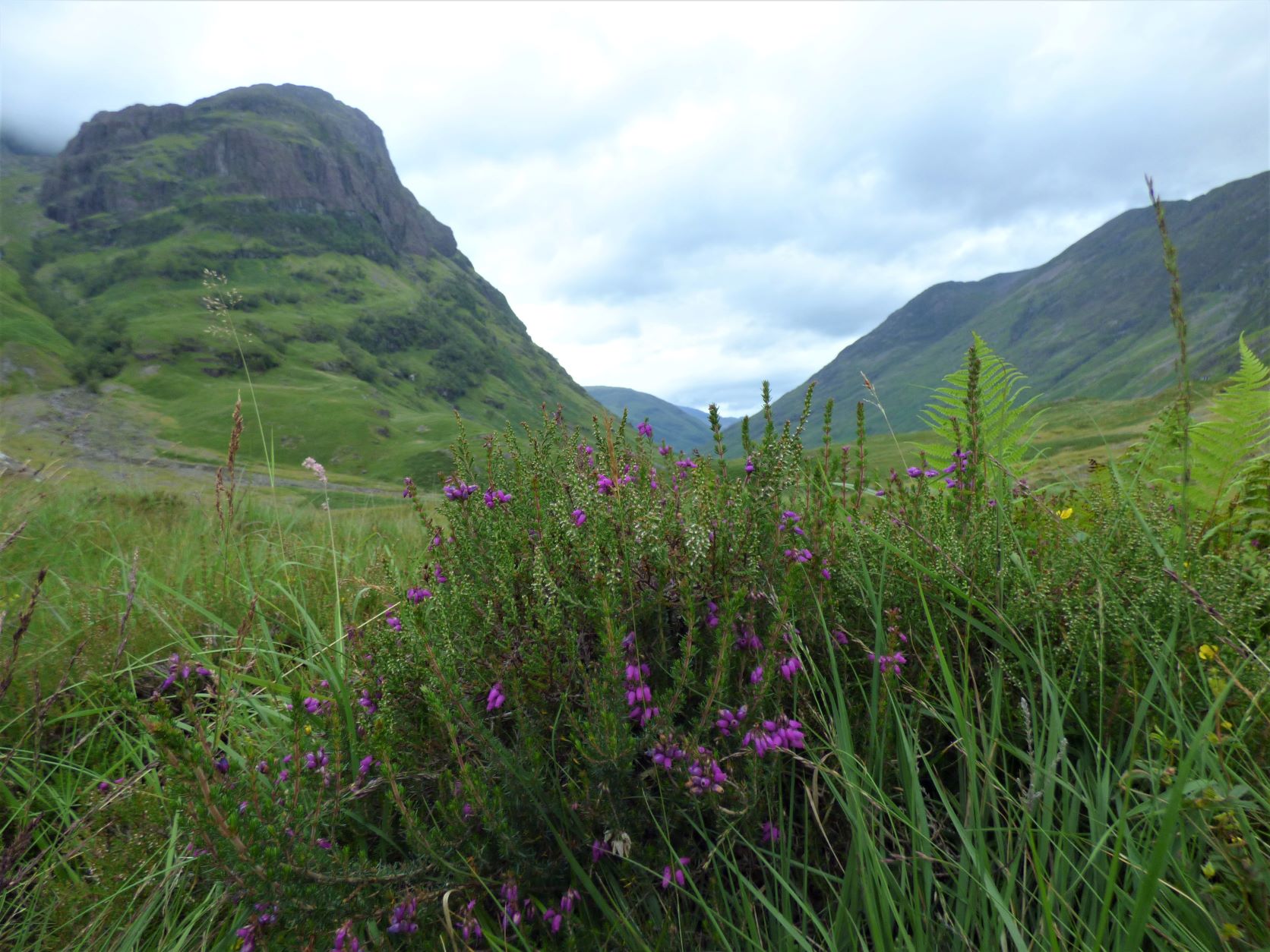
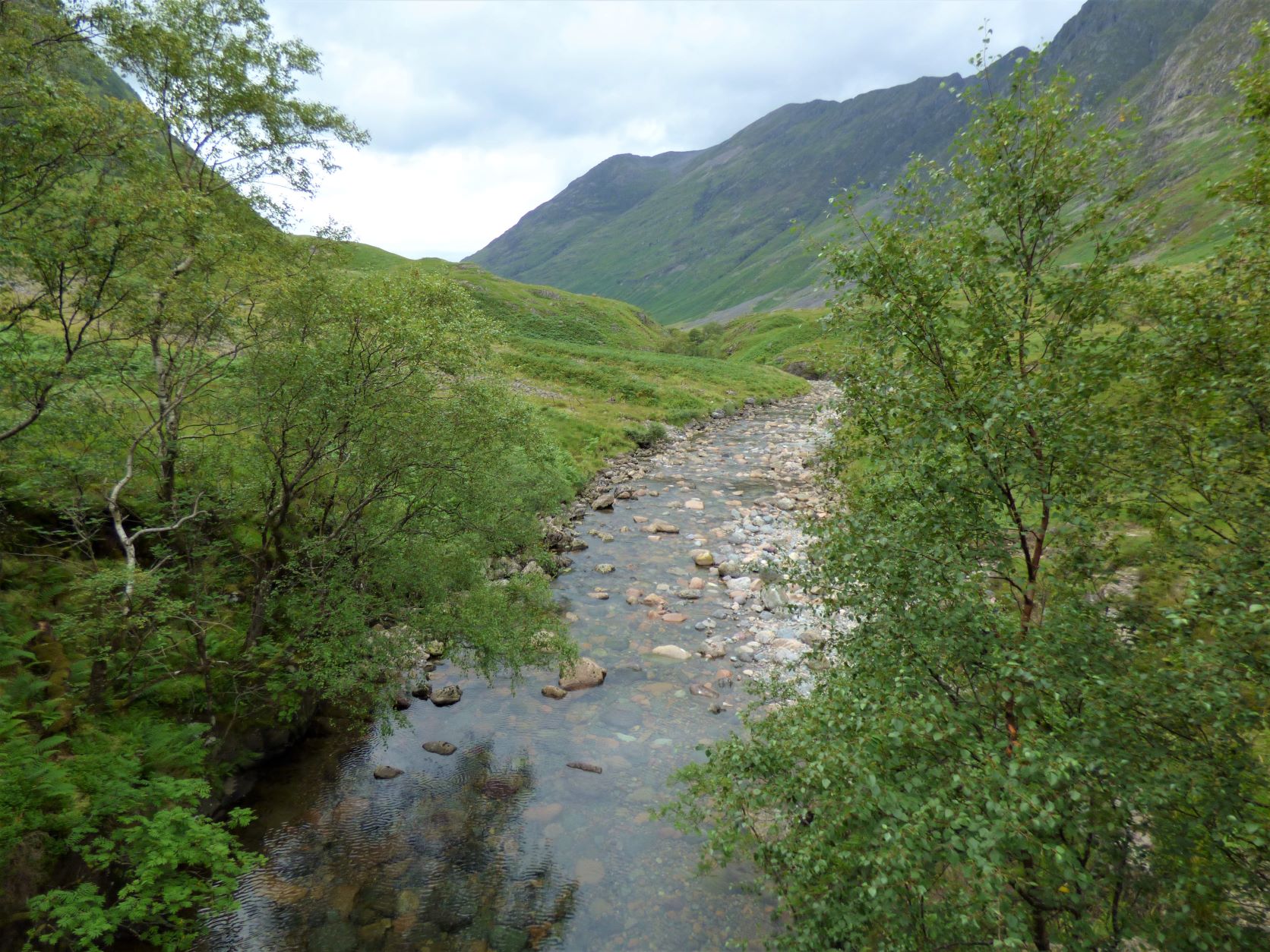
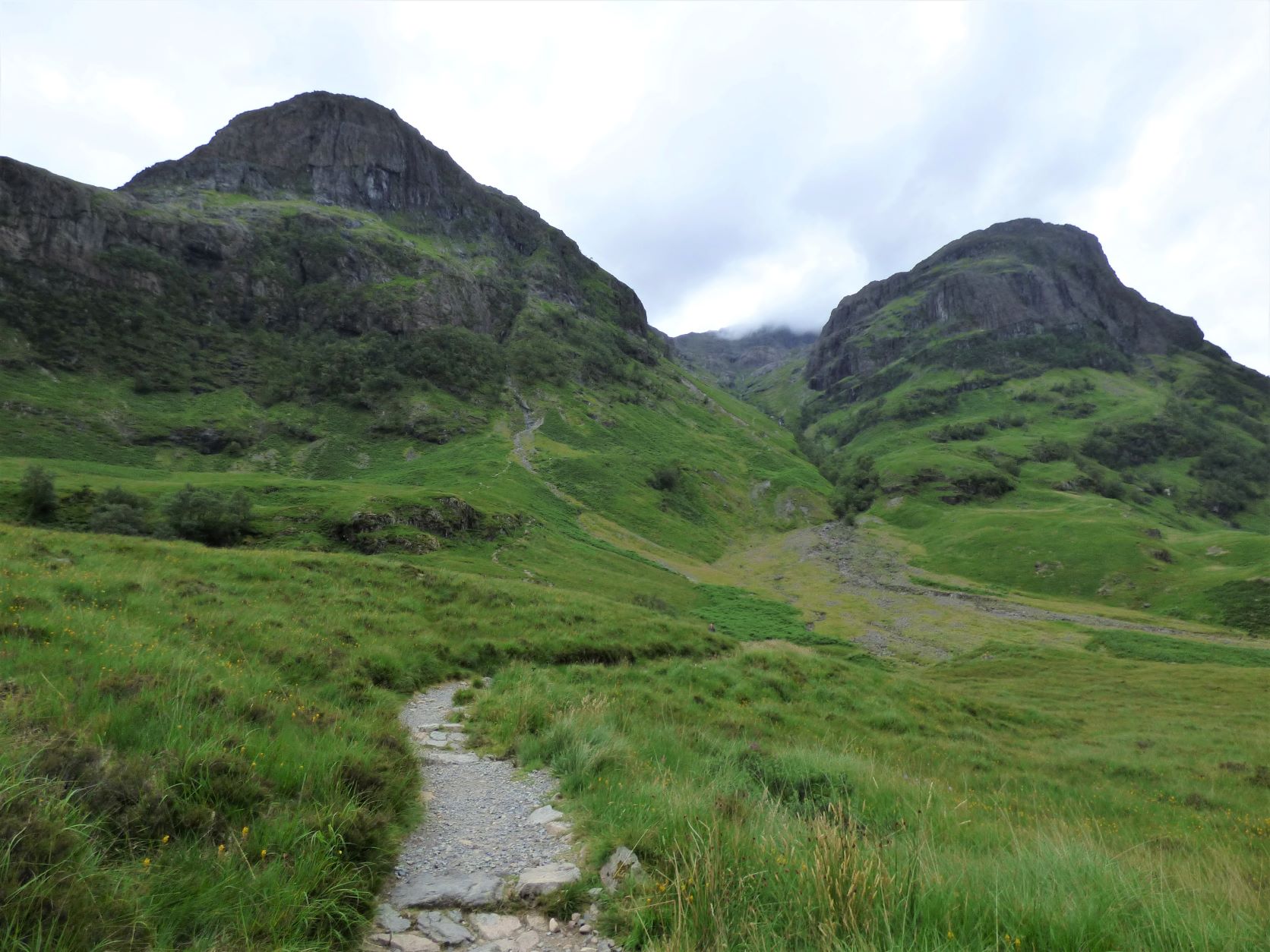
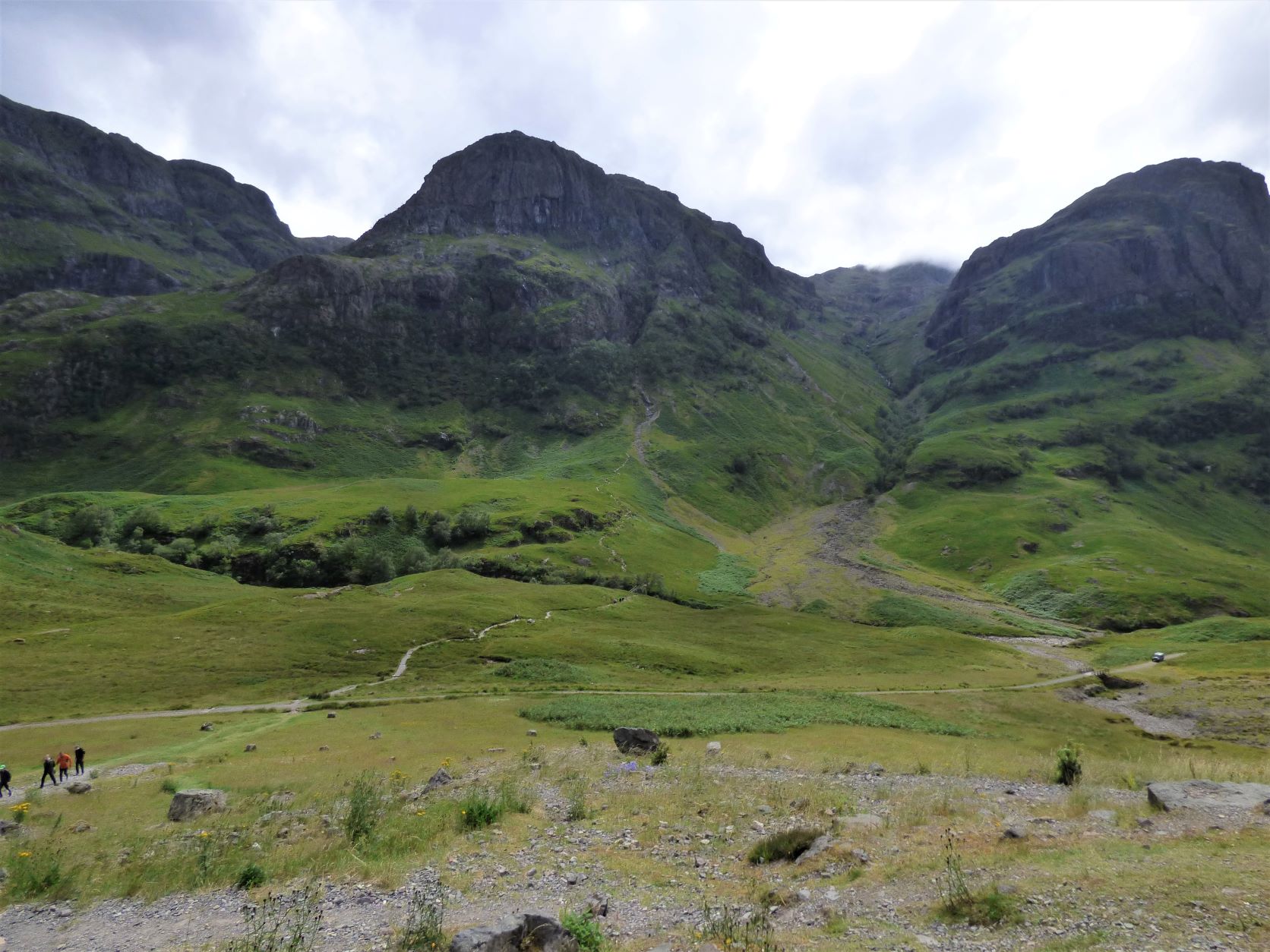
We then drove towards Edinburgh, stopping for lunch in Fort William. We spent about an hour in Glencoe, taking in more views of the incredible valley.



We also stopped at Loch Ba and Rannoch Moor, an expanse of Boggy Moorland.
Finally, we ended our tour back in Edinburgh. The tour was ten incredible days, filled with scenic landscapes and history lessons spanning from the Neolithic age to present-day. I especially loved the time we spent on the Orkneys, but the entire trip was wonderful!

Beth, this is absolutely stunning!
What an incredible journey and memories that will last a lifetime. Thank you for taking me along!
It was such a wonderful trip! Thanks for following along!